Japan’s JR East Railway (East Japan Railway Company), operator of the Hokuriku, Joetsu, and Tohoku Shinkansen lines diverging north of Tokyo, recently launched its latest Series E8 Shinkansen train sets on the Yamagata mini-Shinkansen line to the Yamagata prefecture.
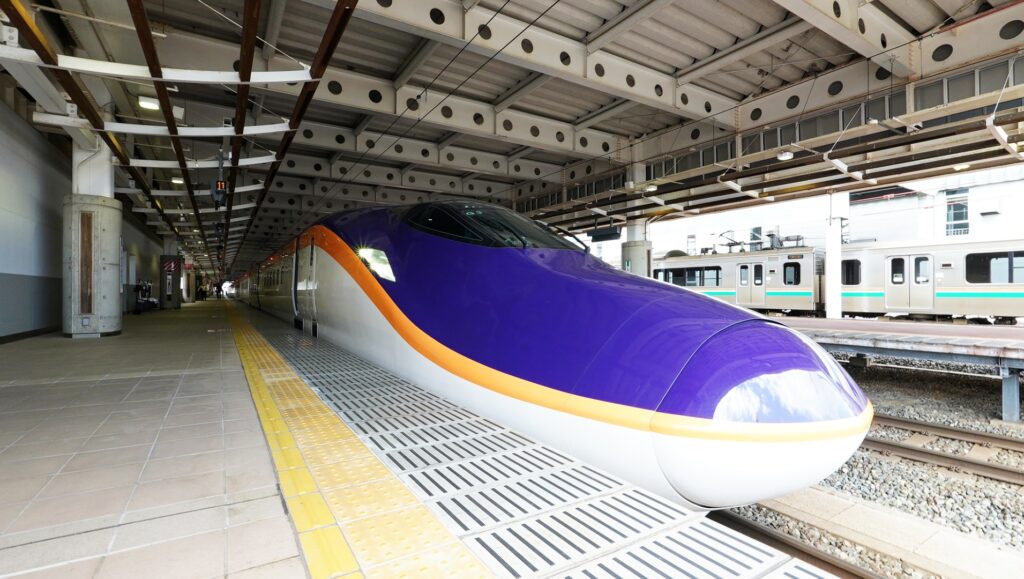
The Series E8 Shinkansen launched for service on March 16, 2024, only three weeks ago. I first learned about this train in February, while taking the Shinkansen E7 series on the Hokuriku service. This is the first new model of Yamagata Shinkansen bullet train in about 20 years, with the legacy E3 series serving the prefecture and Tsubasa Service since launching in the 1990s.

It’s worth noting that on the exact same day, JR East also launched the new Hokuriku Shinkansen extension to the Fukui and Tsuruga area in western Japan, another service I will eventually post here on Oscape. Eventually, that line will be extended to Kyoto and also Osaka, giving riders a third option between Tokyo and Osaka (the second will be the new Chuo Shinkansen Maglev line currently under construction).
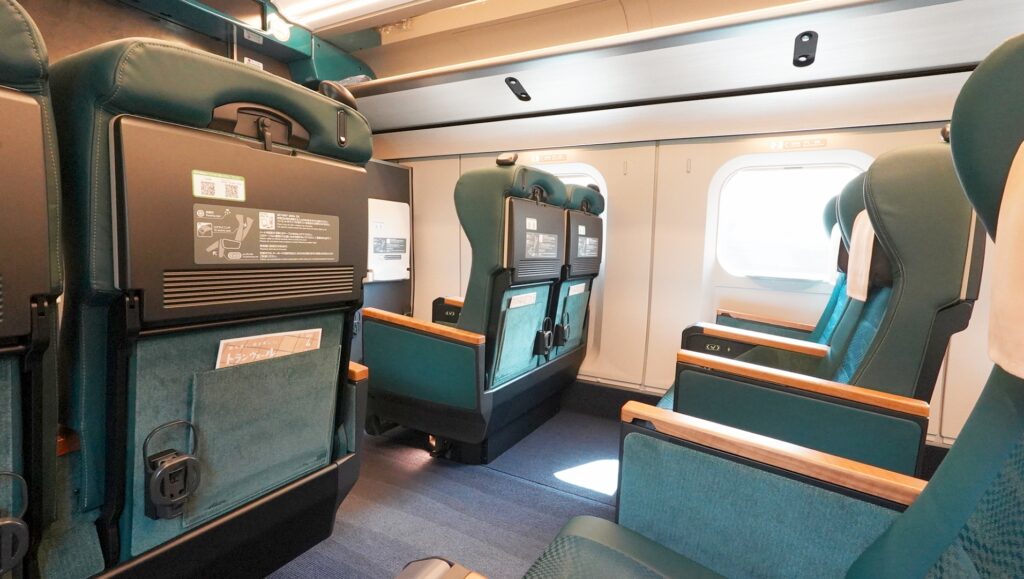
Read my review in Standard Class on the outbound journey from Tokyo to Shinjo here; this review covers the return in Green Class back to Tokyo.
Background
The E8 Shinkansen is a massive upgrade over the previous Series E3 Shinkansens that also run on this route. The Yamagata line was upgraded to Shinkansen services in the 1990s, and the track was converted from Japan’s narrow gauge rail system to a Shinkansen standard gauge operation. However, the loading gauge on the lines has not changed – meaning these trains are narrower than other Shinkansen to clear the tunnels, tight curves, and narrower legacy platforms on the route.

The Series E8 Shinkansen car body is made of aluminium alloy to reduce weight, and the train is fitted with single-arm low-noise pantographs. These trains have five powered cars and two trailer cars, and can operate under both 20kV and 25kV 50 Hz electrification. The trains are fitted with an active tilting suspension to improve ride comfort. To improve stability in the heavy snow this line sees in mountain passes, the bogies are equipped with heaters to prevent snow build up.
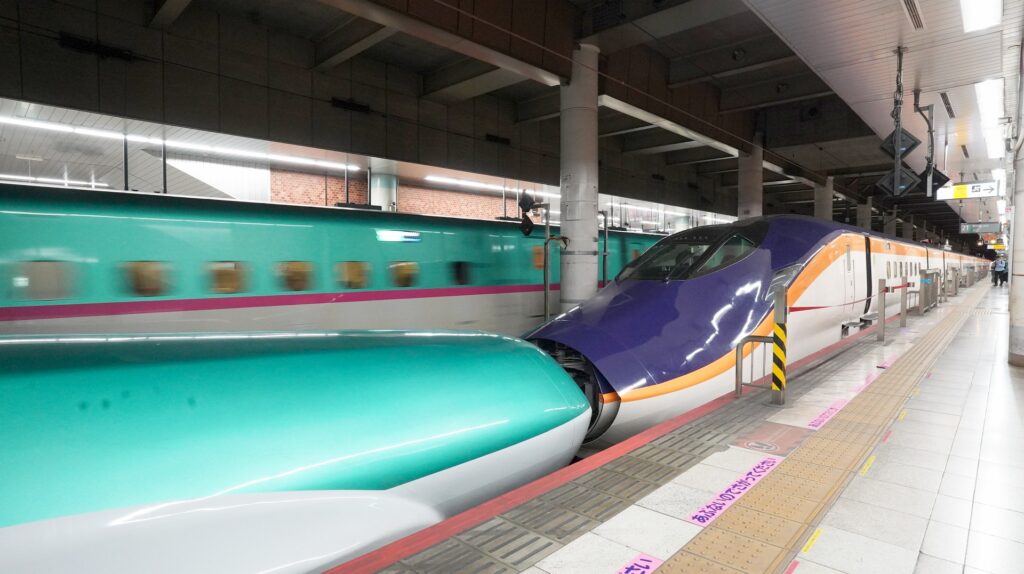
The maximum operating speed on the Tohoku Shinkansen section has also been increased from 275km/h to 300km/h (from 171mph to 186mph) between Utsunomiya and Fukushima, operating in combination with the Series E5 Shinkansen on the Tohoku services to Sendai. The maximum operating speed on the Yamagata mini-Shinkansen section remains 130km/h (80mph). With the E8 series, these trains are capable of running at the full top speed on this route, resulting in a four minutes improved ride time on the full route.
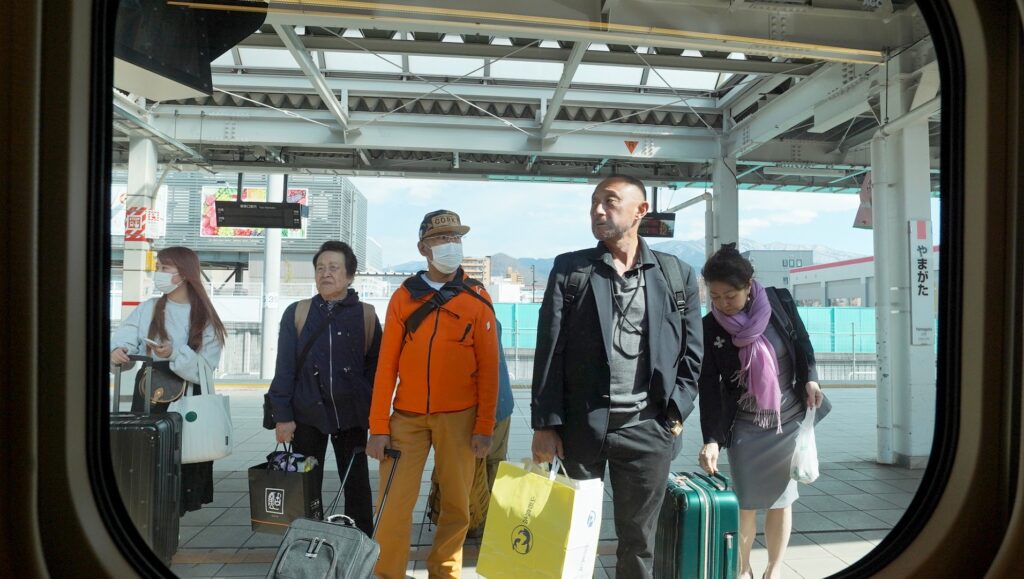
While that may not sound like a lot from a passenger’s perspective, operationally this is massive for the railway, as it allows all trains to run at the same speed on this line rather than at a variable differential, thereby increasing train capacity on the entire line. In other words, 186mph trains will no longer have to follow behind 171mph trains, and this will increase the number of trains per hour that can operate on the main line.

Just like if you were following a slow car or truck driving on a single lane highway, on the railway this creates a backlog of trains flowing behind the slower train at the same speed. Now, the line’s train frequency can be increased without building additional infrastructure.

The other mini-Shinkansen on this line, the Akita Shinkansen, operates with very modern Series E6 train sets that were launched in 2013.
Series E8 Shinkansen Train Schedule Thru June 2024
If you’re planning on taking the E8 or want to take the E8 for the train launch, this line still shares services with the legacy Series E3 trainsets. At the time of writing, there were only 3 Series E8 Shinkansens in operation.
Below is the upcoming schedule for the next few months. Note that the top Rows are FROM Tokyo, TO Shinjo, whereas the bottom are TO Tokyo, FROM Shinjo.
March 2024

April 2024

May 2024
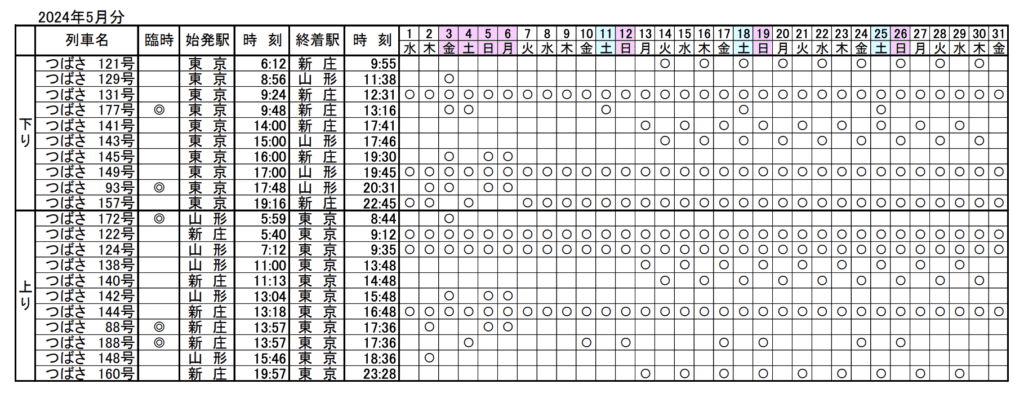
June 2024
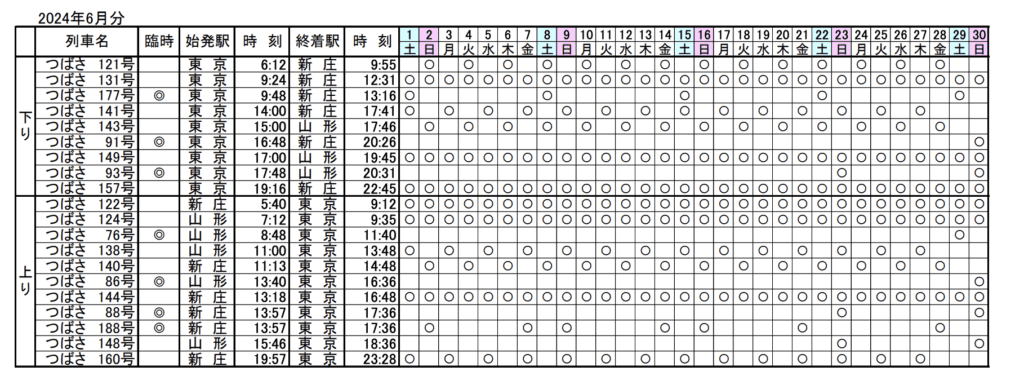
Booking the Yamagata Shinkansen Series E8 in Green Class
For the ride in Green Class, I booked my ticket many days in advance. This is because the Green Class has a much smaller capacity, and as I was checking tickets in both directions – there was only one window seat left in this cabin!
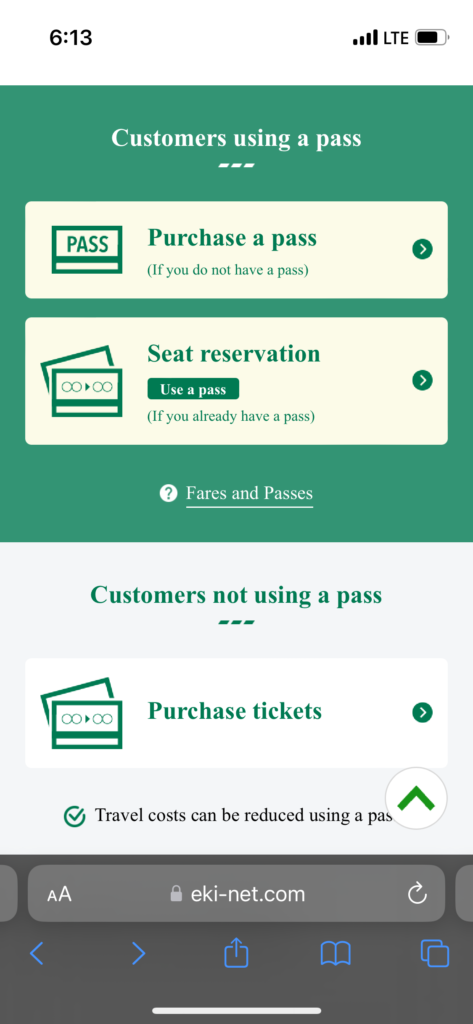
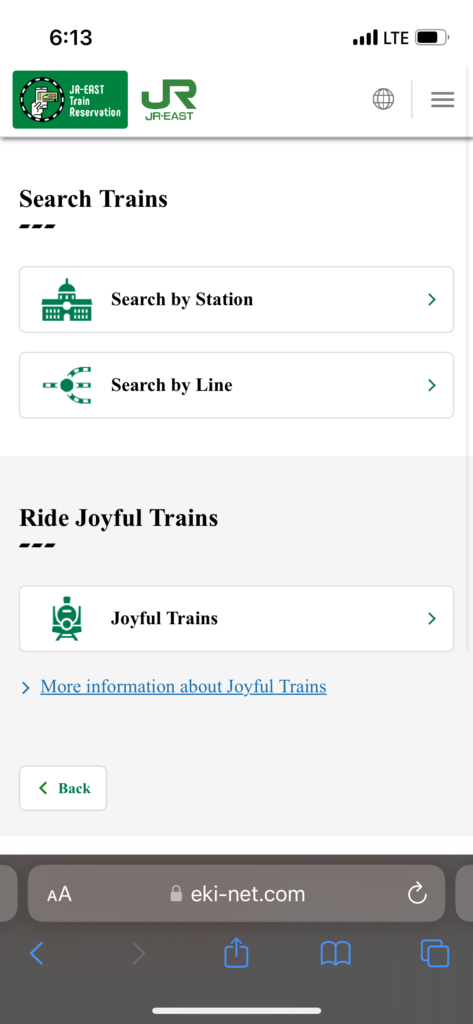
The booking process is straightforward – first select “Purchase tickets,” then “Search By Station.”
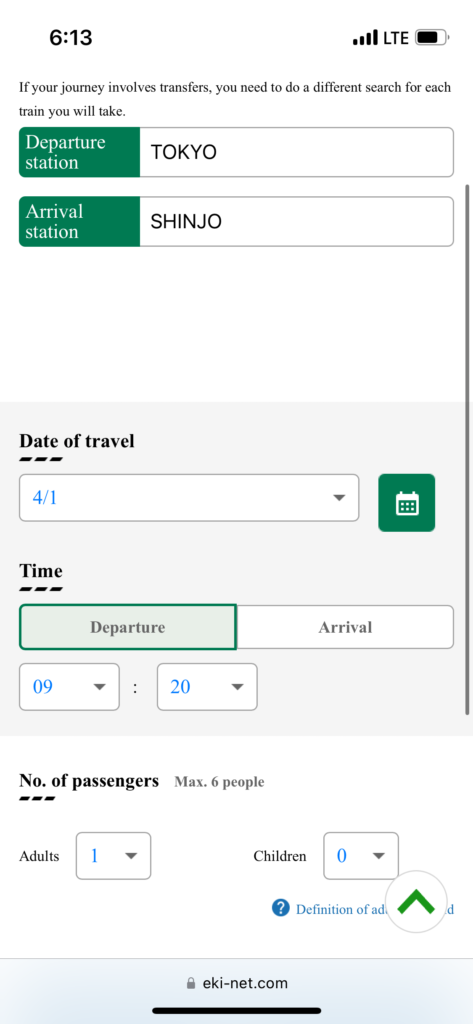
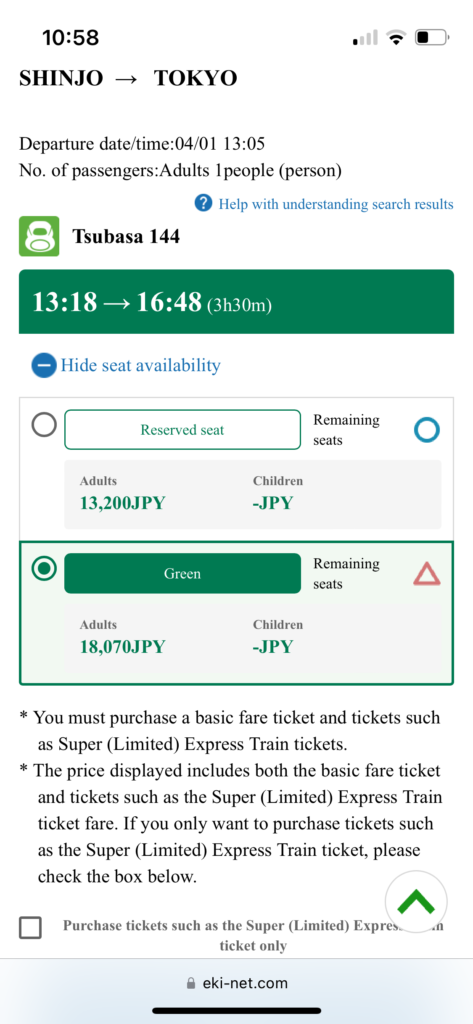
I found the specific train I wanted – Tsubasa 144. I chose a Green Car Seat. This was approximately $115 USD for a one-way ticket, versus Standard Class at $83 USD.
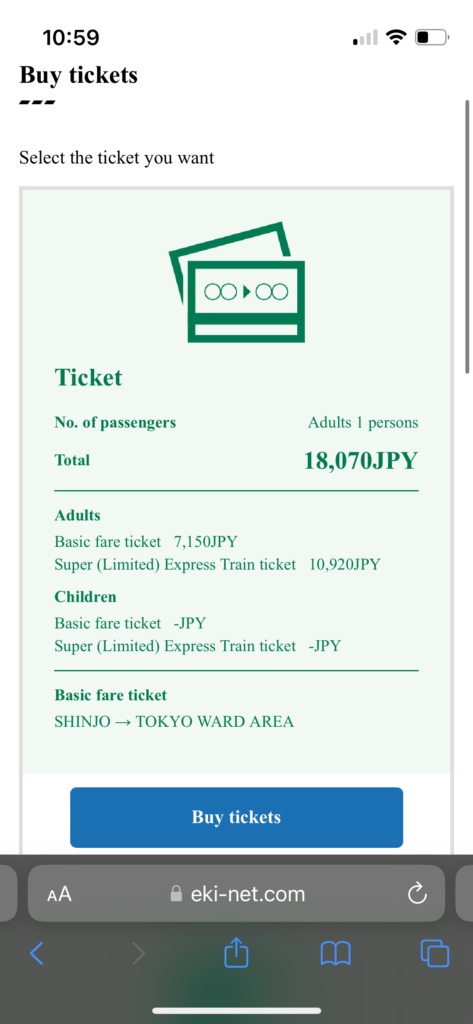
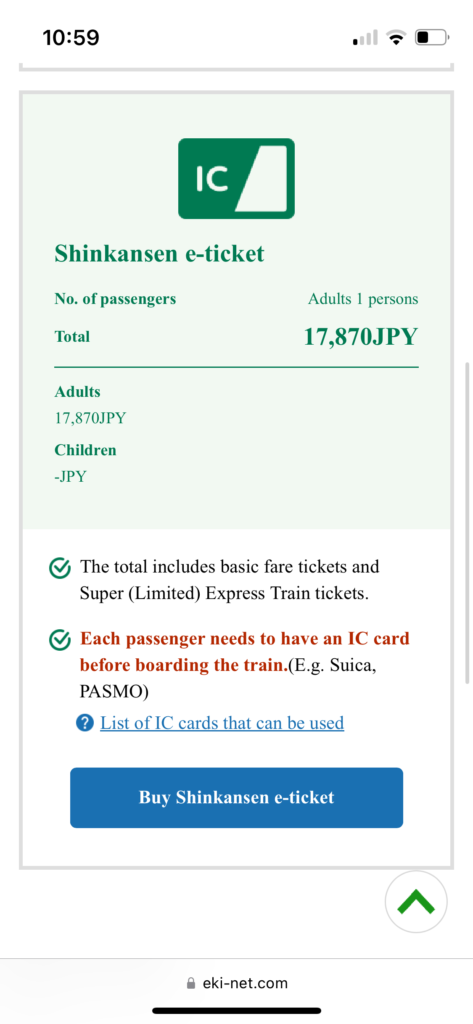
I also chose a Shinkansen E-ticket since I would be using an IC card for the reservation. This is slightly less expensive than a regular ticket.
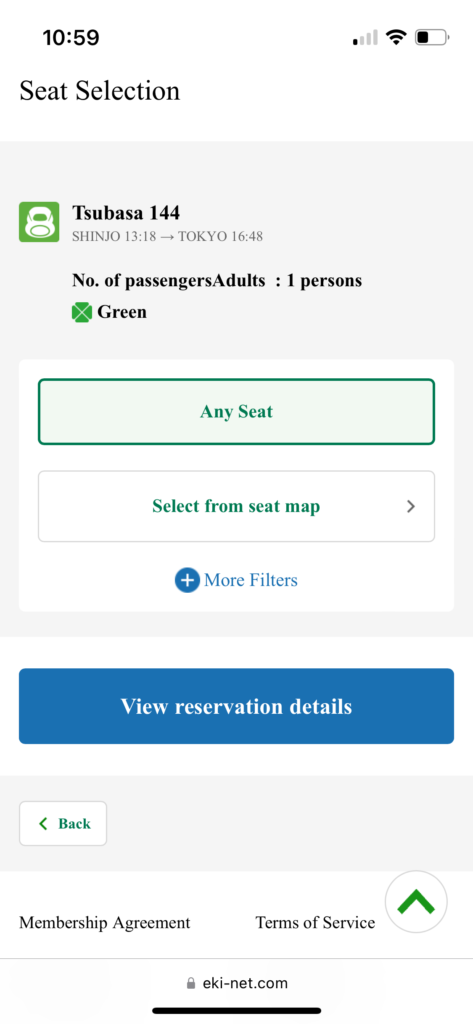

Unlike in Standard Class, there was hardly any room available in Green Class. I was most fortunate the pick up the last window seat available on the train.
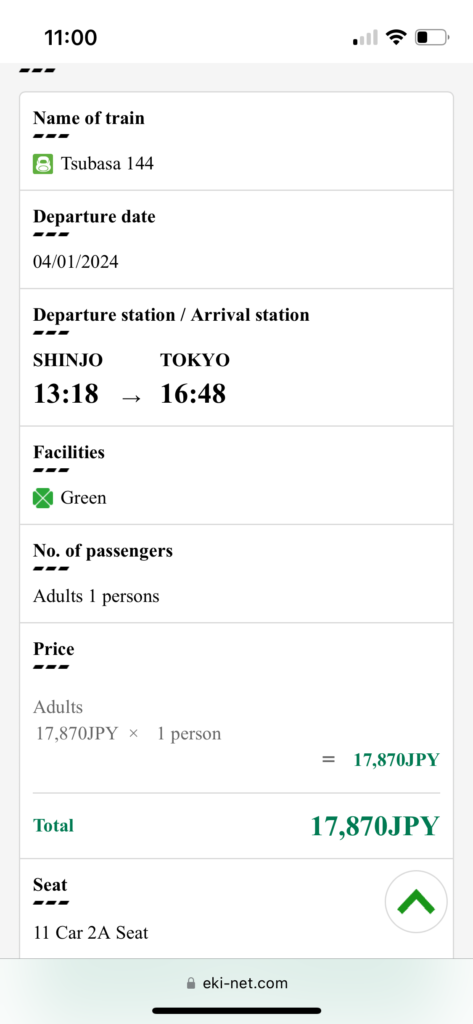
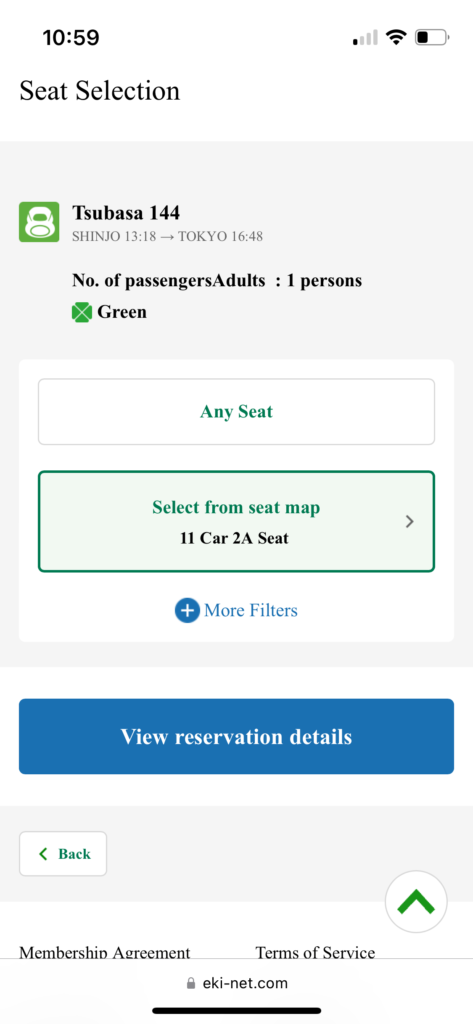
I highly recommend to all readers using the Shinkansen to link your reservation to an IC card.
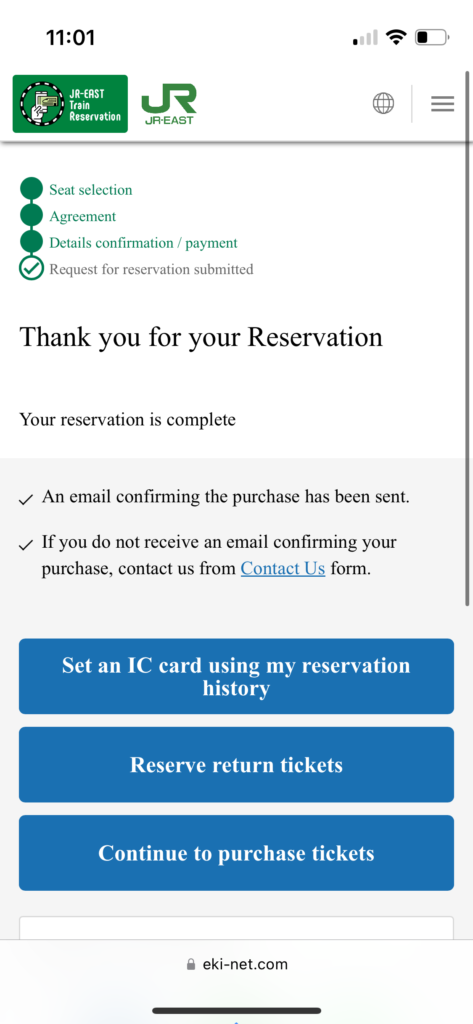
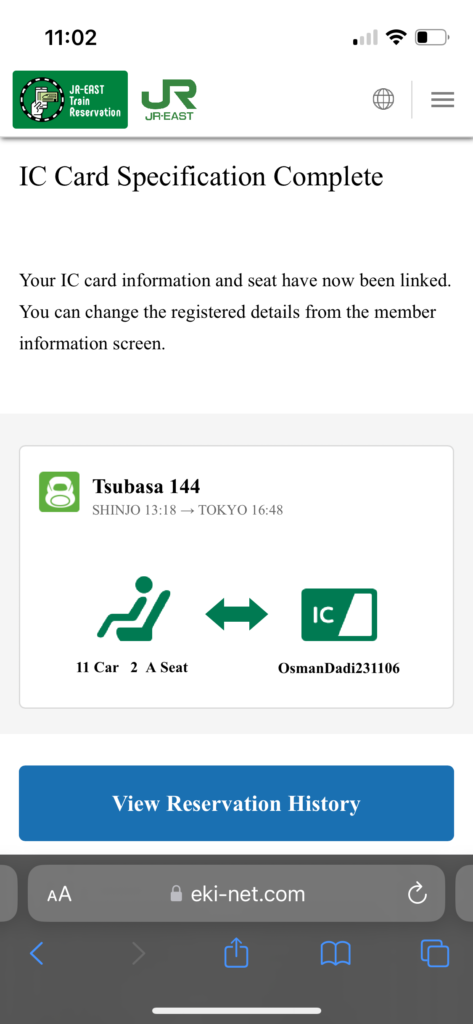
This critical step avoids all lines associated with taking the Shinkansen, which can be very long at times!
Series E8 Shinkansen Train Configuration
The E8 Series Shinkansen starts run in Shinjo independently, then once the train reaches Fukushima, they are joined to a Series E5 Tohoku Shinkansen service coming from Sendai in northern Japan, for the remainder of the run to Tokyo.
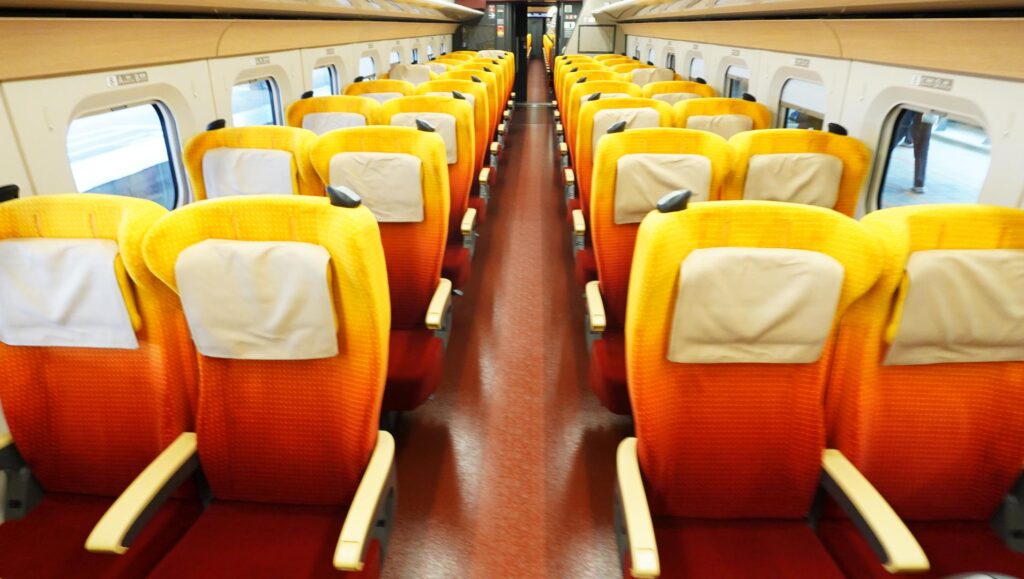
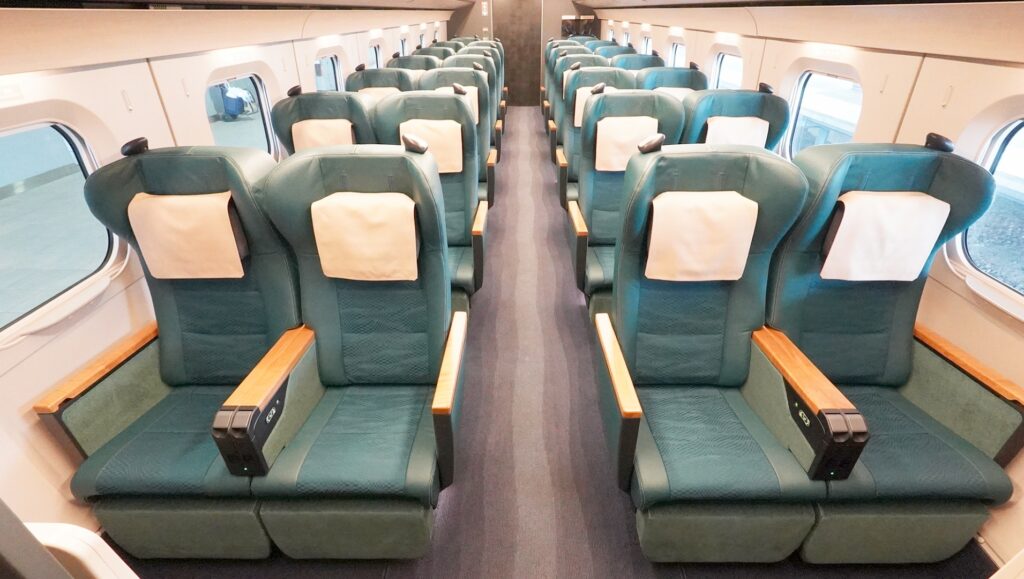
Both Green Class (Business Class) and Standard Class (Economy Class) are configured in a 2+2 orientation. This is because this train is much narrower than other Shinkansen, given that it operates on standard Japanese rail lines in Yamagata, with more limited clearances and tighter curves.
The capacity of the Series E8 Shinkansen is 355 seats, divided:
- 26 seats in the Green Car (Car 11)
- 329 seats in the Standard Cars (Cars 12-17)
Car 11 on one end of the train features the Green Car cabin. I’ve featured this in a separate review, on my southbound run on the the train. On the southbound run, this is connected to the Tohoku service at Fukushima – but, you get the front car between Shinjo and Fukushima.
Cars 12 thru 17 are for regular economy class, in various configurations. I was seated in Car 16 this time, although in retrospect I think Car 17 is the coolest for the Northbound run, given that it’s at the front end of the train.
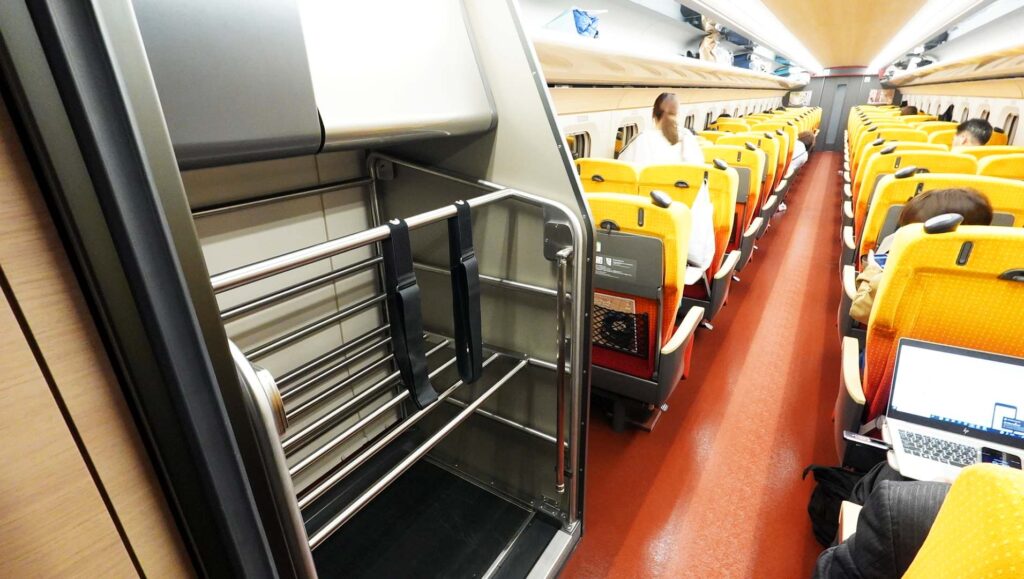
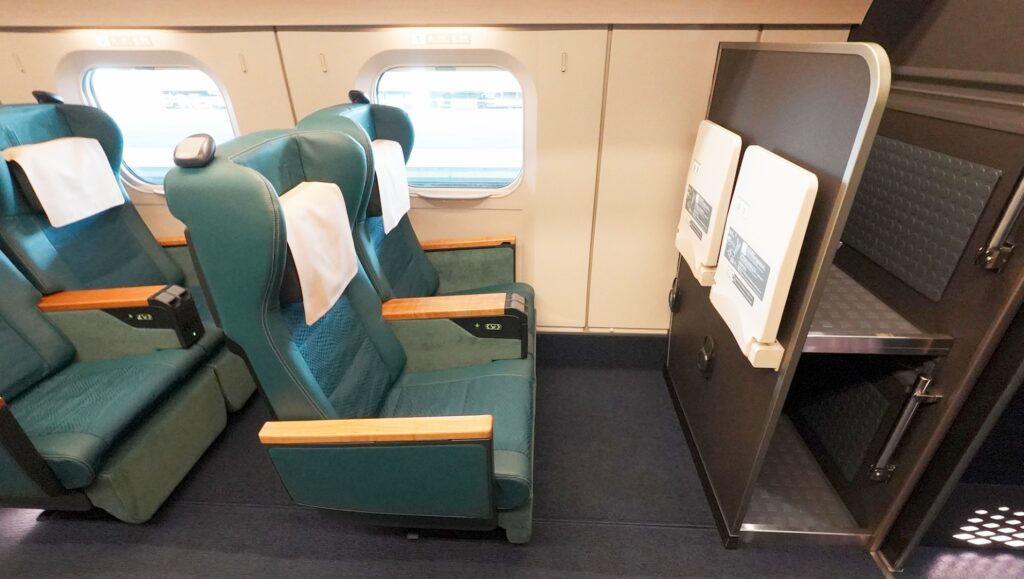
There are luggage racks available at the back side of each Standard Class car, and two These are wide and deep, but there are also only two racks available.
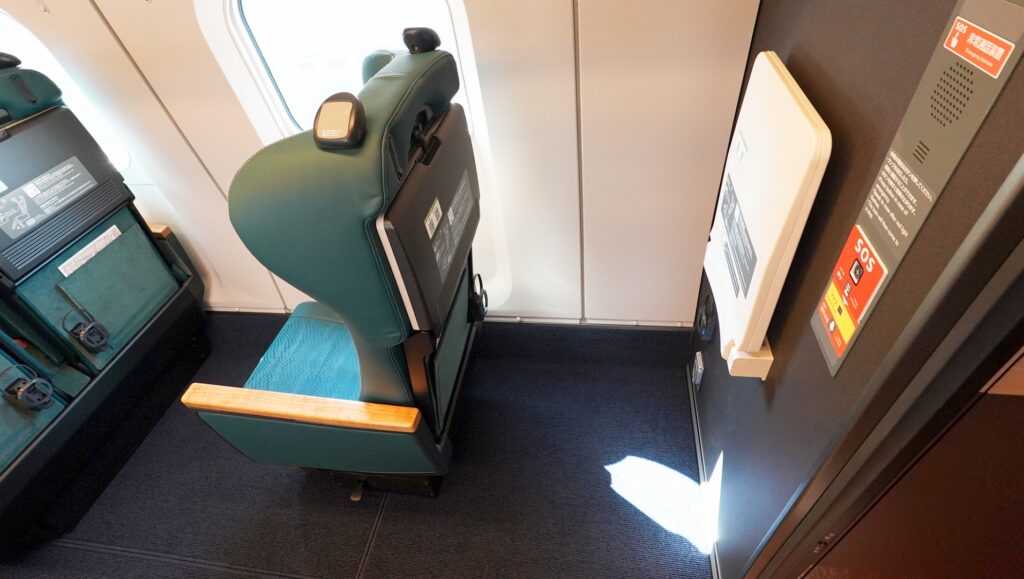
There’s also an area behind the last seat in each cabin, where you can store larger pieces of luggage upright.
Should I Choose Standard Class or Green Class?
Economy Class has significantly more availability, given the amount of seats in this cabin and the limited amount of seats in Green Class.
The cost differential between Economy Class and Green Class is about ~5,000 yen. I think this is worth it if you’re looking for a private cabin experience and also want slightly more comfortable seats for sleeping, with reading lights. If traveling as a couple, I actually prefer Standard Class.
The biggest difference is in the seats and their offerings.
Choose Green Class If
- You want privacy.
- You plan to sleep – the seats are much more comfortable.
- You need to read, and need an overhead reading light.
- If you’re heading southbound, you’ll. be at the very front of the train.
- You need additional working space for larger laptops and other papers.
- It’s also nice to have a second working and storage surface.
Choose Economy Class If
- You’re traveling with a partner or a group.
- You want to combine two seats into one with your partners, and sit/share the seat together.
- You want to save 5000 JPY and don’t care as much about seat comfort – they’re only mildly different.
- You want underseat storage for your belongings.
Series E8 Shinkansen Green Class Cabin
The Green Car is only in Car 11, which is at the front of the train on the southbound run from Shinjo to Tokyo.

There are just seven rows and 26 seats in the Green Car.
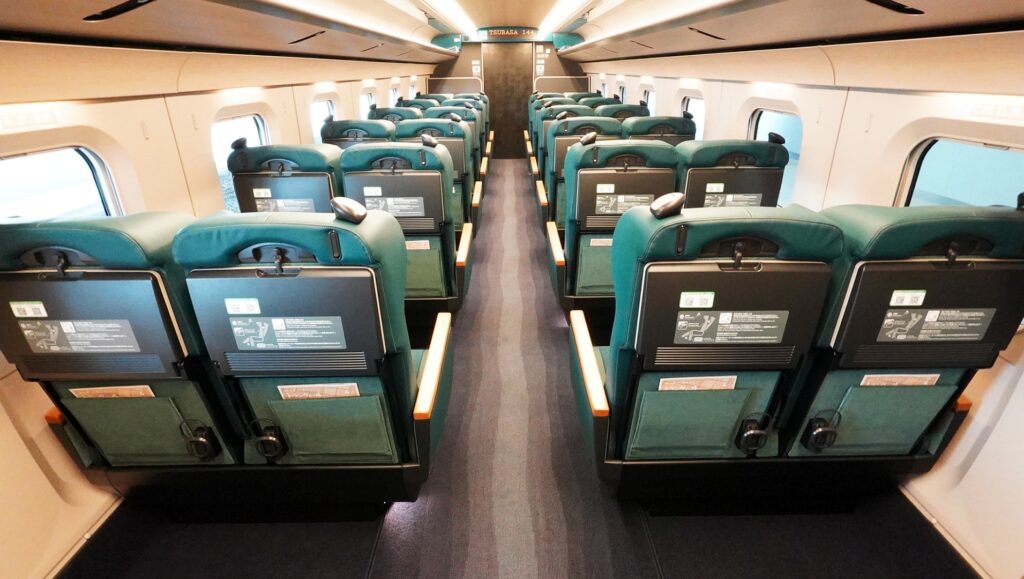
The last row in the cabin (and first row Northbound) has a set of single seats, for solo occupancy.
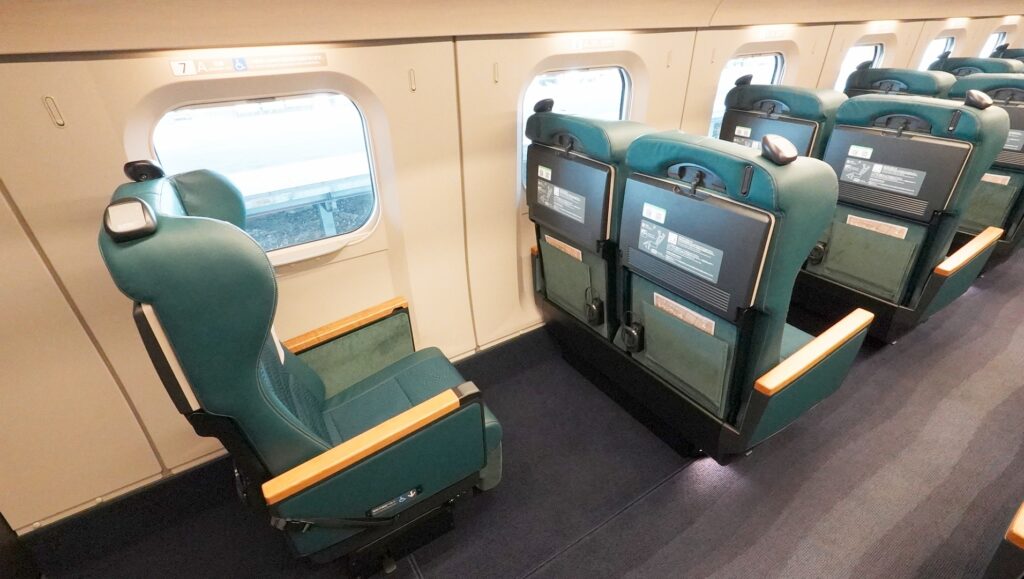
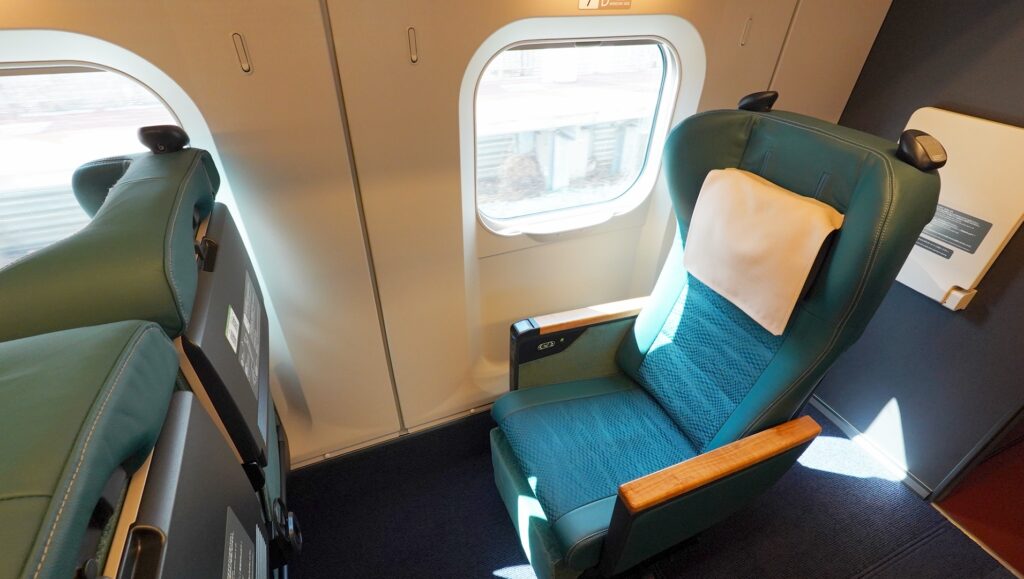
These are pretty nice if you want some more room around you and are traveling alone!
E8 Green Class Seat Details
The seats in the first-class Green Car are green, with motifs inspired by the prefecture’s Mogami River and Mt. Gassan.
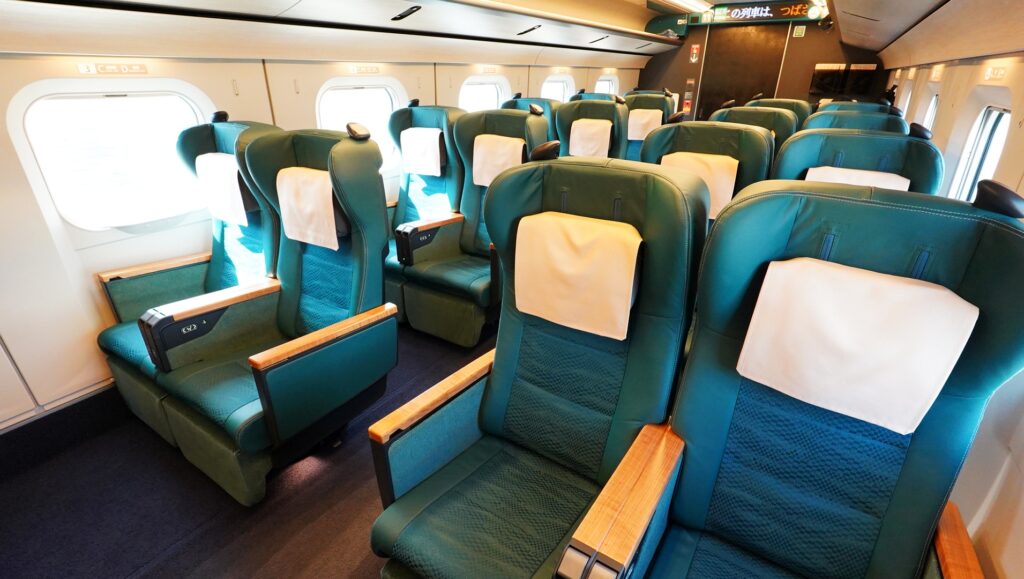
Though the Green Car is ultra-private with just 26 seats available, it’s very easy for this to get booked very quickly. These seats have a different configuration than those in Economy Class, and some differences are significant. I’ve highlighted them above.

The Green Car seats are extremely comfortable. The headrests have a padding that moves up and down.


The headrests and seats are leather padded and have a central strip that’s a patterned fabric.

The Green Car has teal-green seats, with green leather and a green-blue checkered pattern.
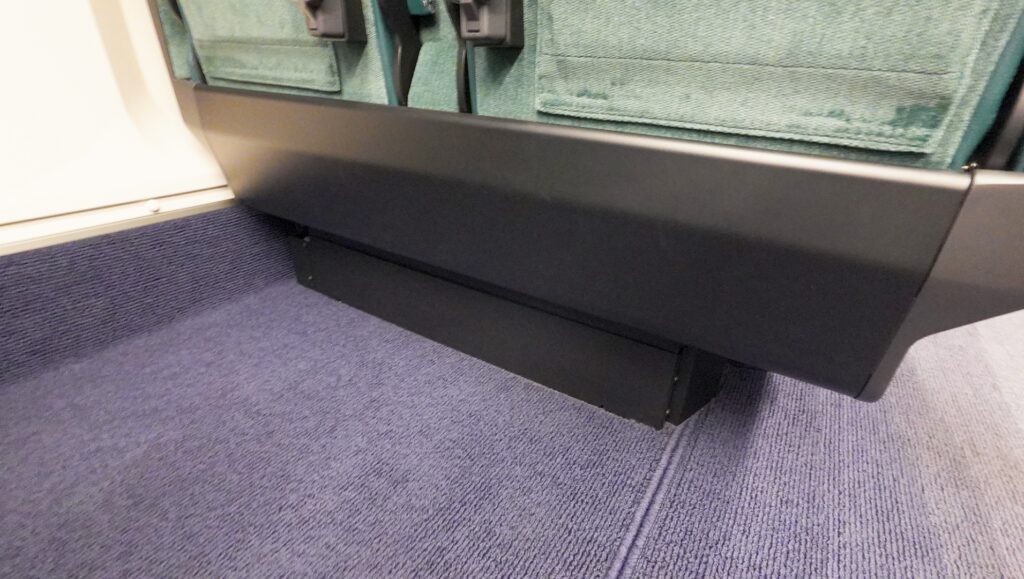
There’s no under seat storage here…
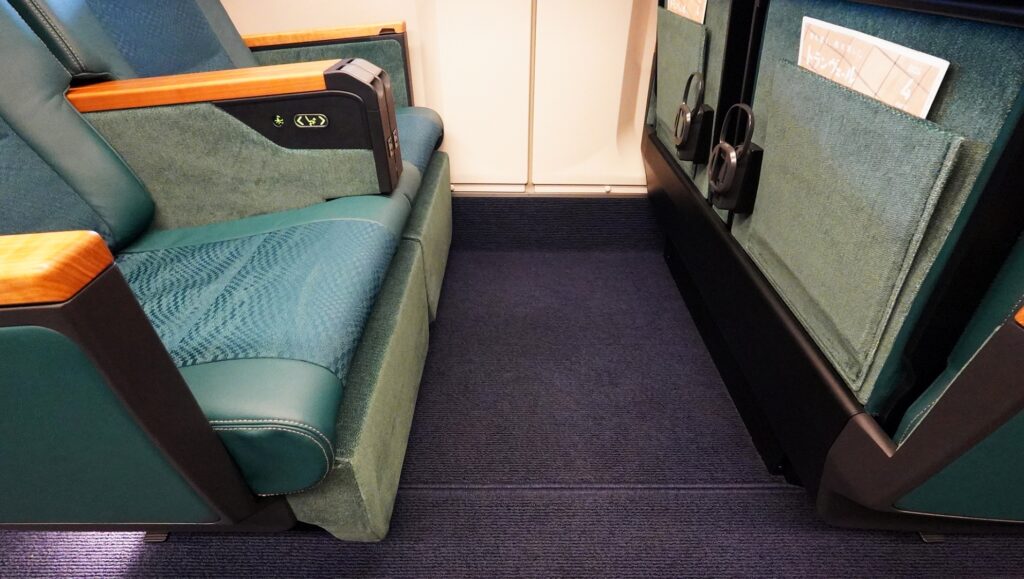
…but plenty of legroom.
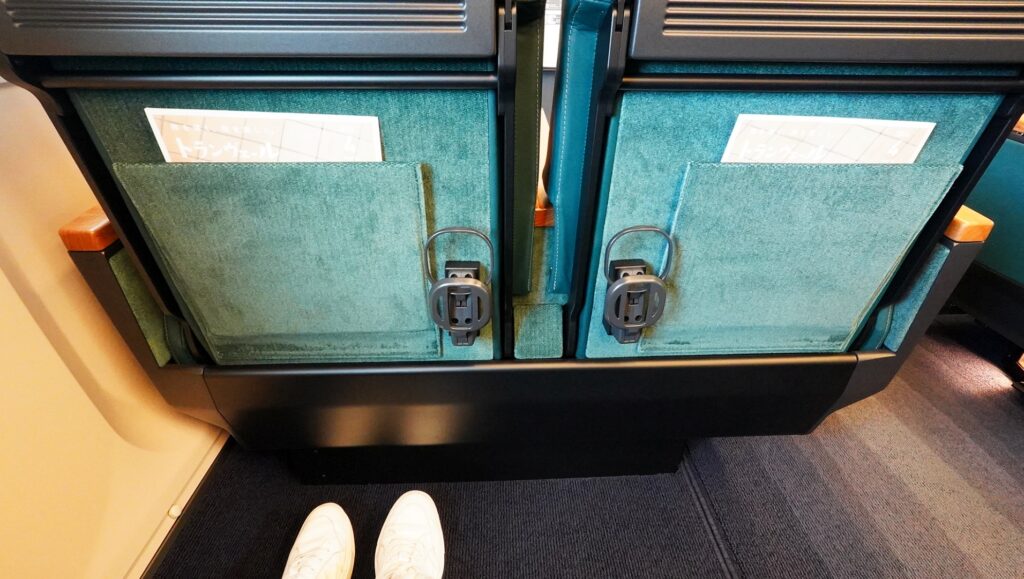
The seatbacks in front of your seat has a document storage, as well as a drinks holder. Unlike the economy class car, these are not mesh.
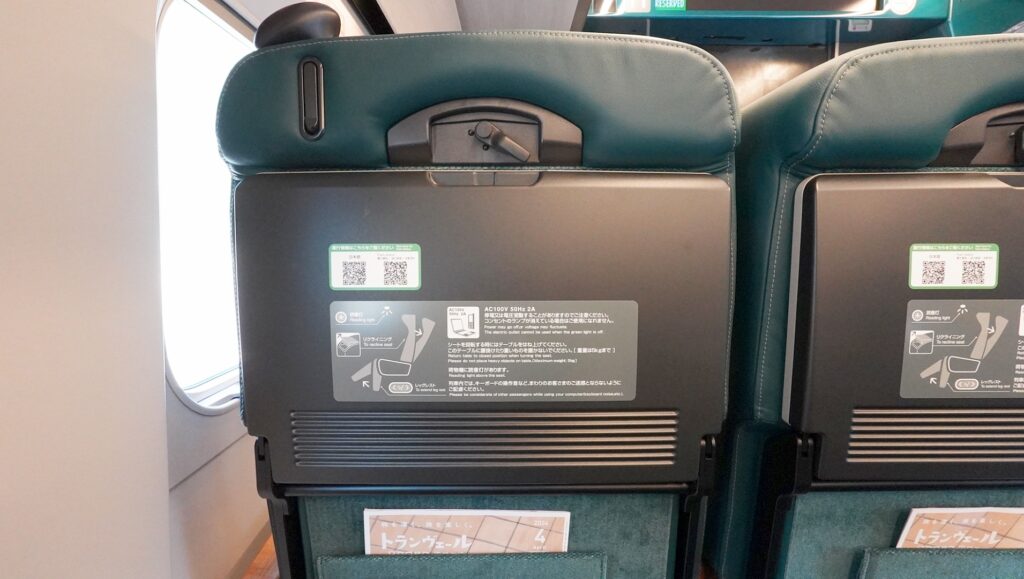
There’s a coat hook above the tray table on the seatback. Along with the two coat hooks along the window, this means each passenger has access to two coat hooks.
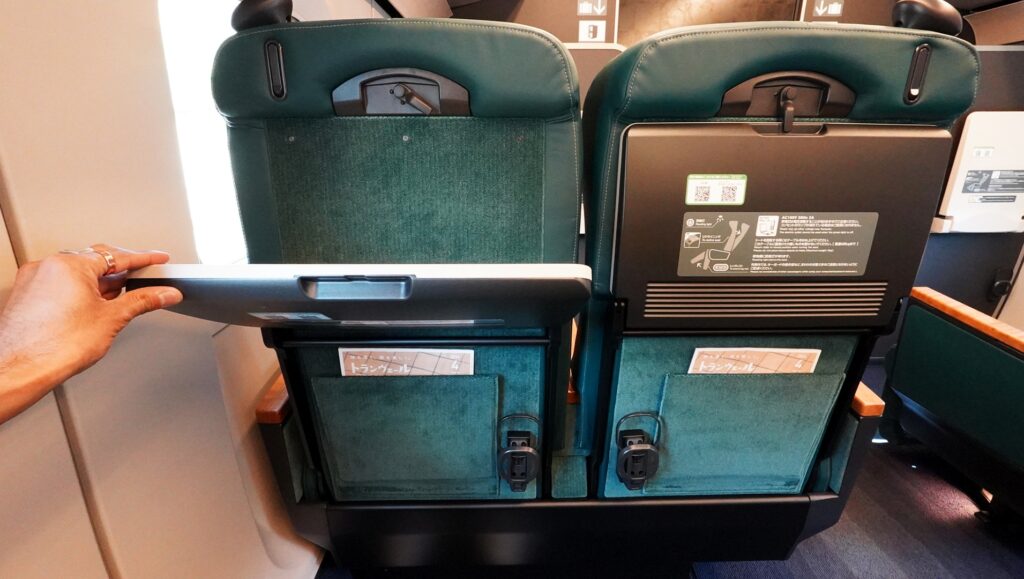
The tray tables fold down. These tray tables are much larger than those in Economy Class.
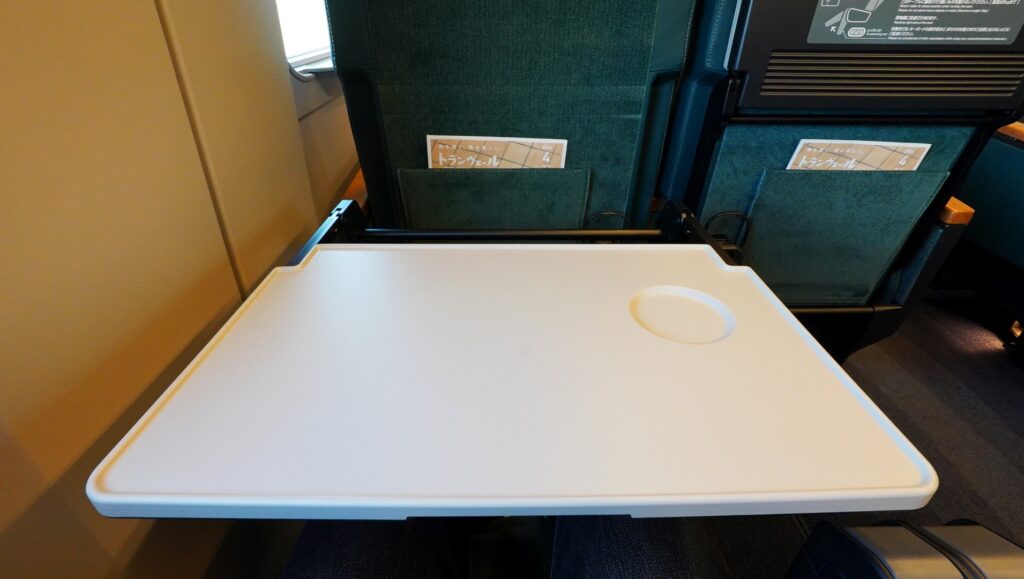

There’s a drinks inset in the tray table.

I did appreciate the extra space on the tray table in the Green Car.
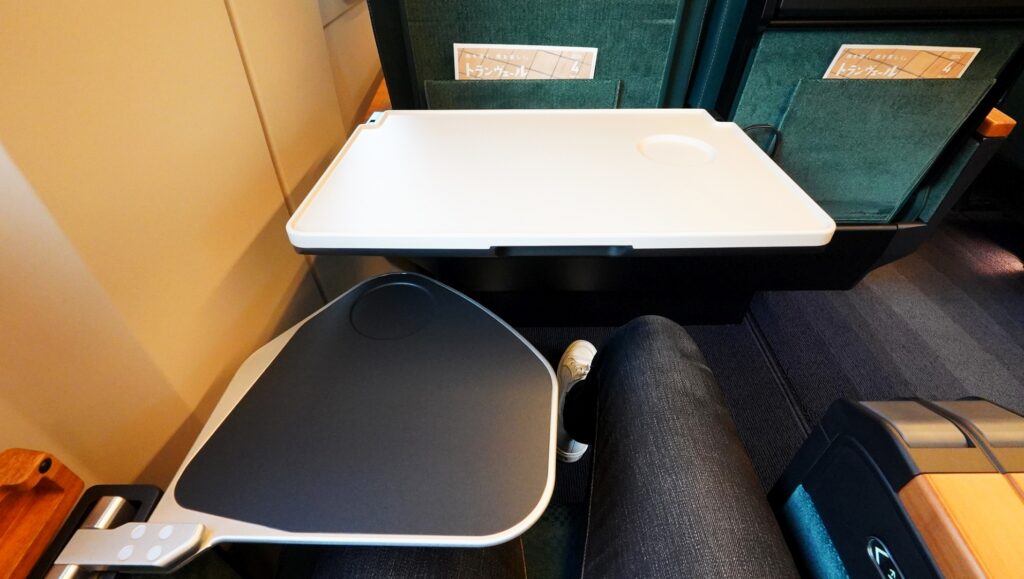
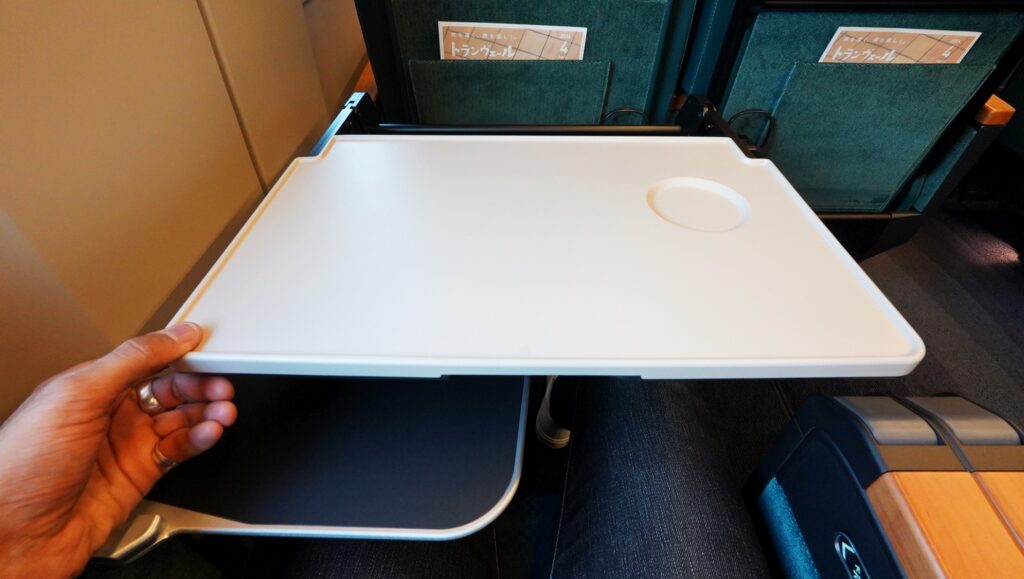
The tray tables are also retractable, and can move forward and backwards.
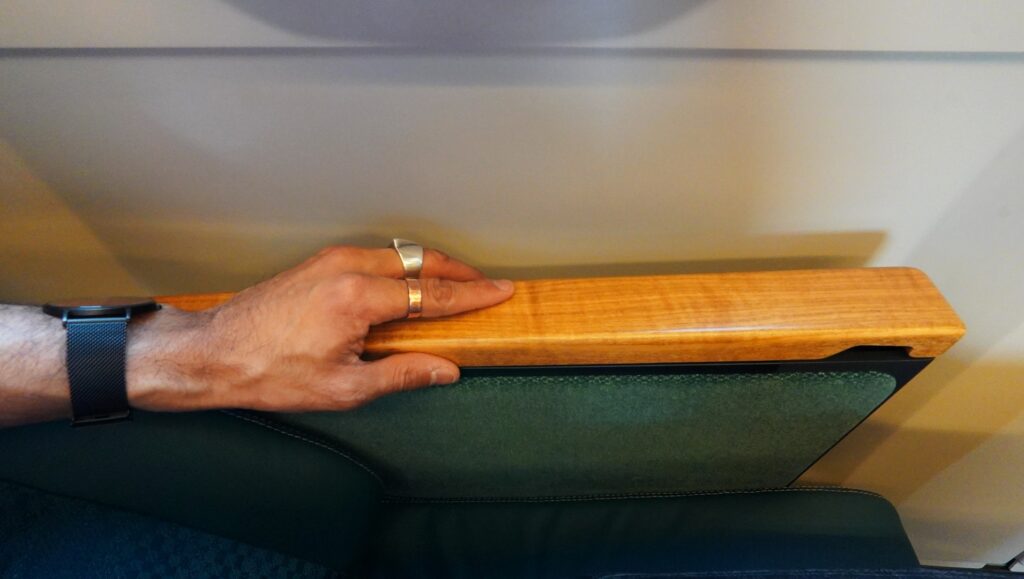
Unlike the Economy Class car, the sides of the seat are a wooden-oak.
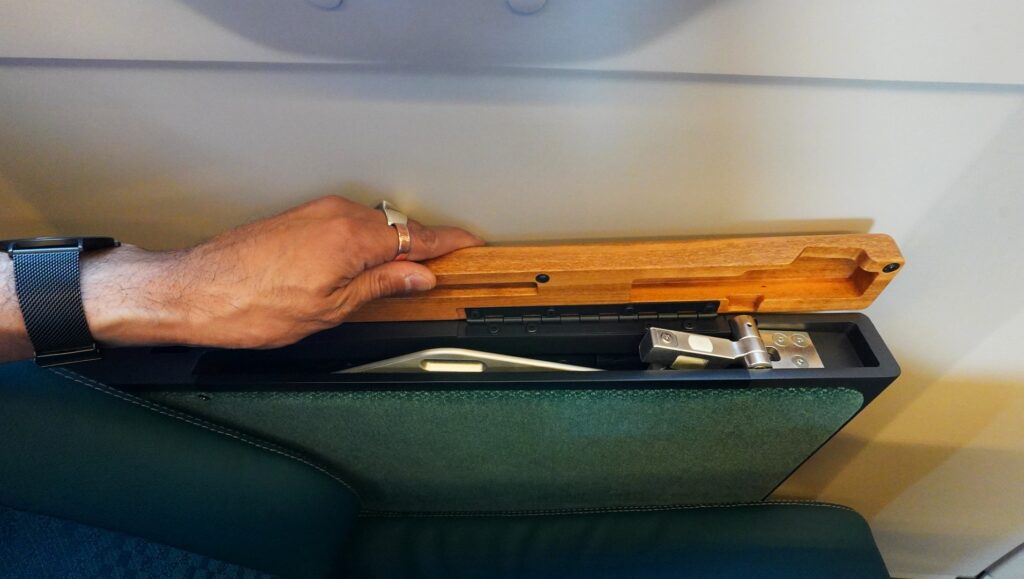
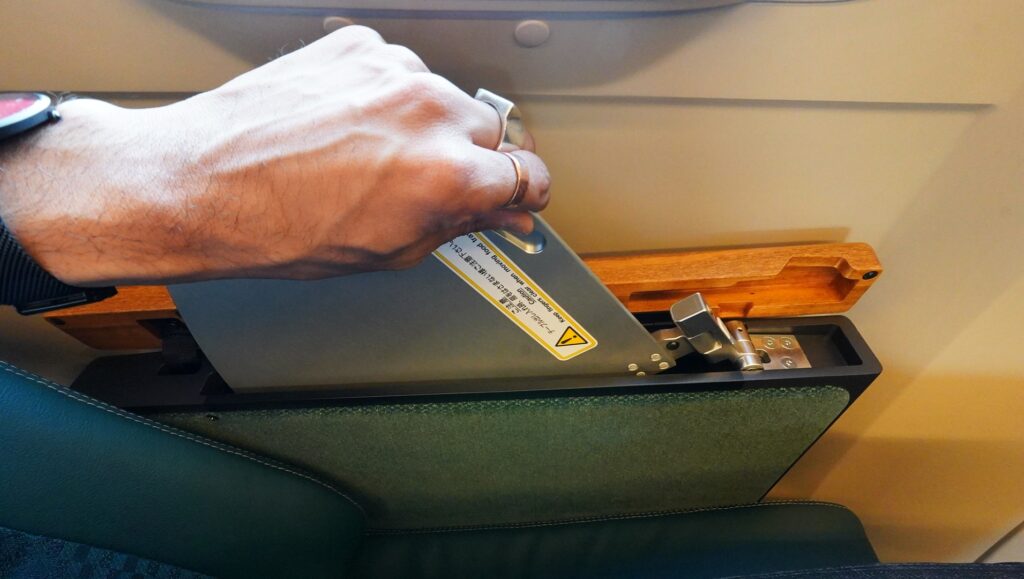
One side (on the window side if you’re in the window, or in the Aisle side if you’re on the Aisle) has an additional tray table purely for drinks.

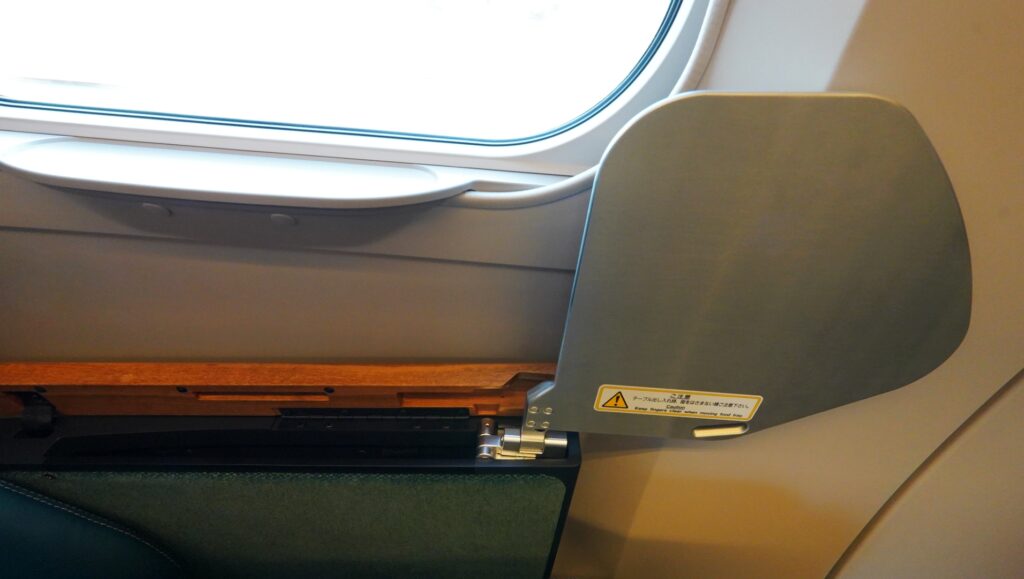
You can flip up the arm rest and then pull the table out.
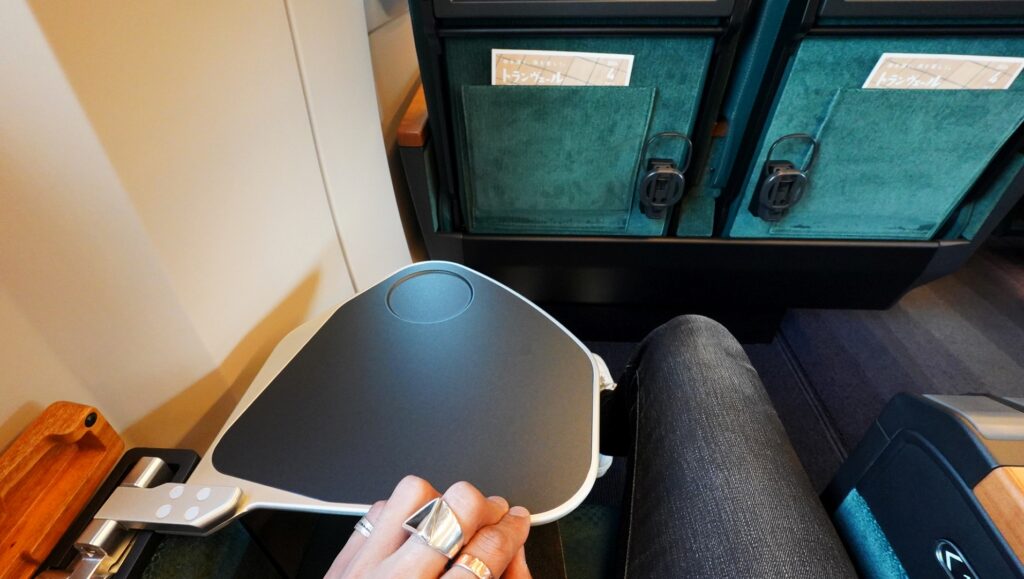
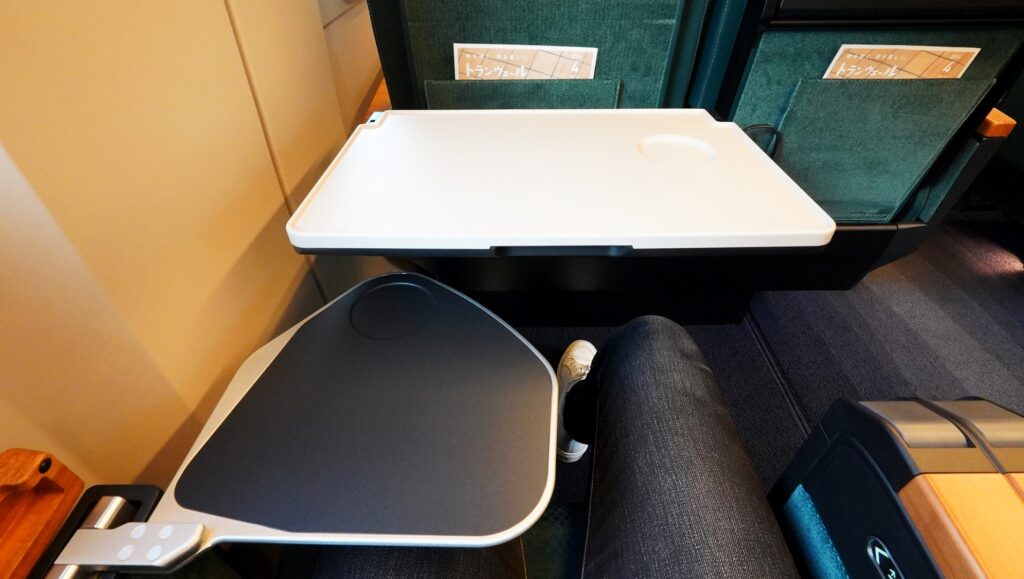
This then folds out and creates another triangular surface for your food and drinks. There’s also a small drinks inset in this armrest.
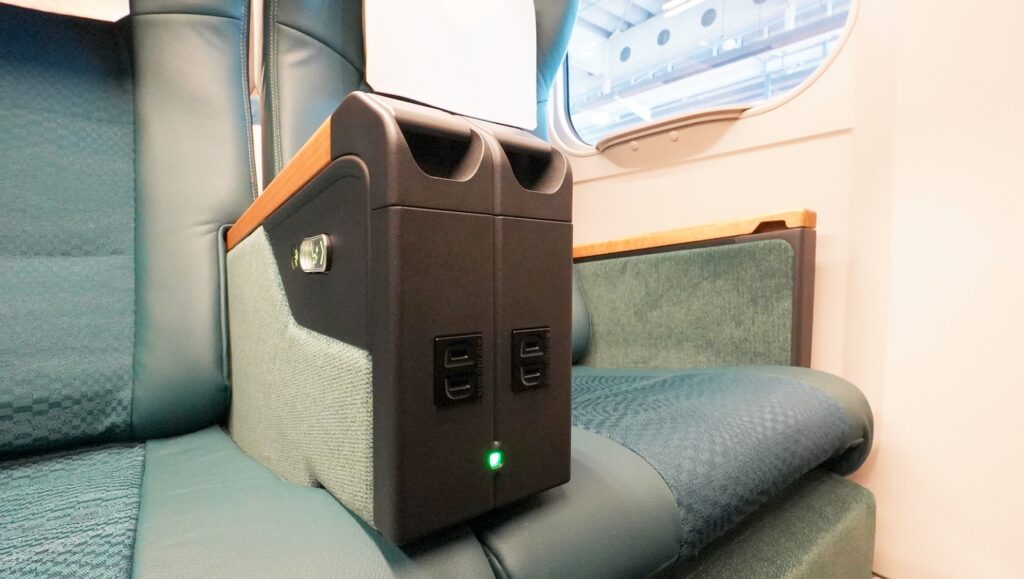
Each seat comes with a American style power port. These are placed ahead of the center console, and are next to each other.
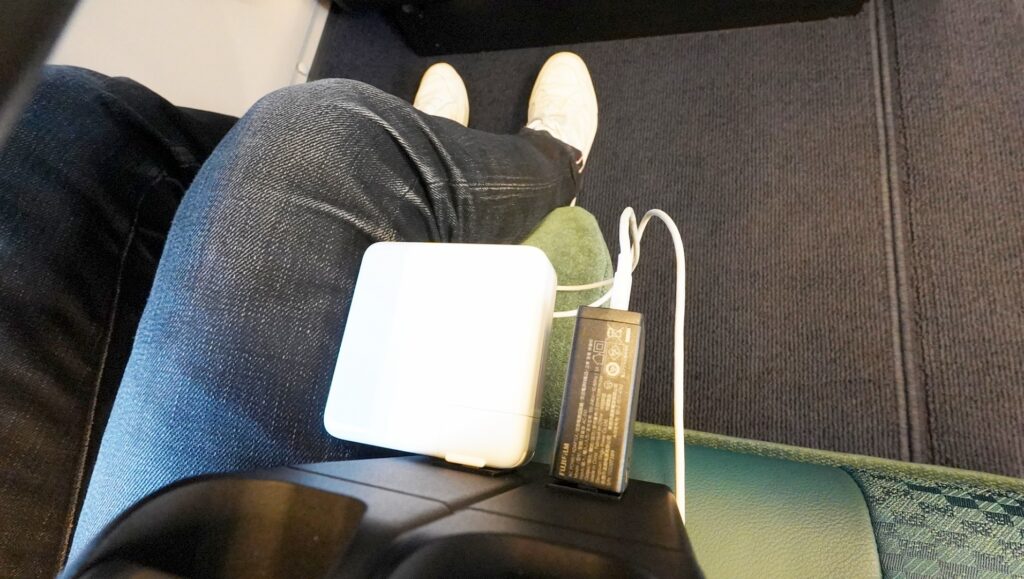
The space and orientation is large enough for Apple’s largest Macbook Pro chargers.
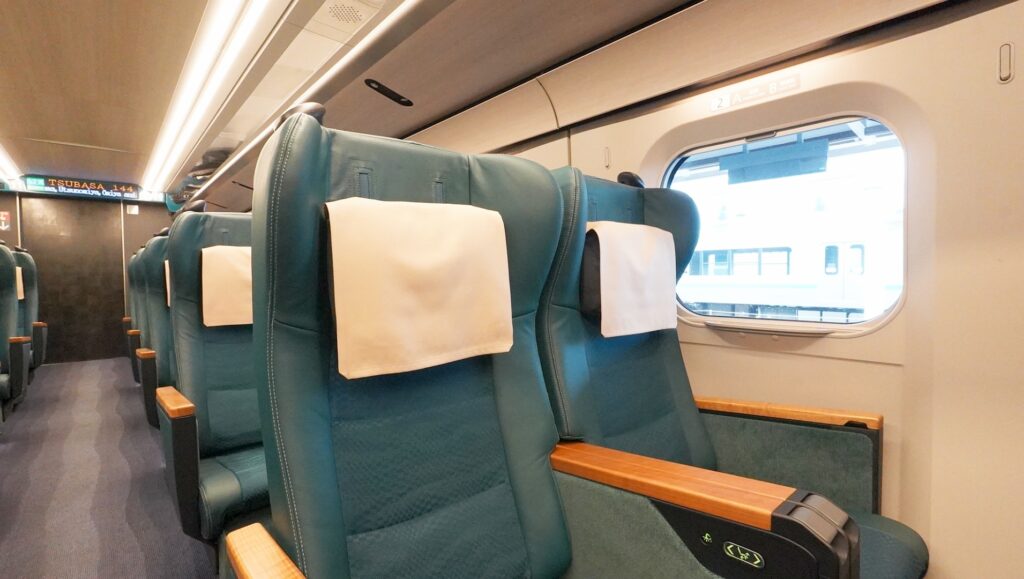
The windows are very large, a square-rectangular shape.

One of my favorite parts of Shinkansen trains are that windows are perfectly aligned to each seat – so you never have to worry about losing the view if you select a window seat.
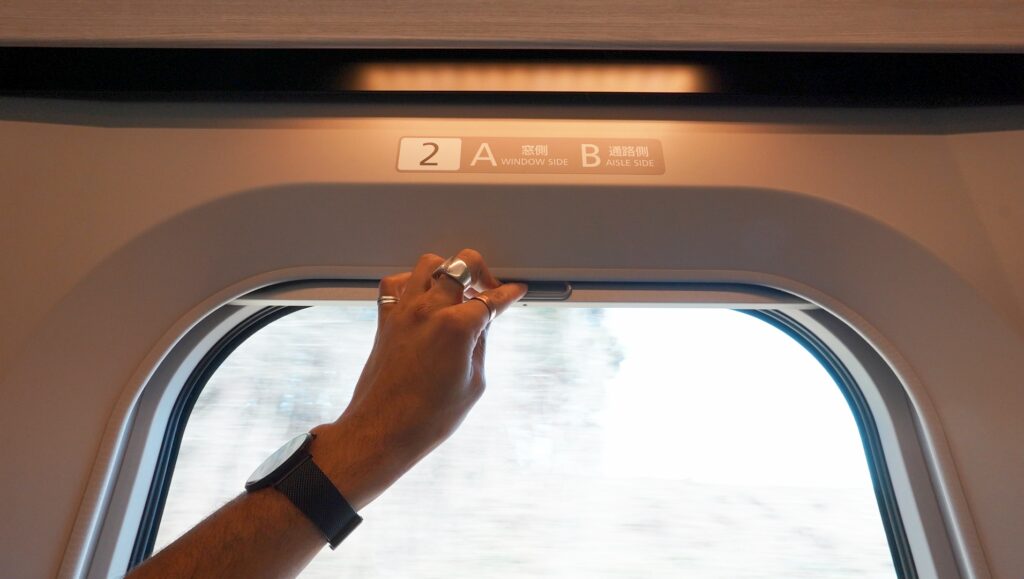

There are integrated window shades at each window.
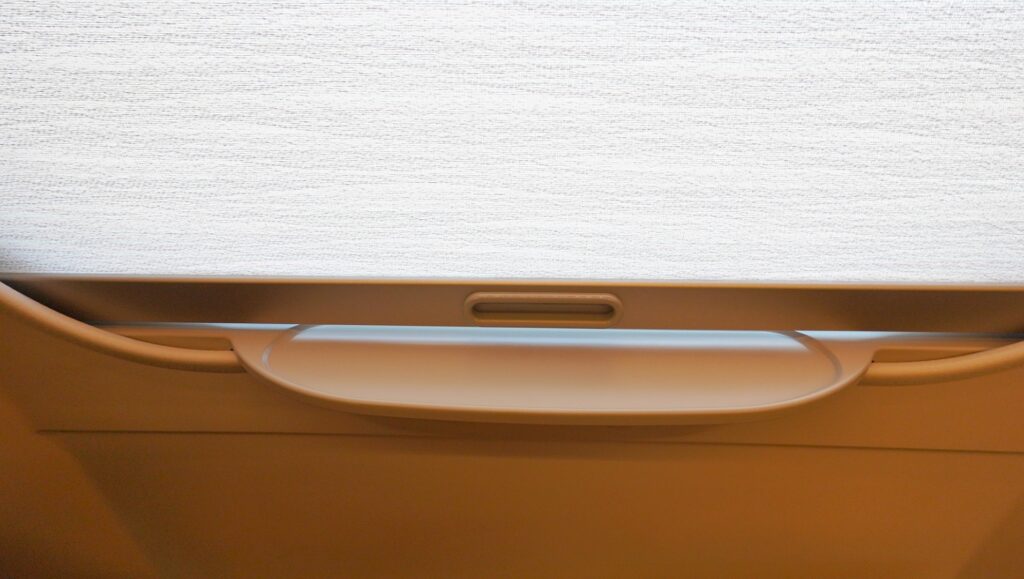
Each window also has a mini-counter drinks and phone holder.

The shape is now modified into a semicircular arch, giving additional space for placing drinks and other items here.
Above the seat are luggage racks.
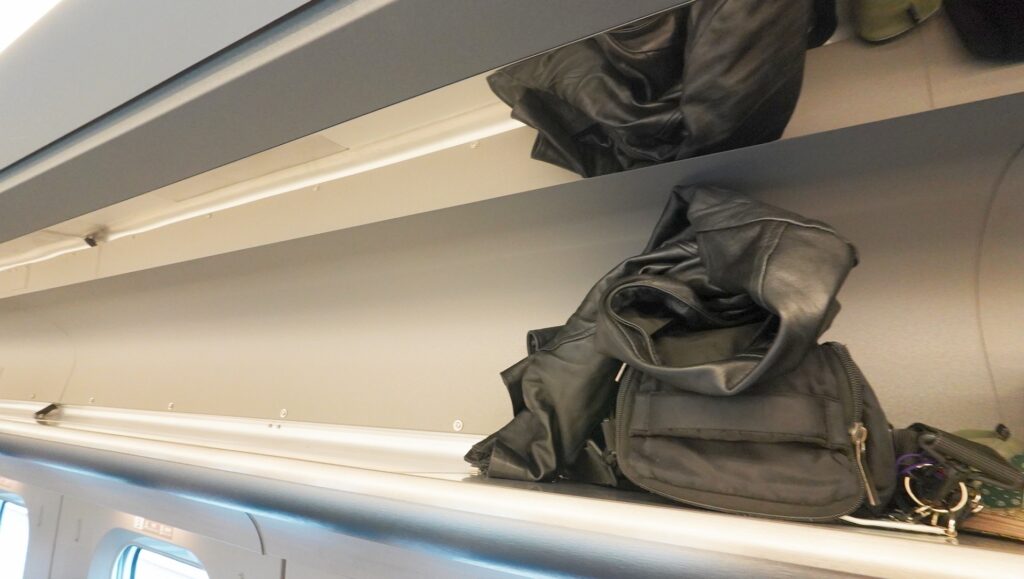
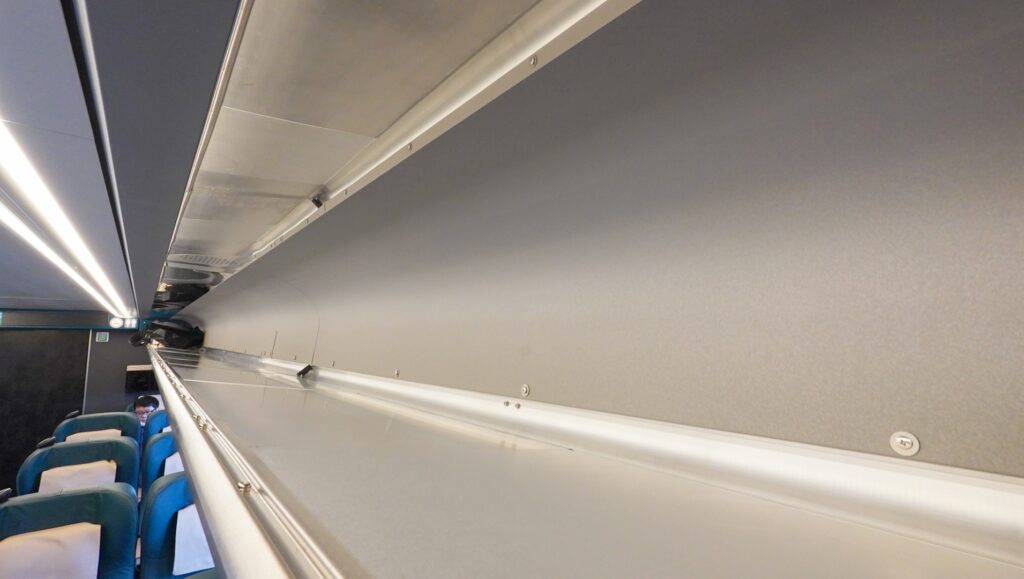
In a very unique improvement, there’s reflective metal mirrors overhead, so you can actually use this to see what’s in the luggage rack – in case you forget or drop something here. Very clever!

Finally, the forward (first) seats have an entirely different configuration for the tray tables and foot space.
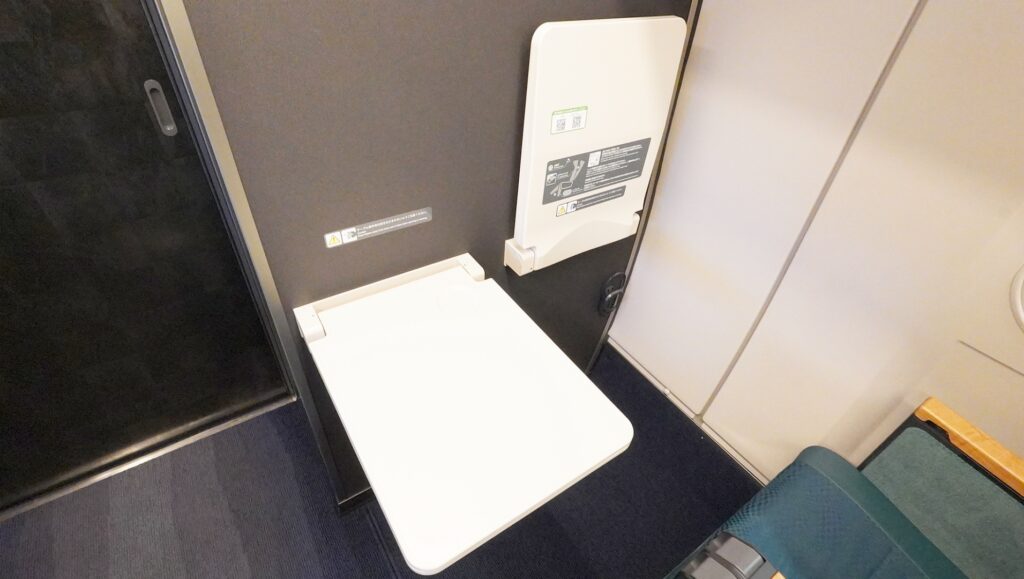
These offer more foot space and much deeper tray tables.

Here’s a few shots of that area.
Seat Controls (Green Car)
There’s two seats of controls for each Green Car seat – and these are on the side of the center console.
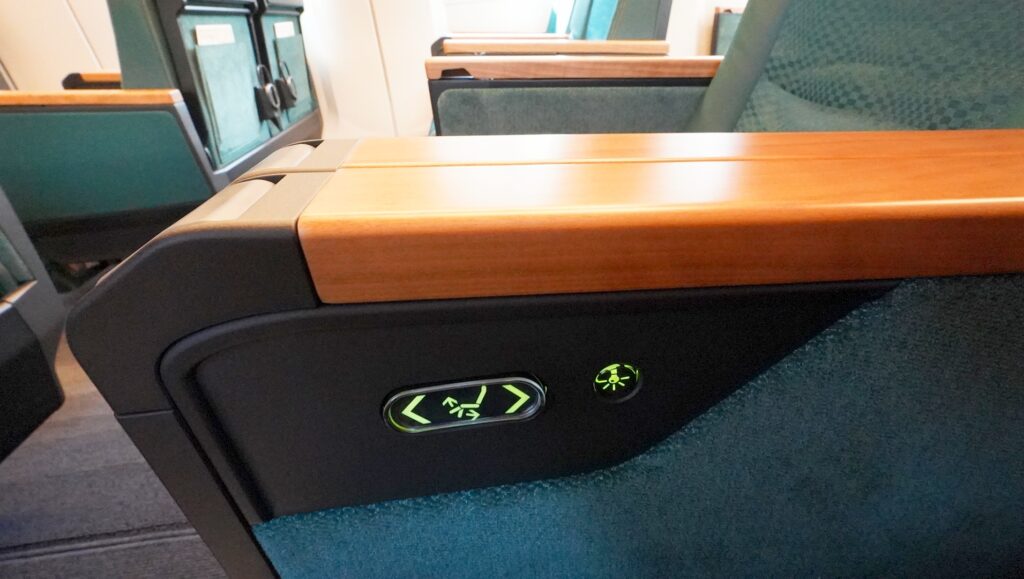
One set just operates the ottoman footrest – this part is electronic.
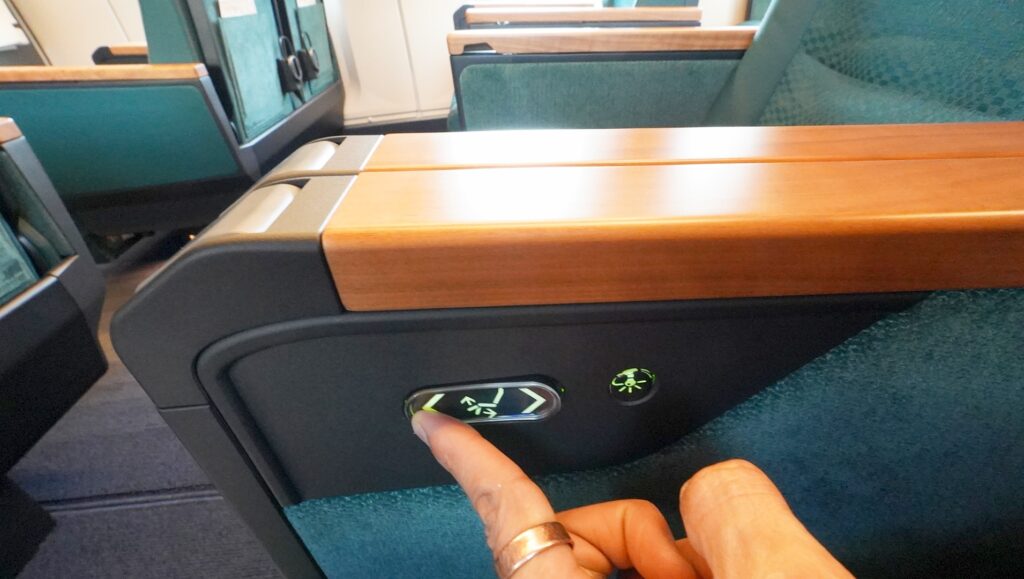
There’s two buttons to retract or detract the footrest.

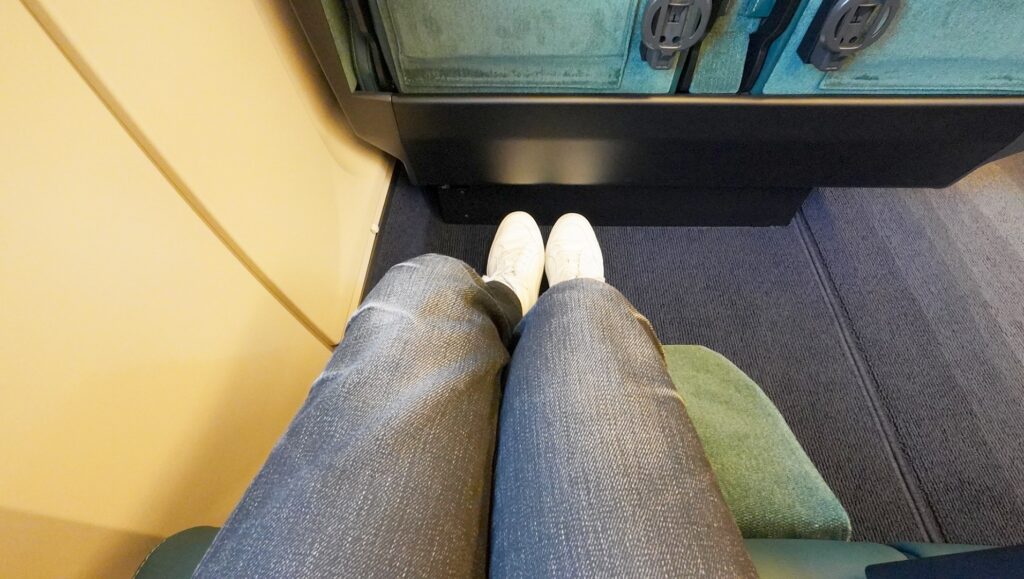
It’s a little confusing, because passengers actually think this is for the seat recline.
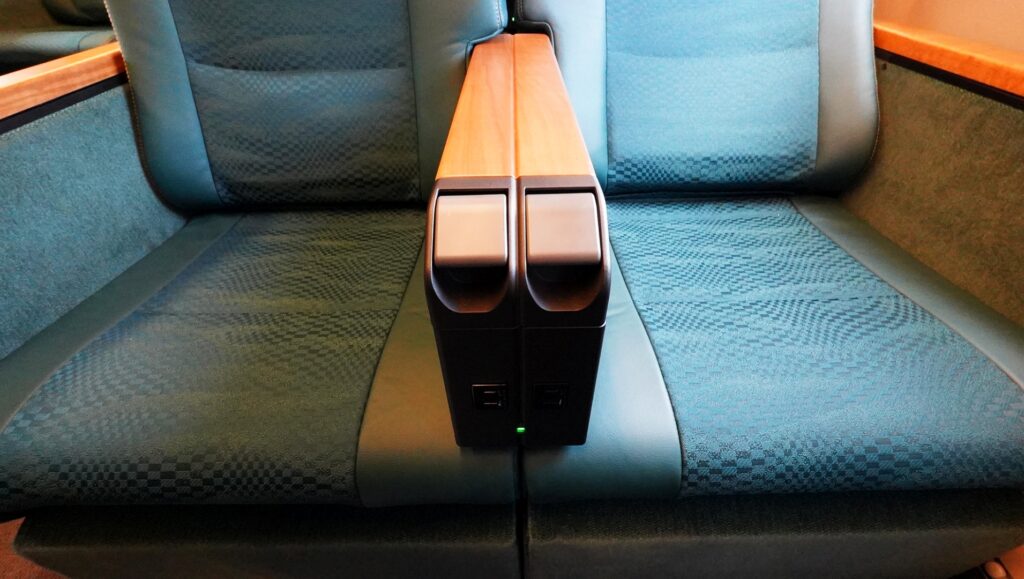
However, that’s a manual release at the end of the center console.
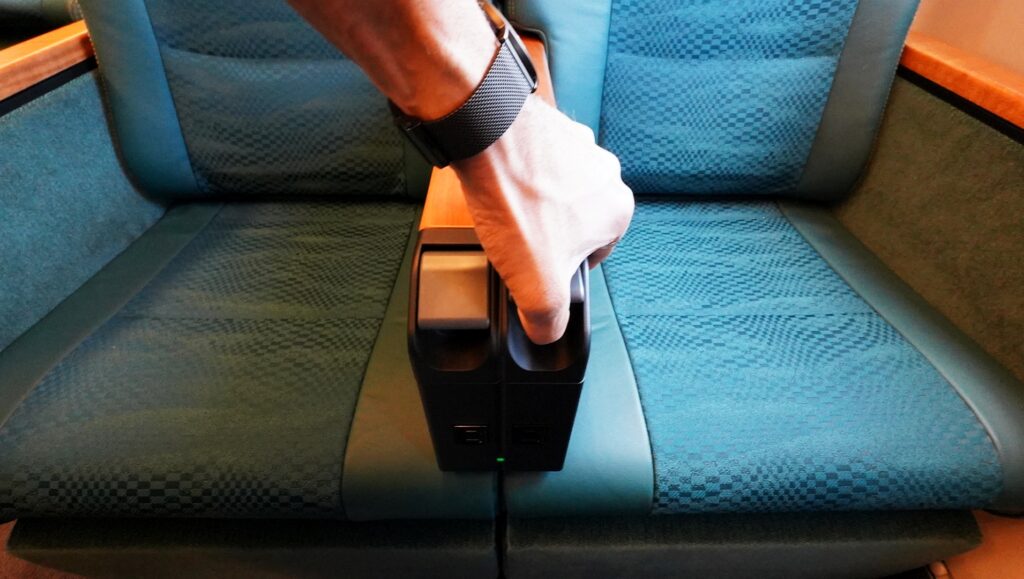
Just like in economy class, you’ll pull this up and it will unlock the seat to be reclined back.
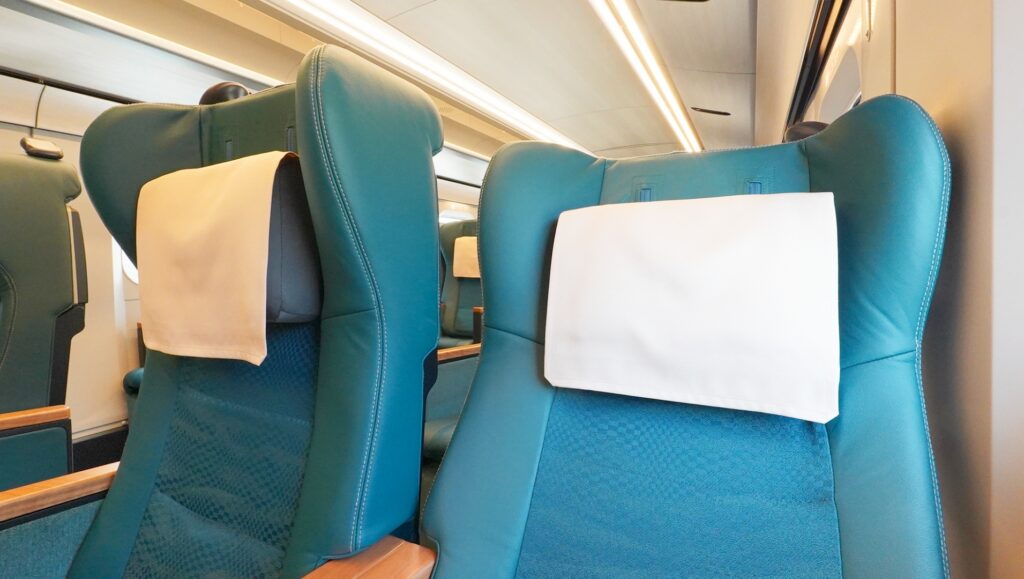
The seat recline here is slightly more than in Economy Class.
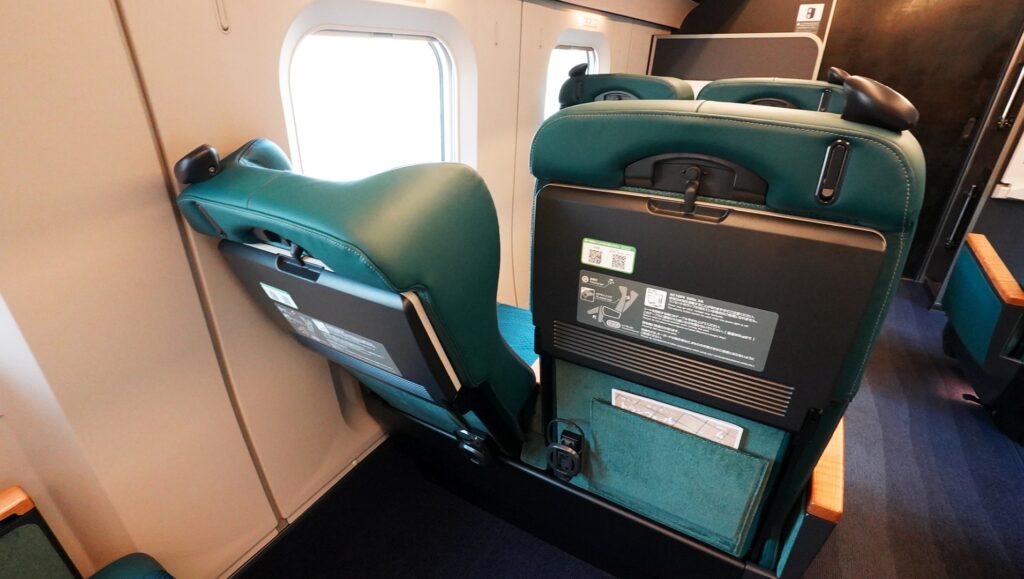
Between the footrest ottoman (which has a maximum 45 degree angle) and the extreme seat recline, these seats are really great for sleeping.

Just like in economy class, you can use the adjacent seat as an additional headrest if you wanted to (and if you don’t have a neighbor).
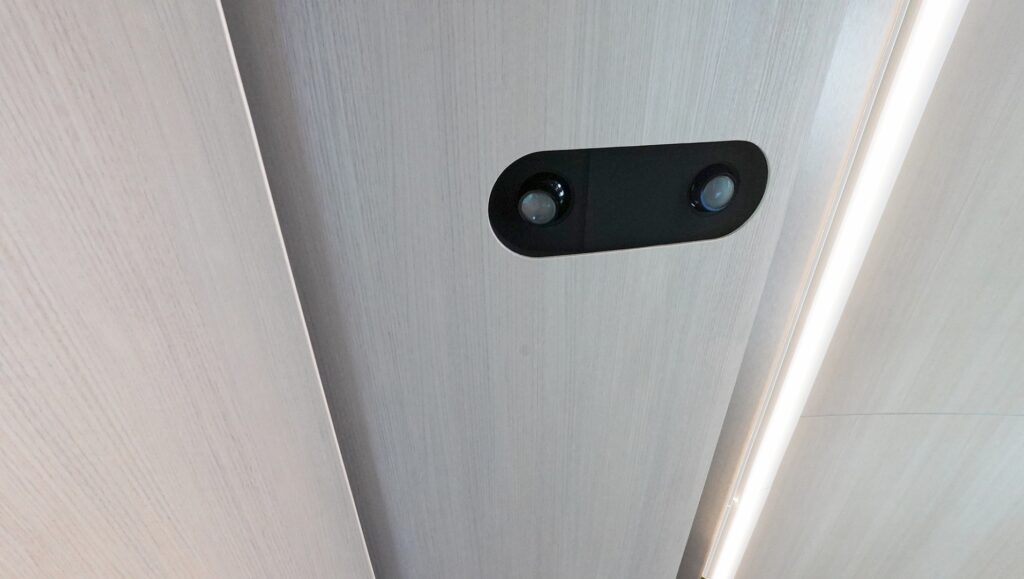
Finally, there’s also a button to operate the overhead reading light.
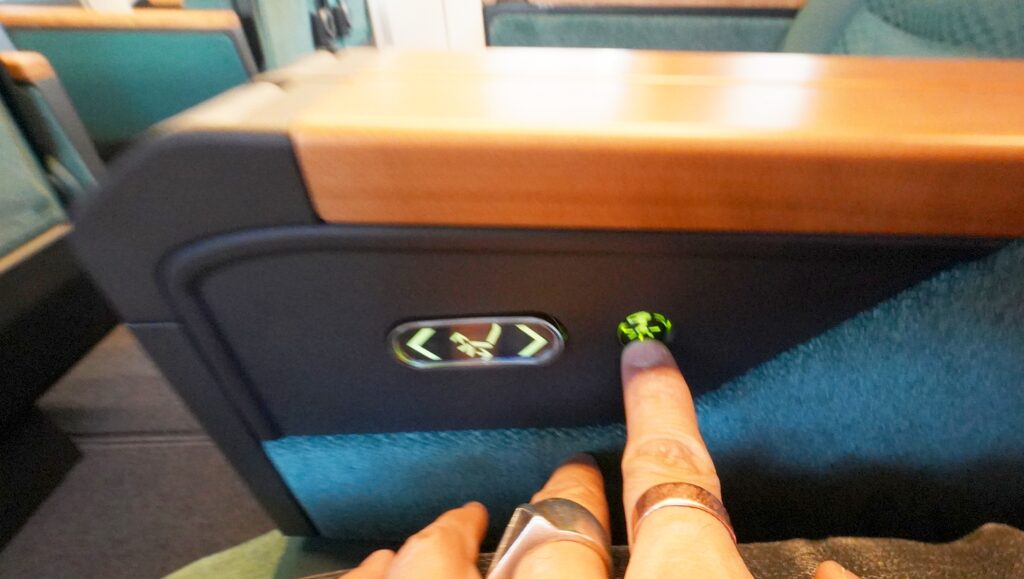
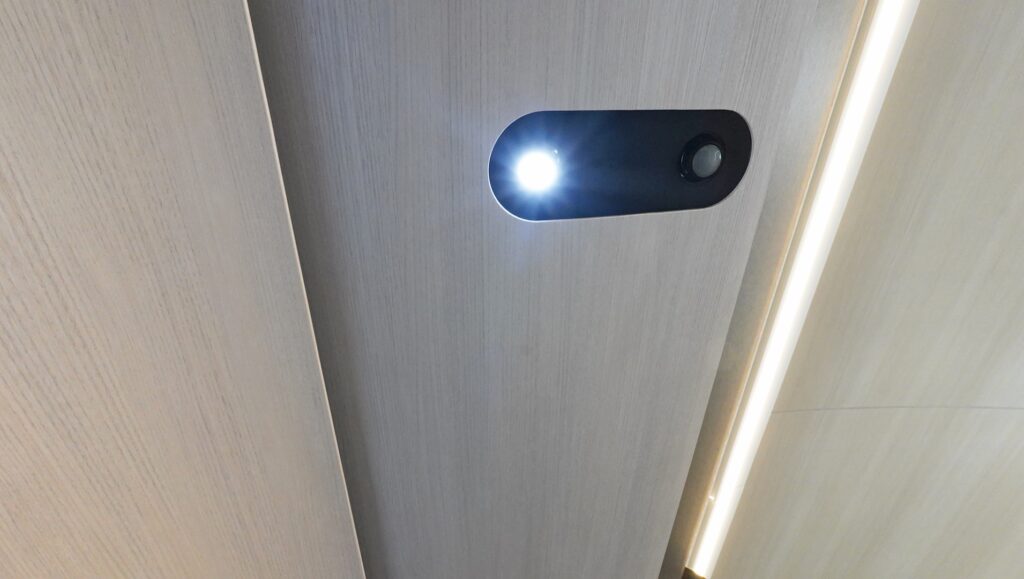
The controls here are also backlit for the night-time and in tunnels.
Restrooms (Green Car)
The Green Car has a pair of restrooms adjacent to Car 12, the first Economy cabin.
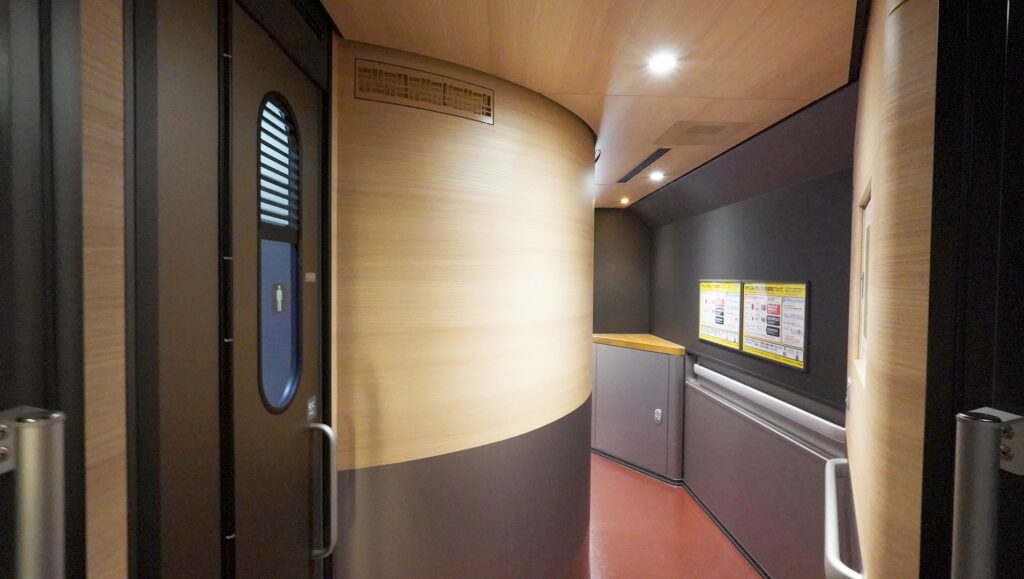
Just like in my Economy Class review, there’s a sink here that’s accessible to all.
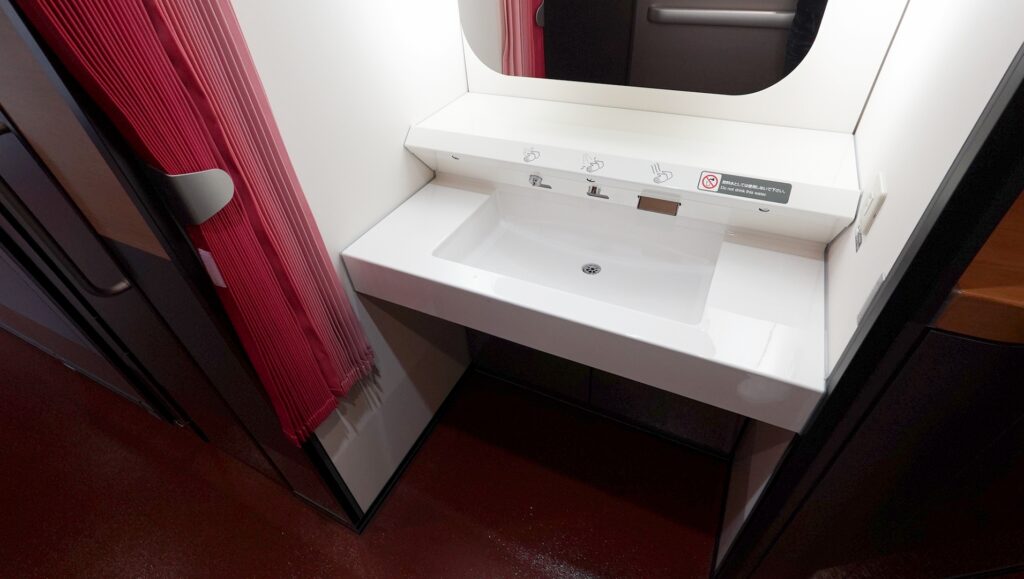
The shared sink here has a large backlit mirror, and the sink itself is quite large.
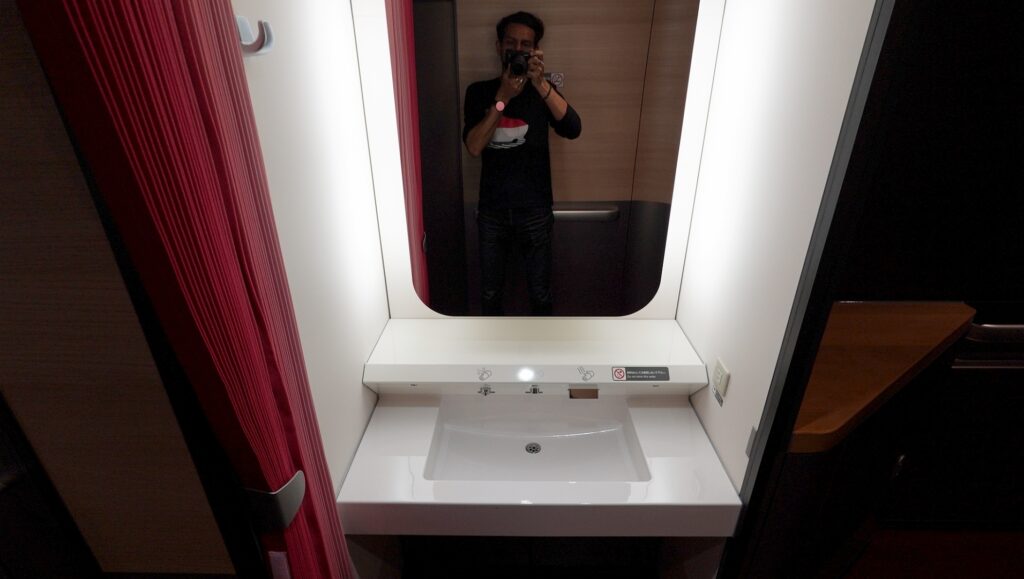
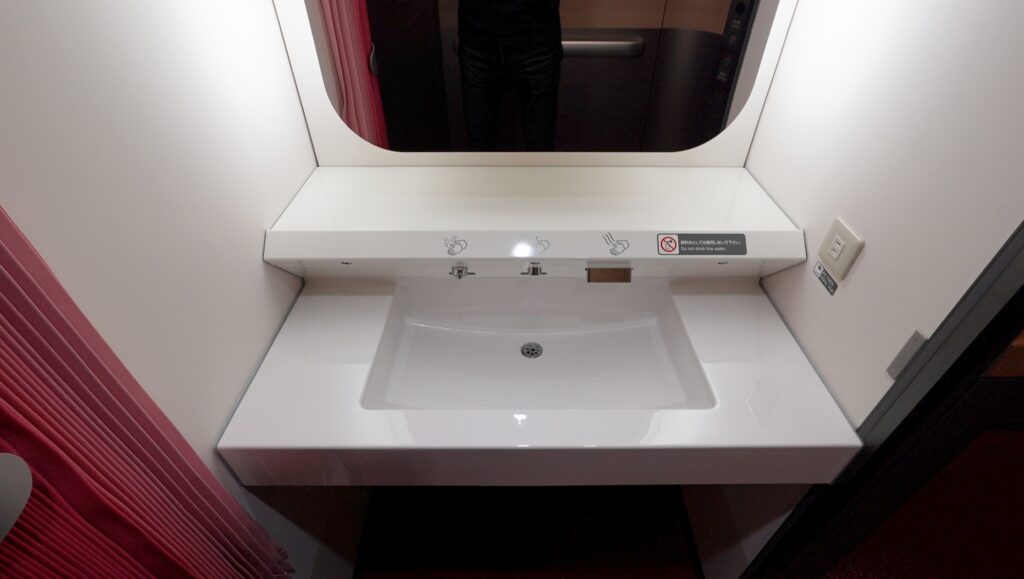
There’s also a curtain here if you need some privacy.
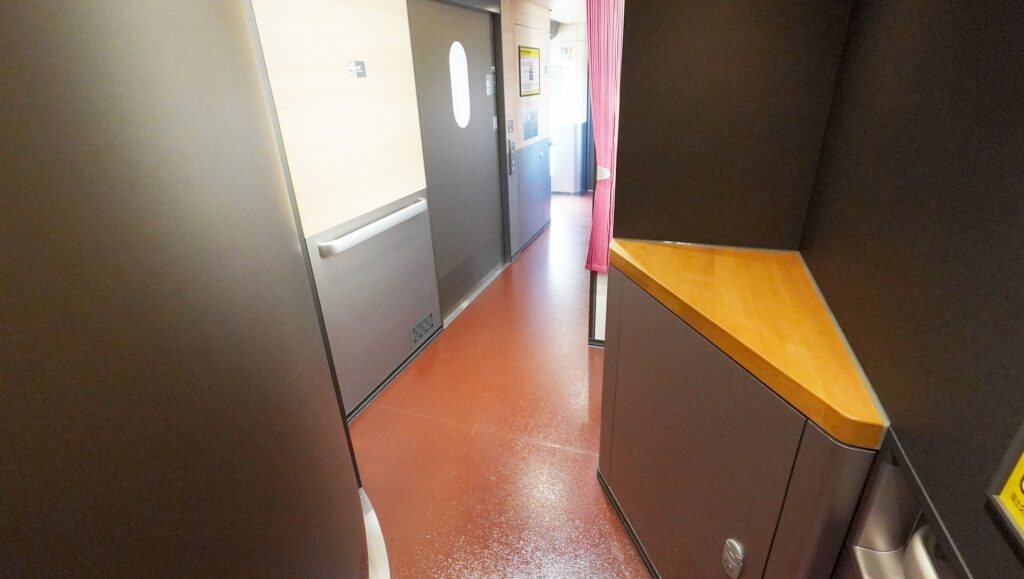
In the same vicinity is a large triangular counter area you can use to assemble or organize your belongings.
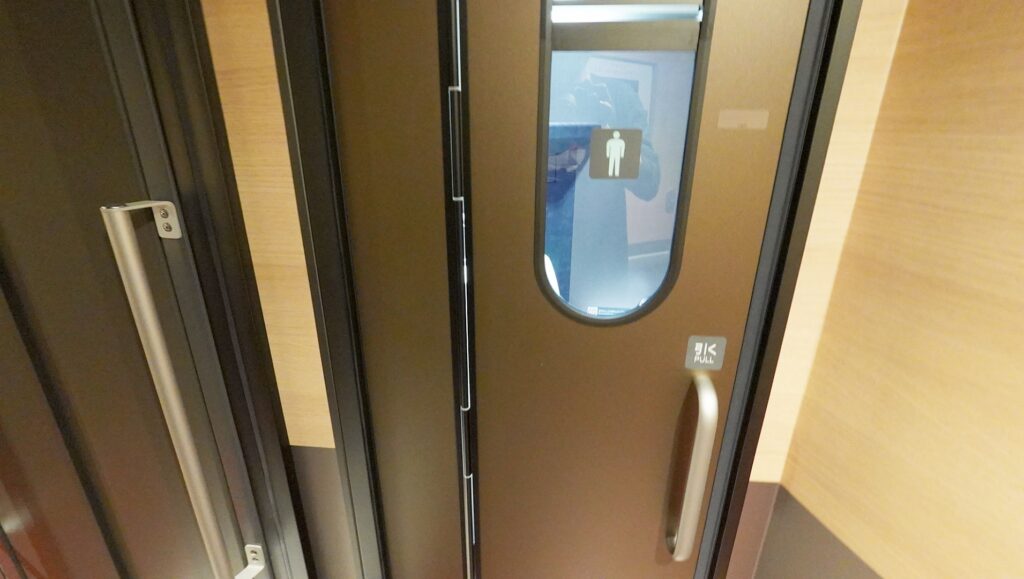
Just like in the Economy Class cabins, there’s a door that’s exclusively for the men’s urinal.
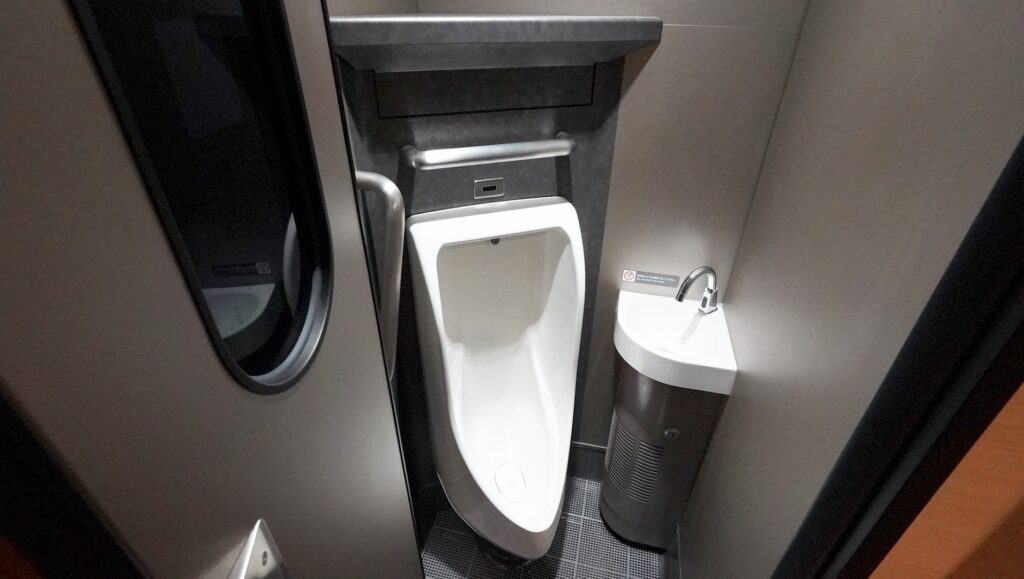
This is a tall urinal along the side corner with an automatic flush.
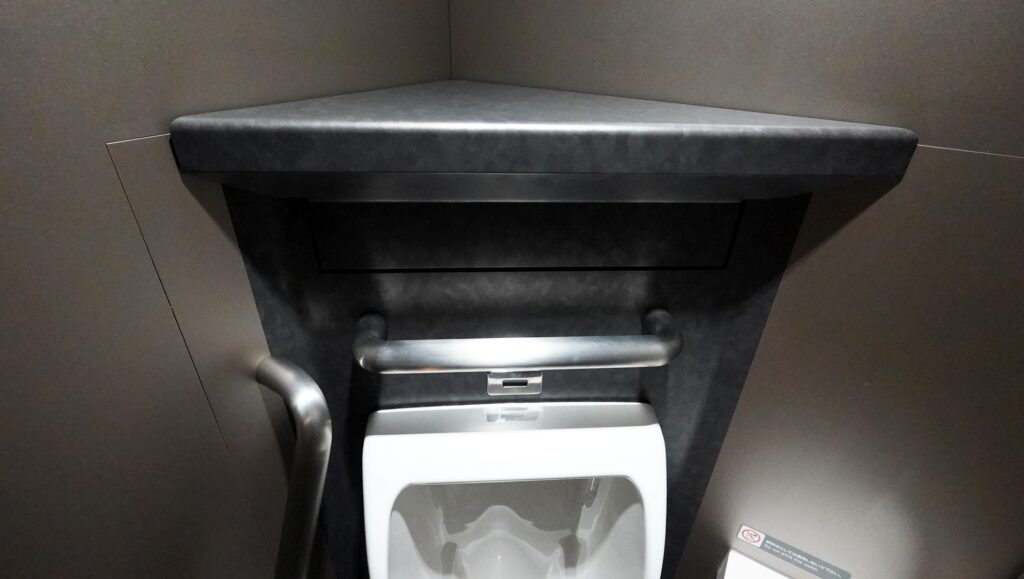
Above the urinal is a small triangular counter to put belongings on. To the right of this is a small mini-sink for washing your hands.

Near the urinal area is another curved door that leads to the main, handicap accessible restroom.
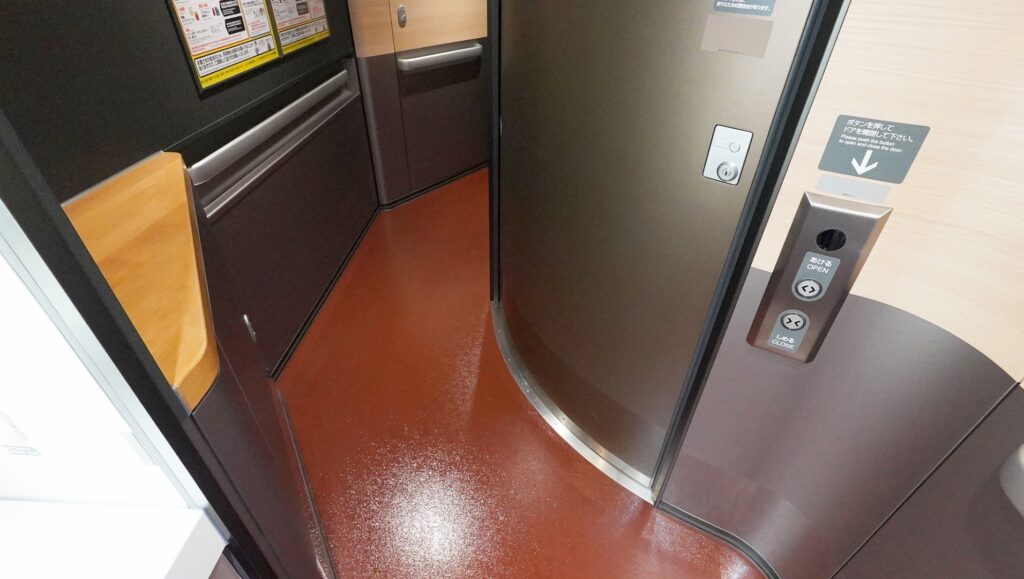
To get into this restroom, you’ll need to press buttons both to open and close the doors.

This is a massive sized restroom that also has an automatic full-sized Toto toilet. The lighting in this space is quite sharp yet dim, and reminds me a lot of the restrooms on the Delta Airlines A321neo.
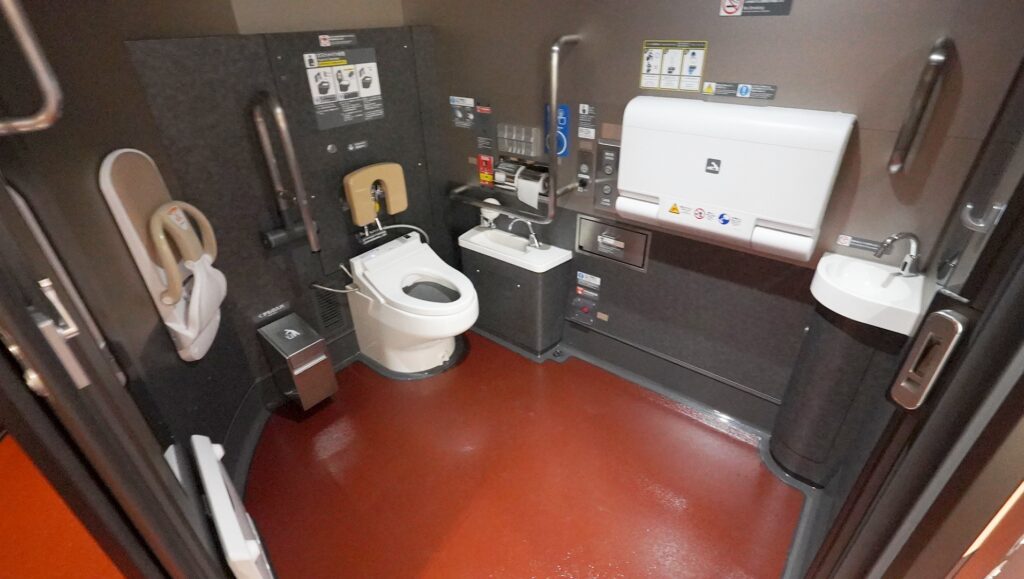
However, there’s no seat cover in this restroom unlike in the small restrooms.

The toilet is regular sized and also has a full set of controls for operation, like in most Japanese trains.

What’s really cool about this toilet is the seat is heated! I sat down – and surprisingly, it was very warm to touch, and super comfortable. Japanese toilets are awesome!
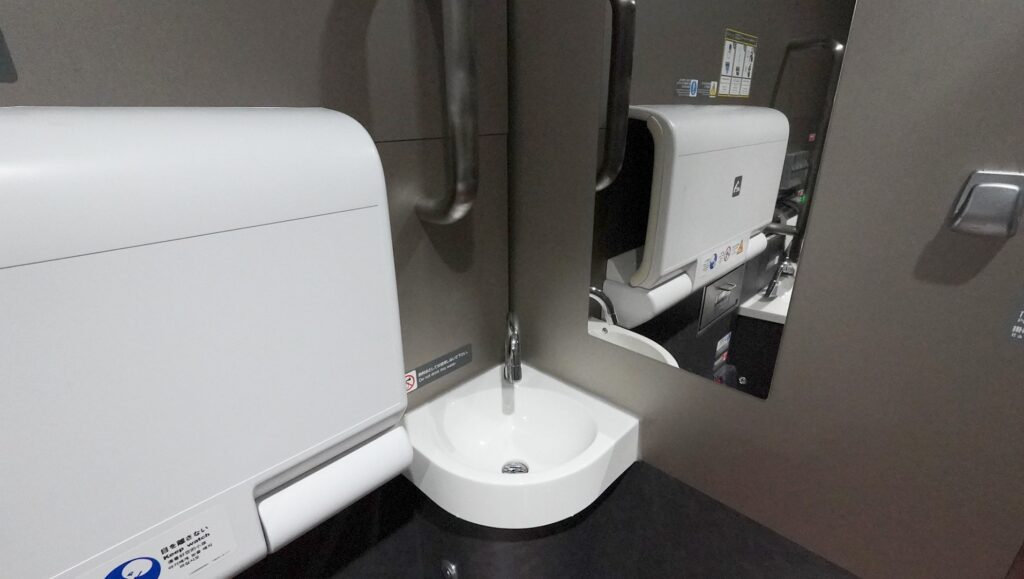
Additionally, there’s a small circular sink here along the corner, operated by motion detection. There’s also a very small facial mirror along one wall.
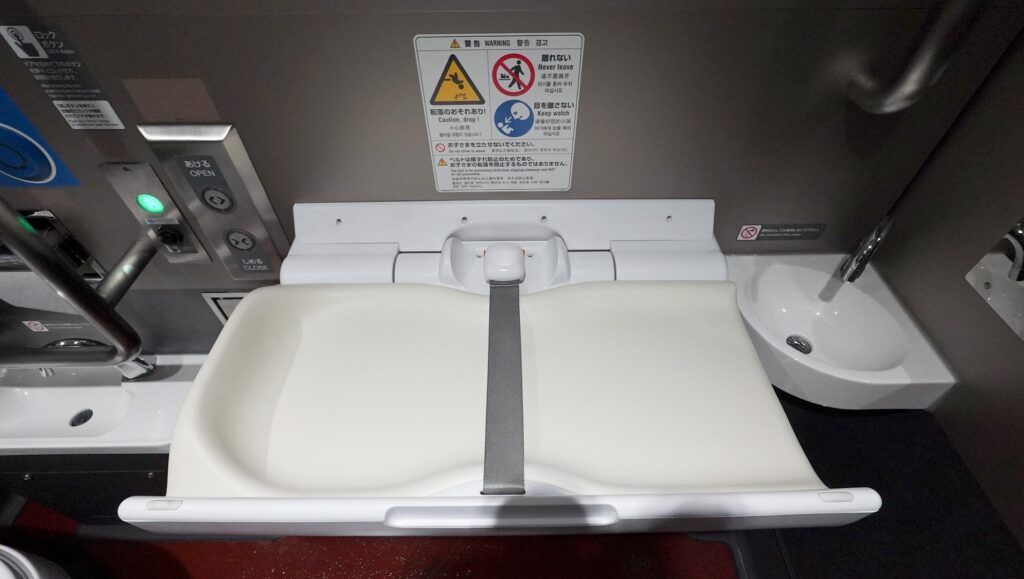
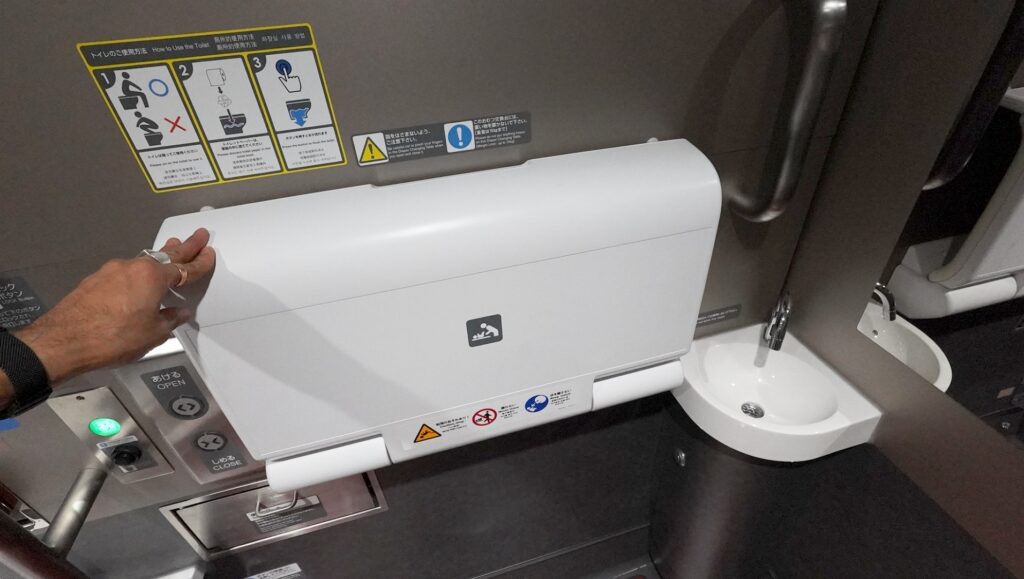
Between the toilet and the small sink is a large, bulky baby-changing station, which you can pull down. This is well padded and also includes a belt to secure belongings or a child.
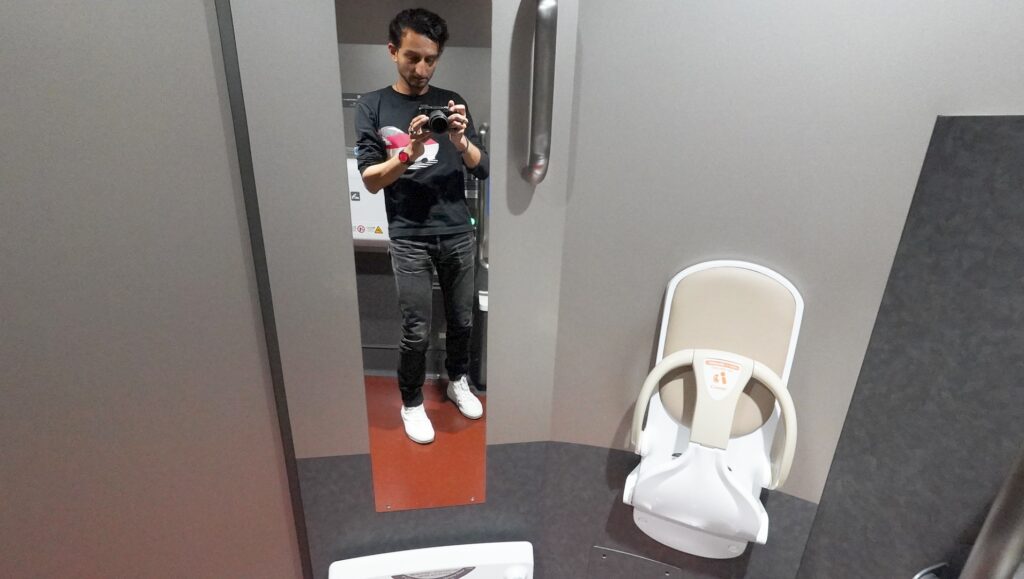
On the side, there’s also a baby-seat where you can seat a small child on the side of the wall. Next to this, you’ll also find a full length mirror, which is not something found in other restrooms.
Multi Purpose Room
In between the Green Car 11 and Economy Car 12, there’s also a special multi purpose room along one side of the train.

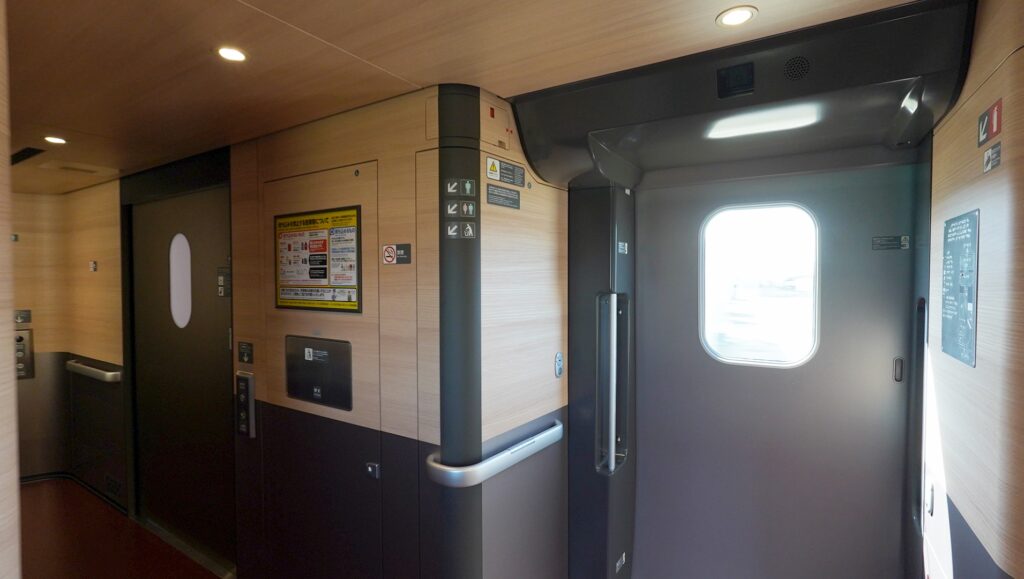
You can enter this room by operating the door buttons to open and close the door.
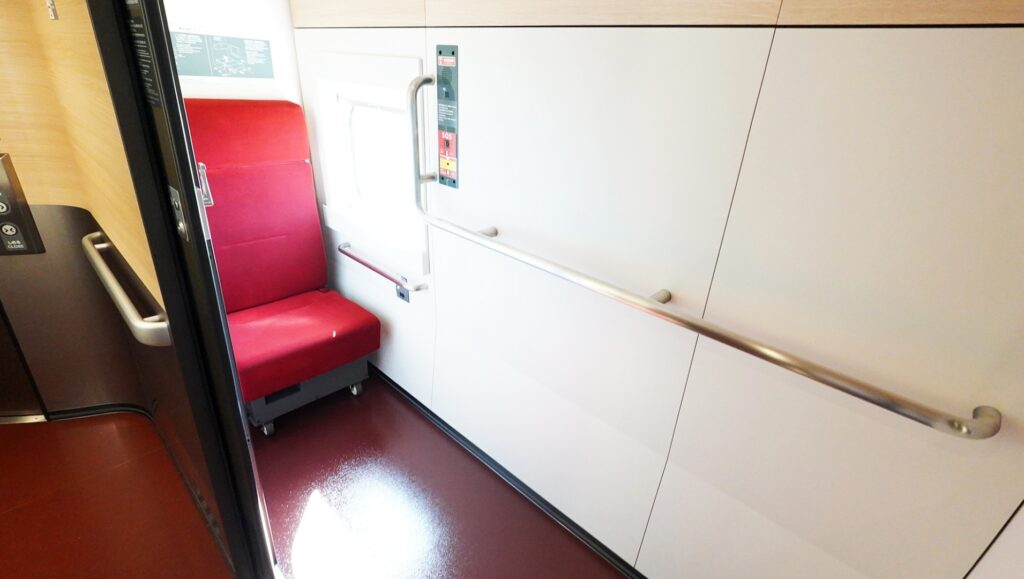
This is a long, rectangular shaped room with a single seat and a single window.

There’s a large mirror on the opposite side.
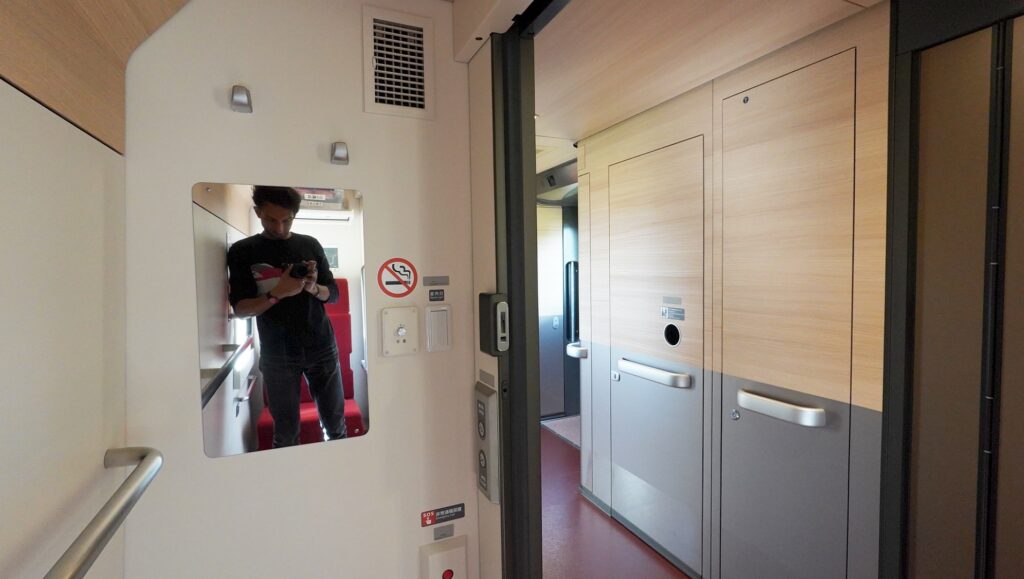
There’s also one single, wide and comfortable seat here to sit on.

This room can be used for phone calls, for breast feeding, and for sitting with babies and little children, among other things. It’s available on a first come first serve basis.
The Ride on the Series E8 Shinkansen (Return to )
On the return, I had just a forty minute layover at Shinjo station.

Rather than explore the city, I stuck around the station.

The station in Shinjo has many odes to classic Japanese culture.
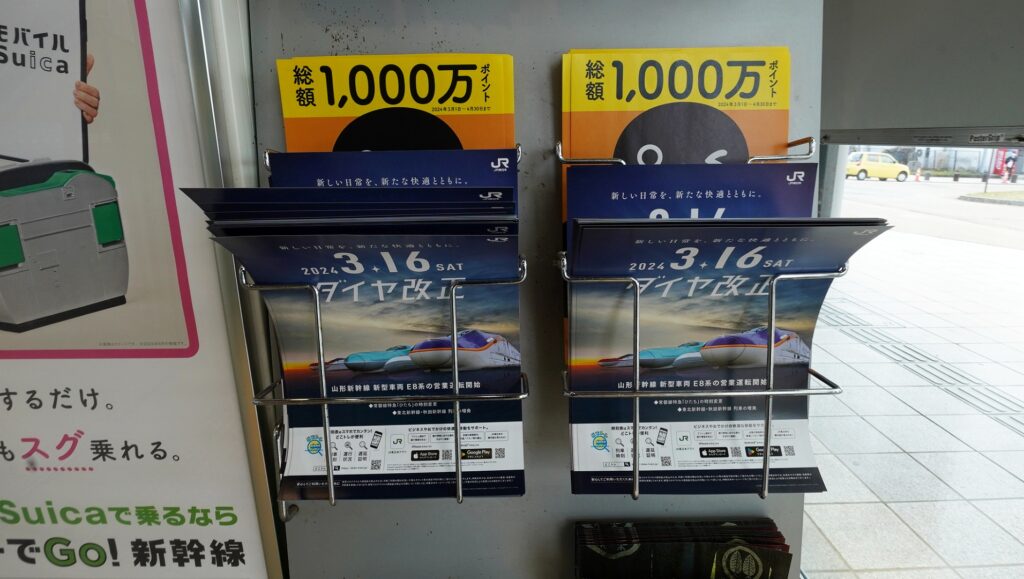
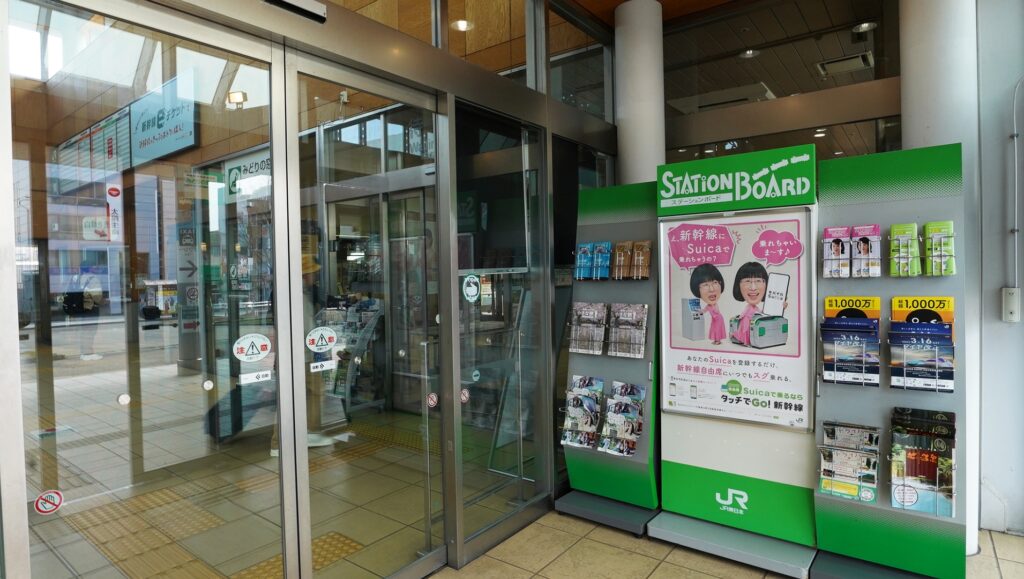
There were tons of posters and billboards at the station celebrating the new Shinkansen line.

There’s also a small ticket and waiting area here at the station.
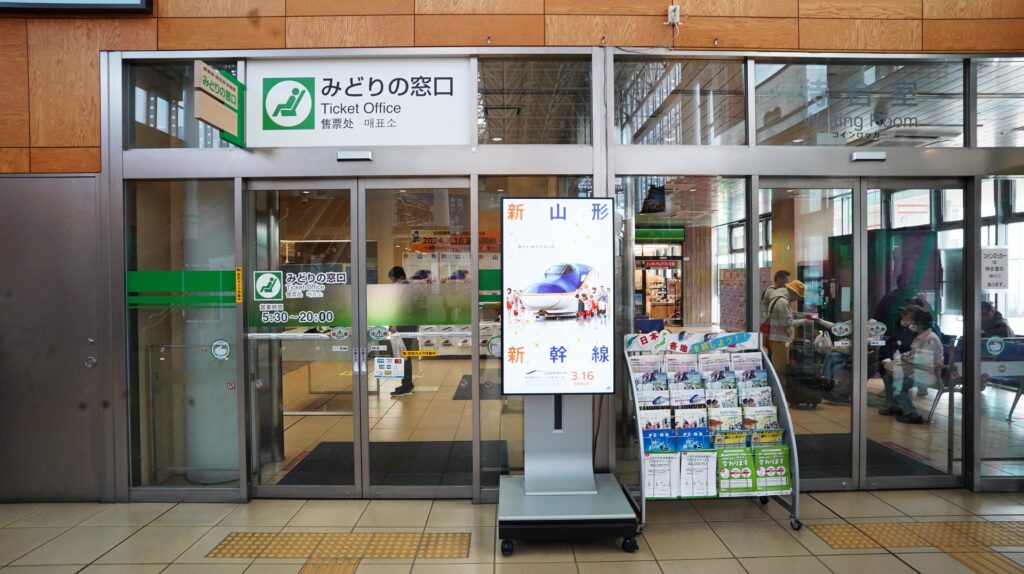
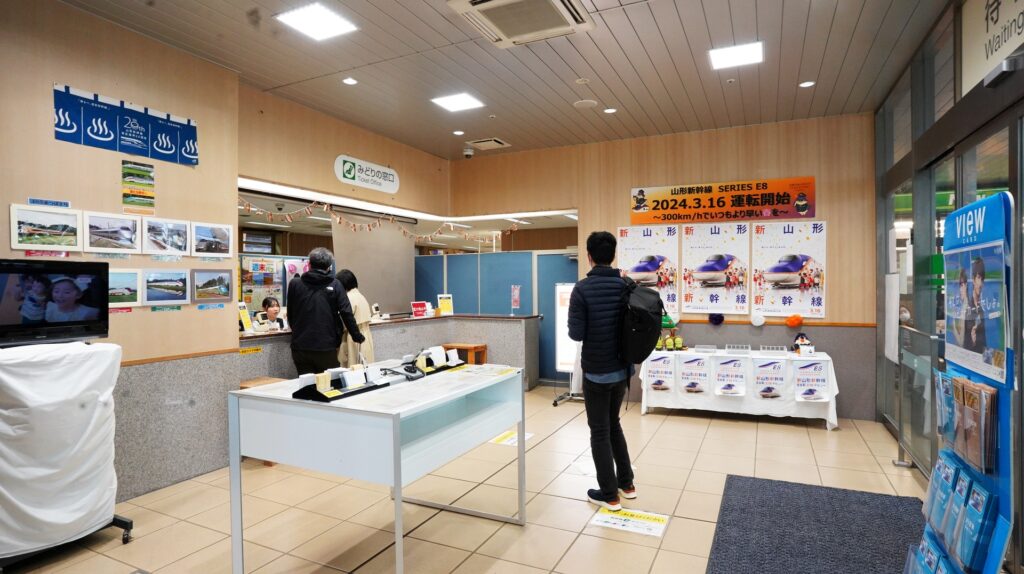
I also noticed move celebratory posters and banners on display.
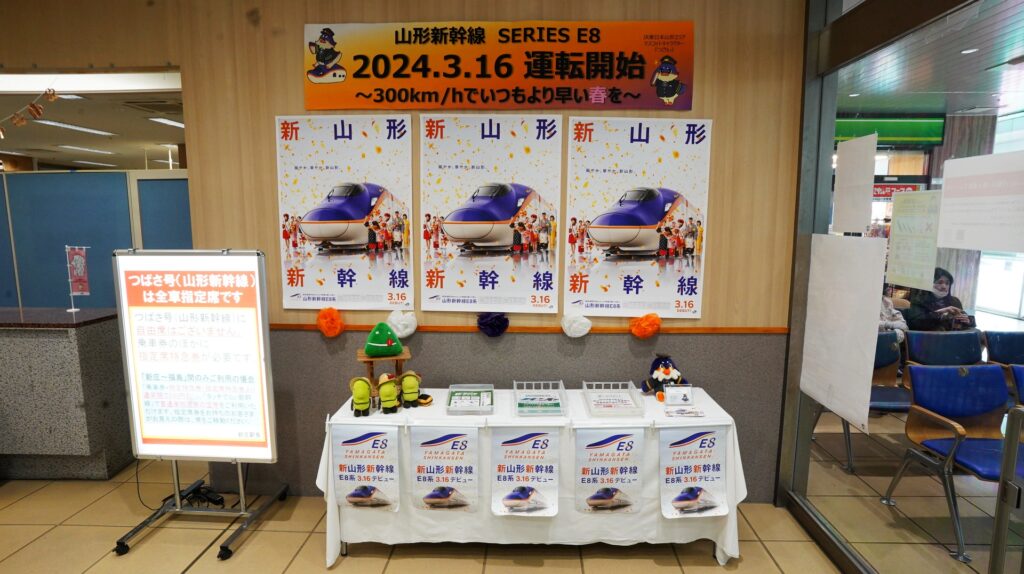
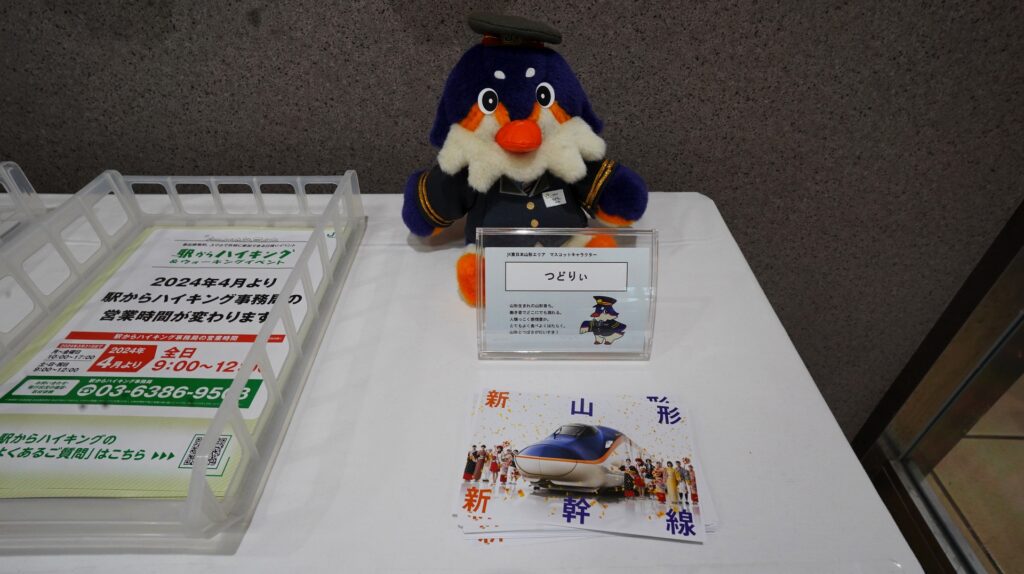
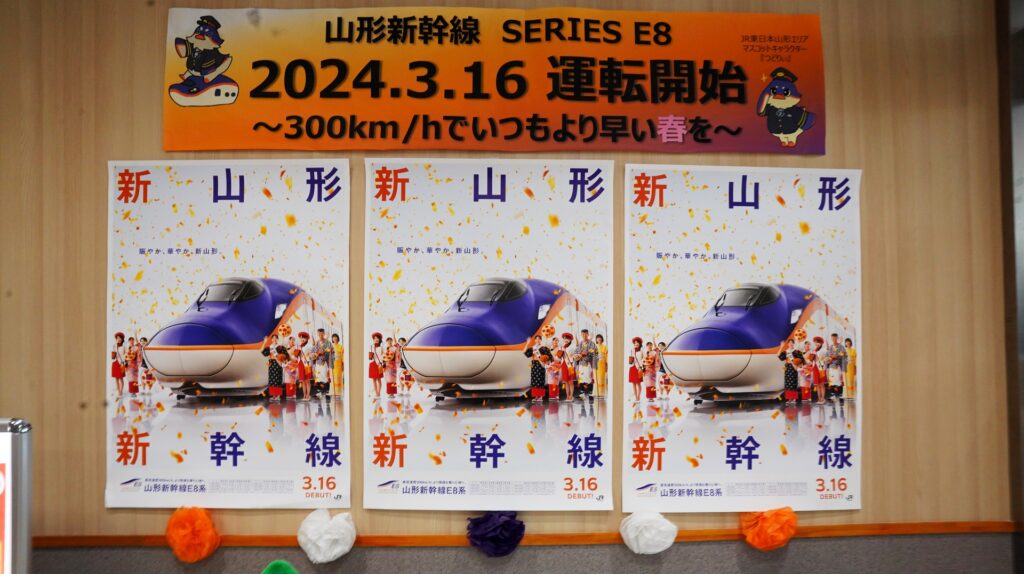
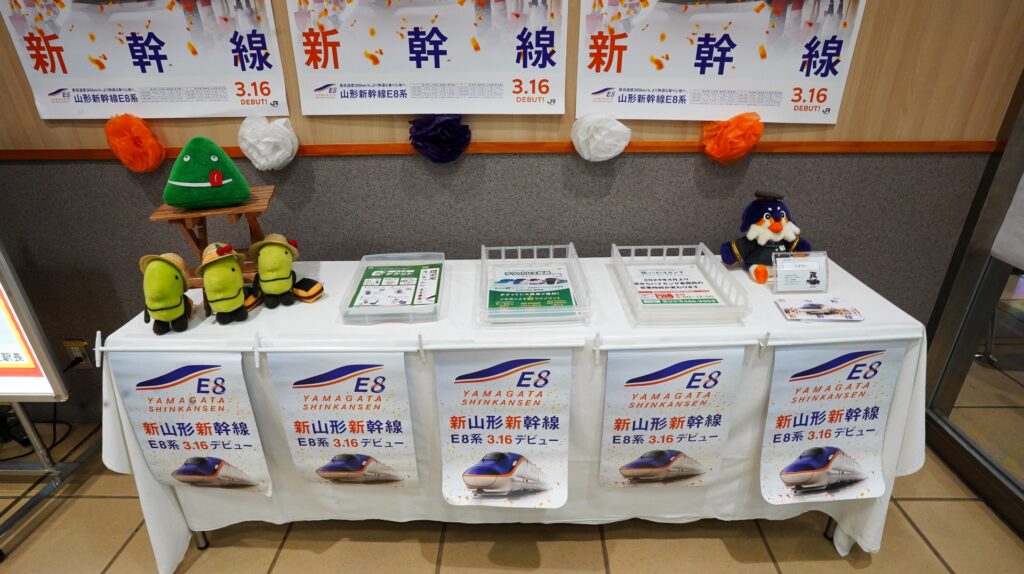
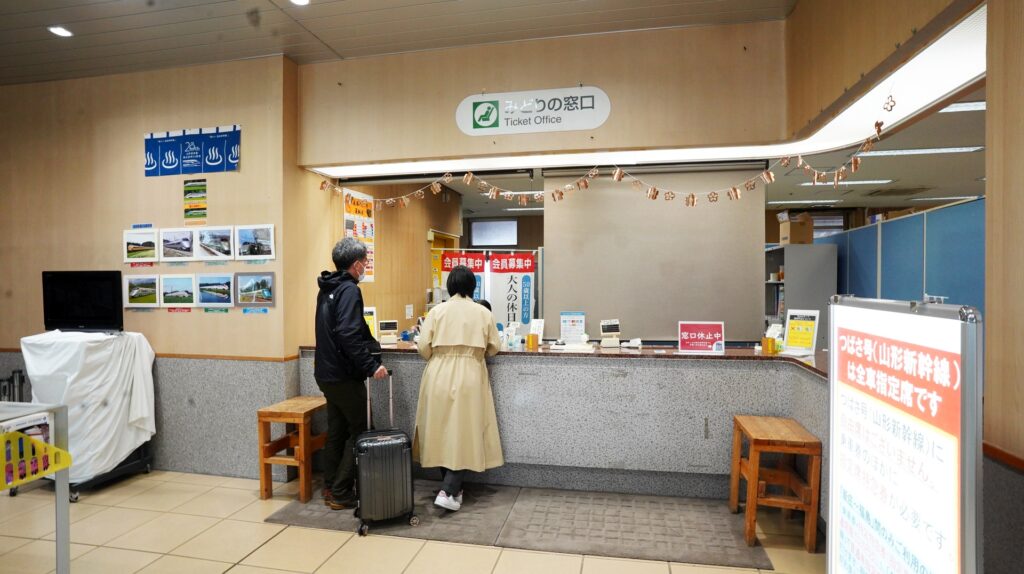
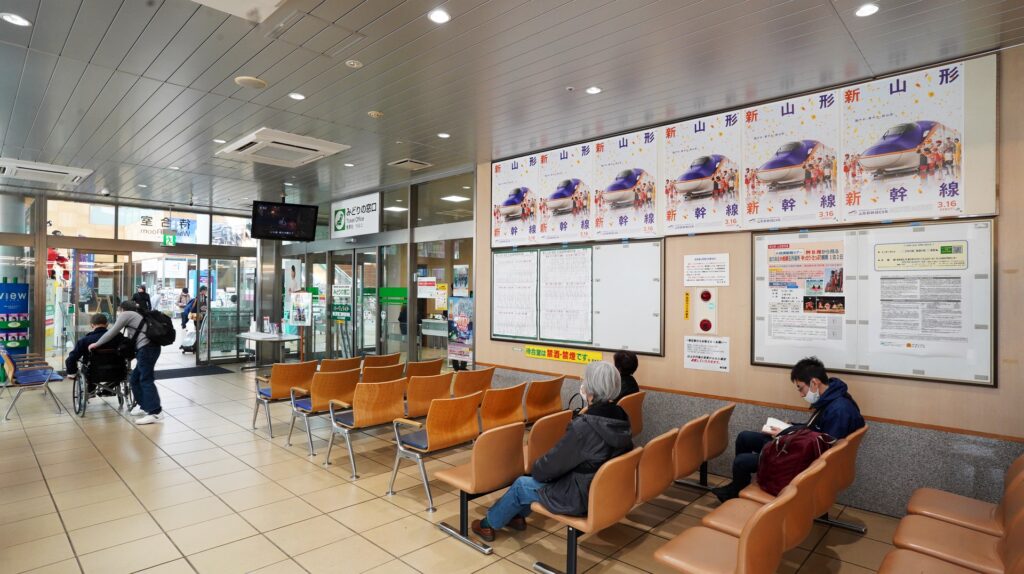
JR also hosts and showcases photography competitions. There’s also storage lockers available for use.
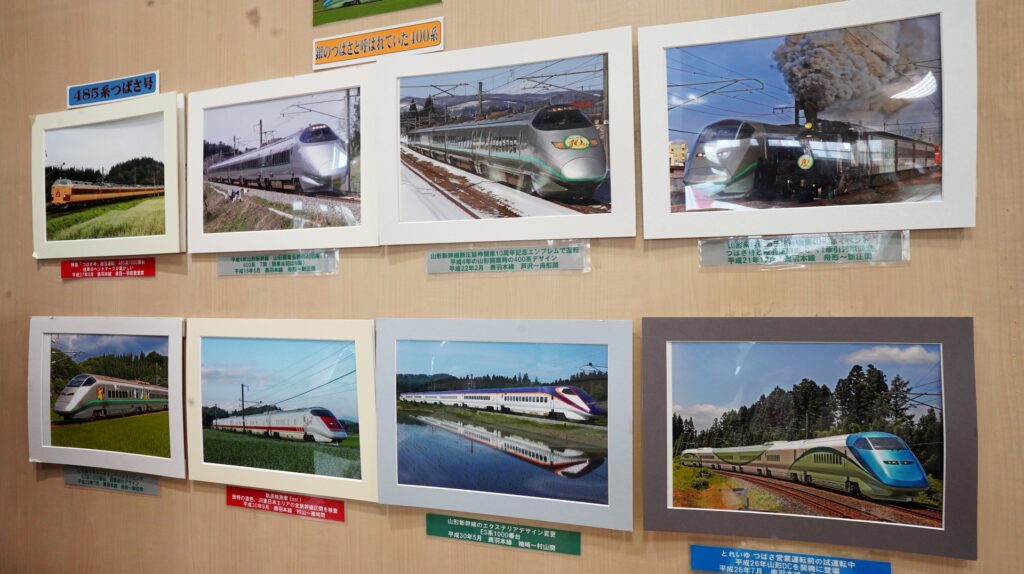

I was invited to enter the platform area at 12:55pm, about 25 minutes ahead of departure.


The best part of linking an IC card to your Shinkansen is rapidly being able to enter the platform areas.
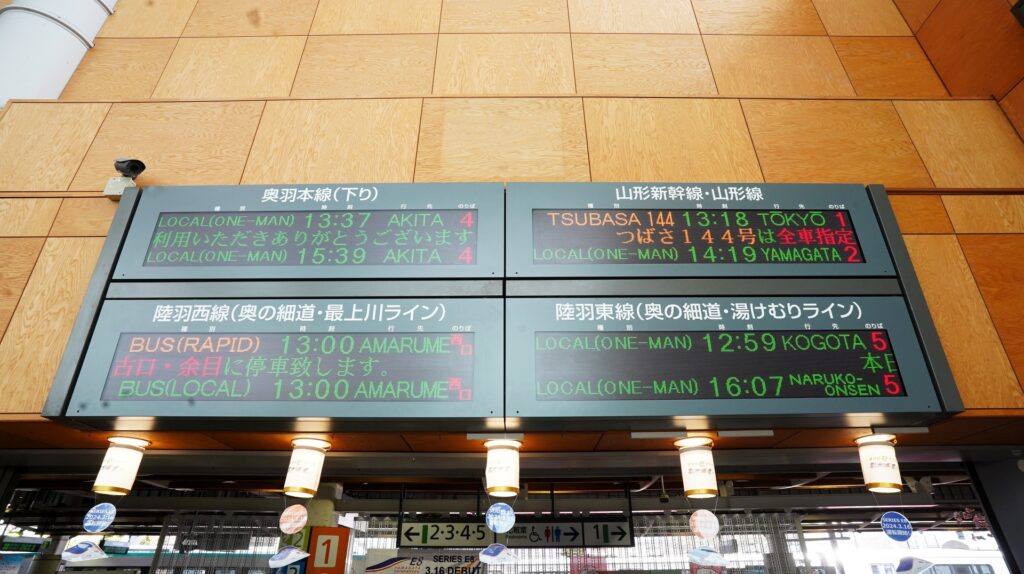
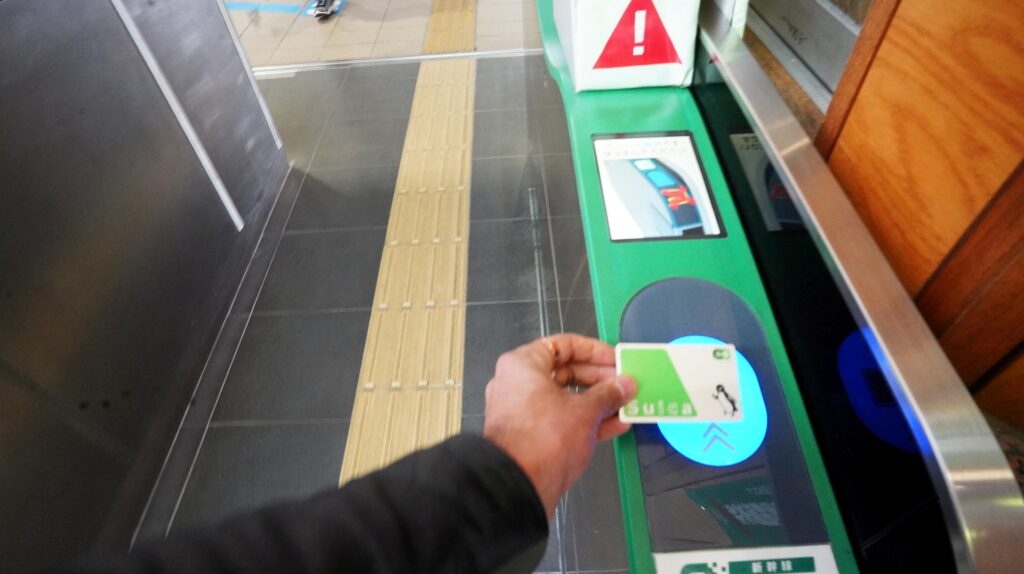
There are tons of celebratory displays for the Series E8 train on the platforms as well.
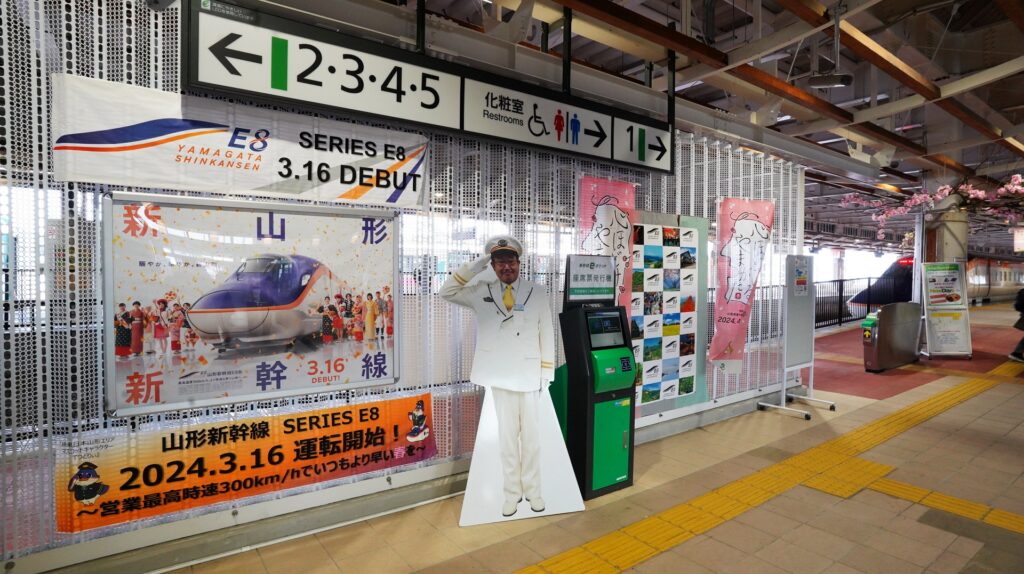
I spent most of this time photographing the train and its interior.
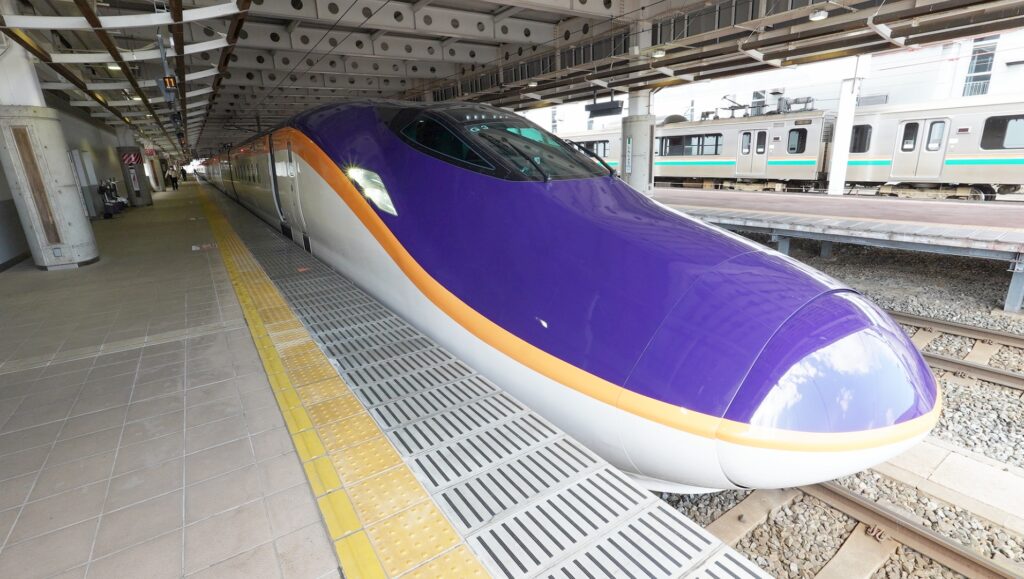
We started the train completely empty, with just one other person in the cabin with me.
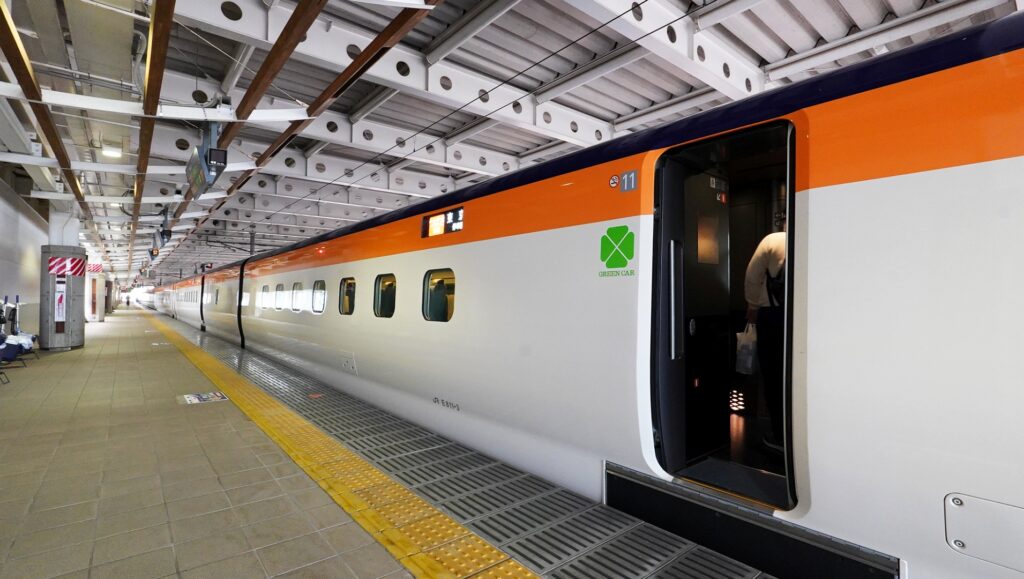
On the southbound run, the train also made all local stops between Yamagata and Yonezawa, and did not fully run express between Fukushima and Saitama/Tokyo. This train makes nearly all local stops on the way to Fukushima.


The Green Car was completely full on the ride back. Mostly this was due to a group of employees returning to Tokyo after visiting a production factory in Yamagata.
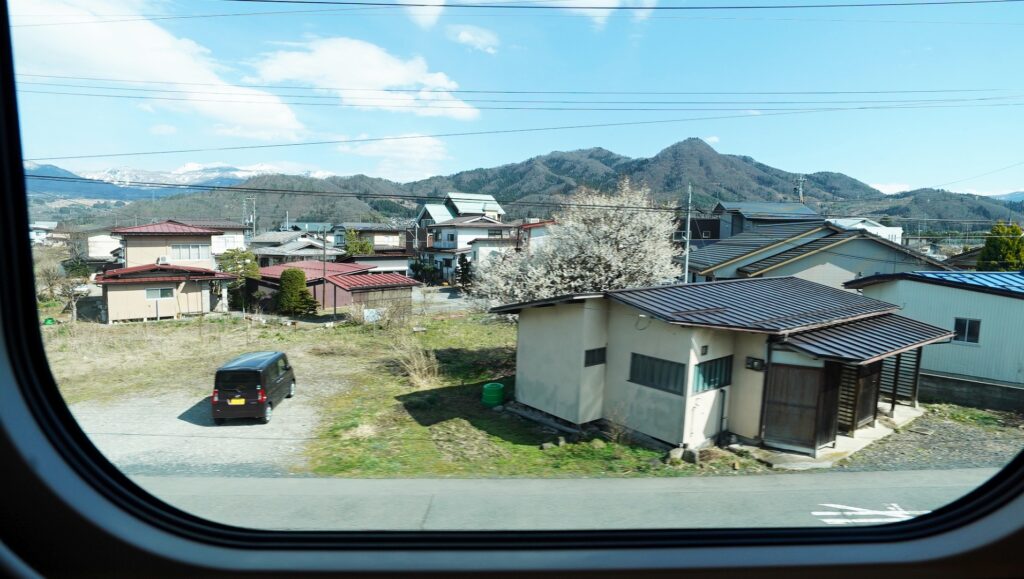
This area has many factories and farms that also support the general Japanese economy, and thus this train line is a critical link between the production facilities in Northern Japan, and the headquarters in Tokyo in the south.
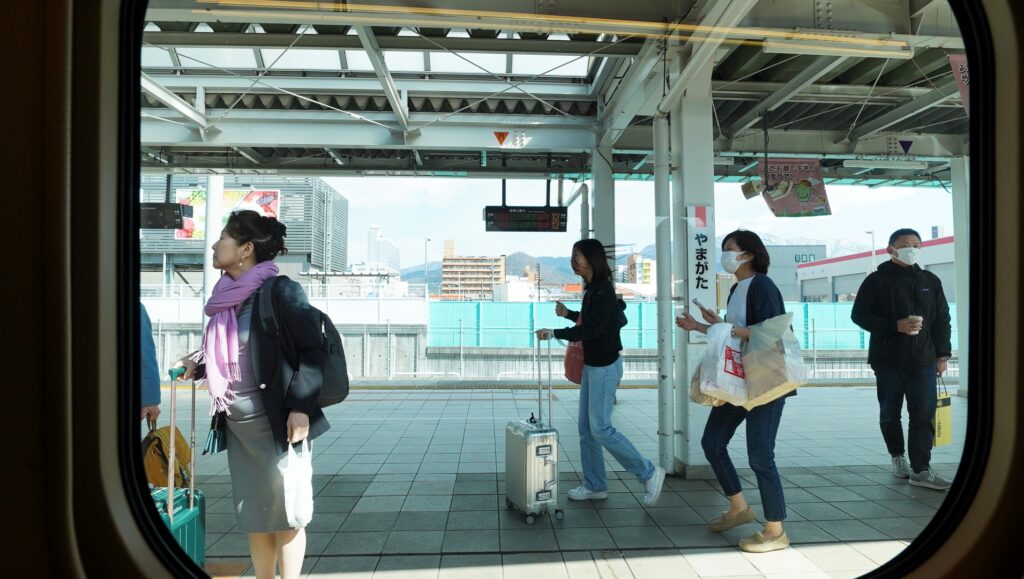
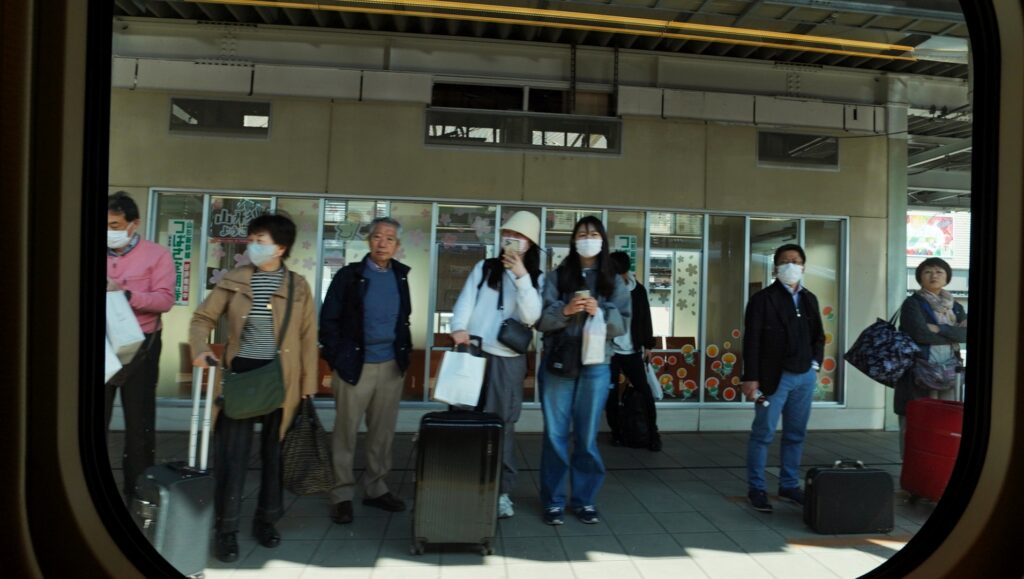
It seems the demand for the Green Car on this route really exceeds the capacity available, something to be aware of.
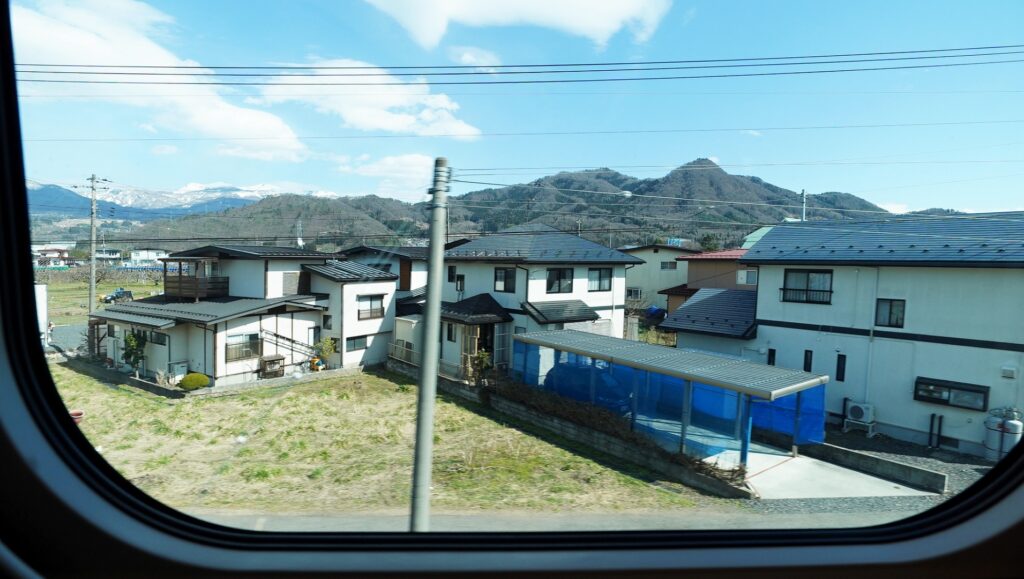
The line turns east after Yonezawa and runs back thru the mountain range that separates this area from eastern Japan. The line runs thru many tunnels and snowsheds, and also winds thru the mountain range with very tight curves.
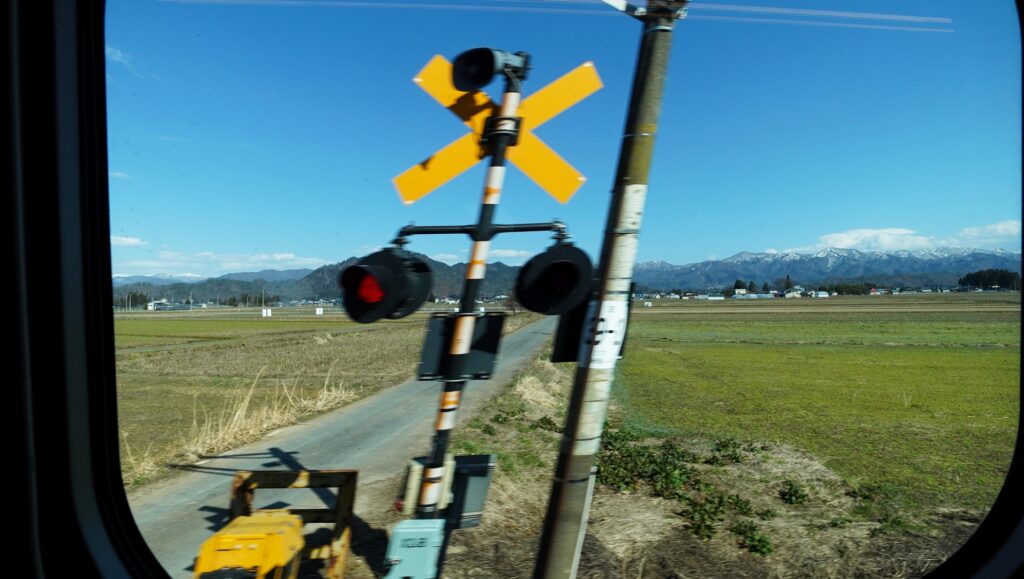
The train ride is totally quiet, and very smooth – it’s easier to hear the air conditioner above, than the sound of the train itself.
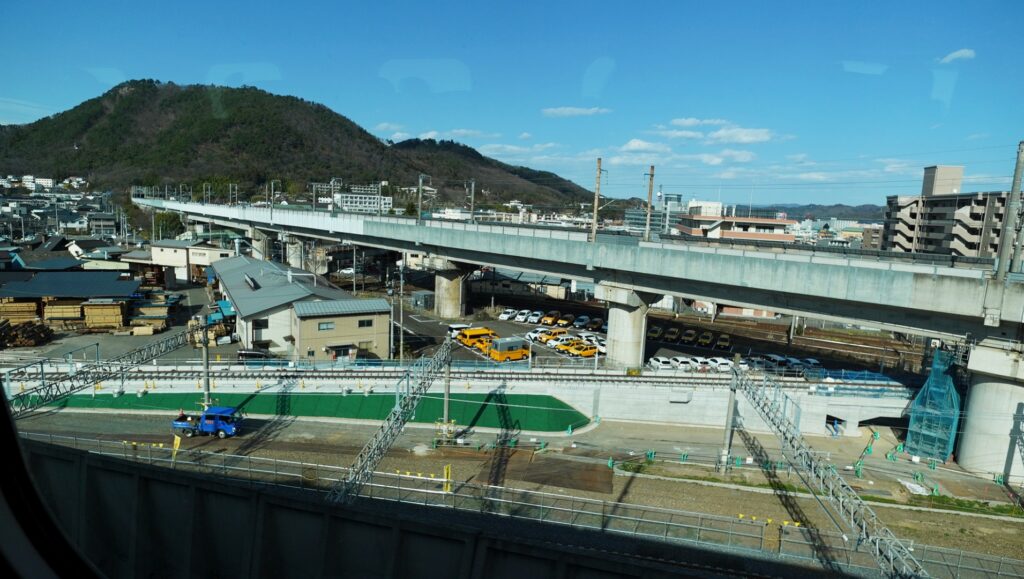
At Fukushima, we connected to the Tohoku Shinkansen train. This stop took a bit longer, with two mounts of breaks, and then there was a slight bump when the connection was made to the train in front of us. The stop took about two minutes once again.
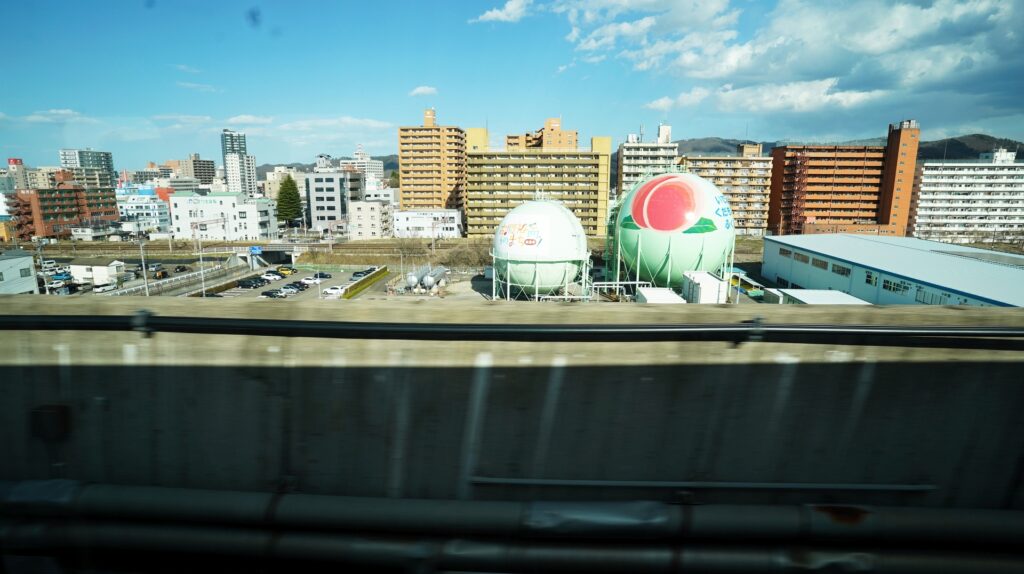
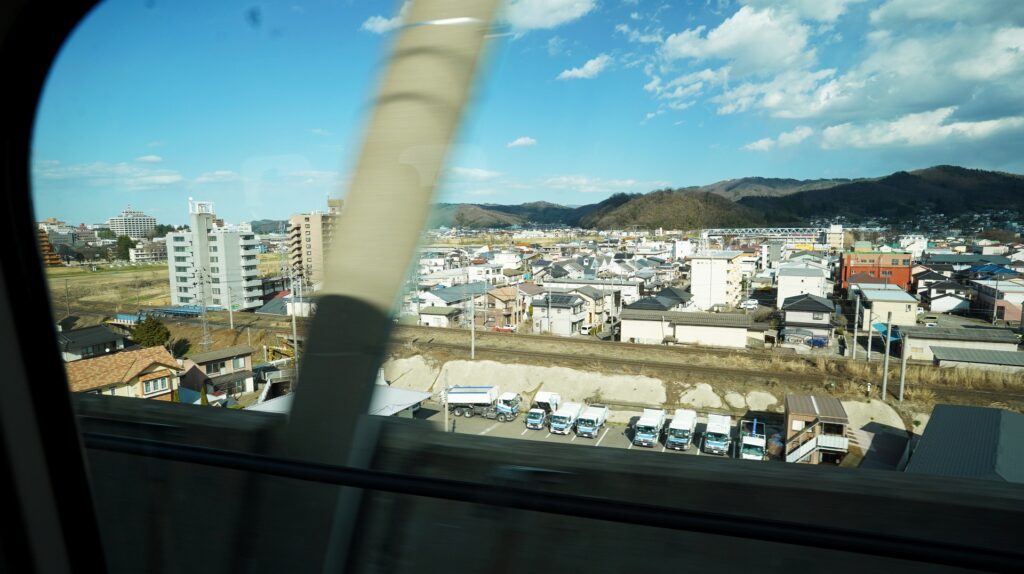
Now, we’d make another express run south to Omiya station in Tokyo, with stops at Koriyama and Itsunomiya. There were far more stops on the southbound run of the train, than on the northbound run.
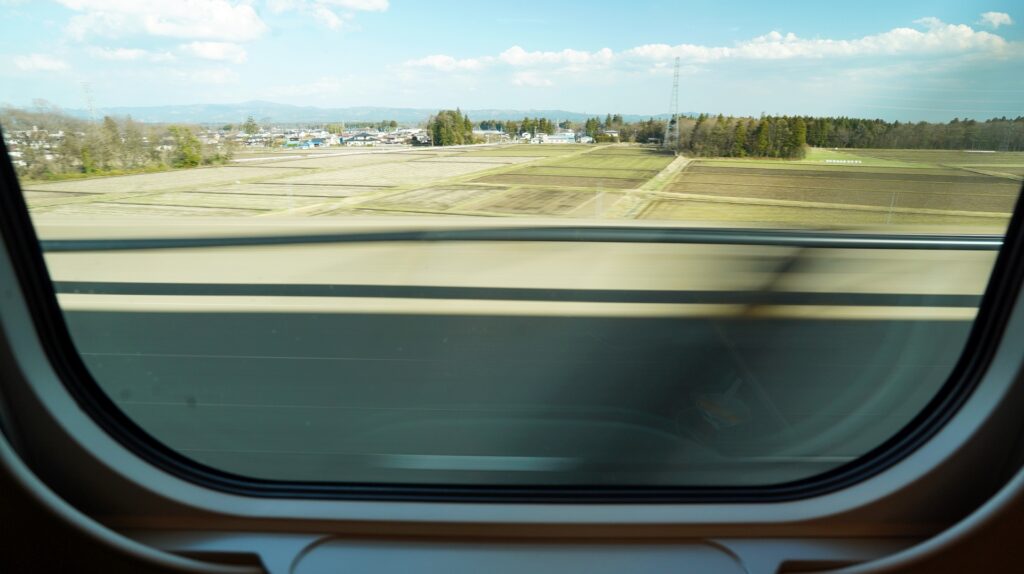
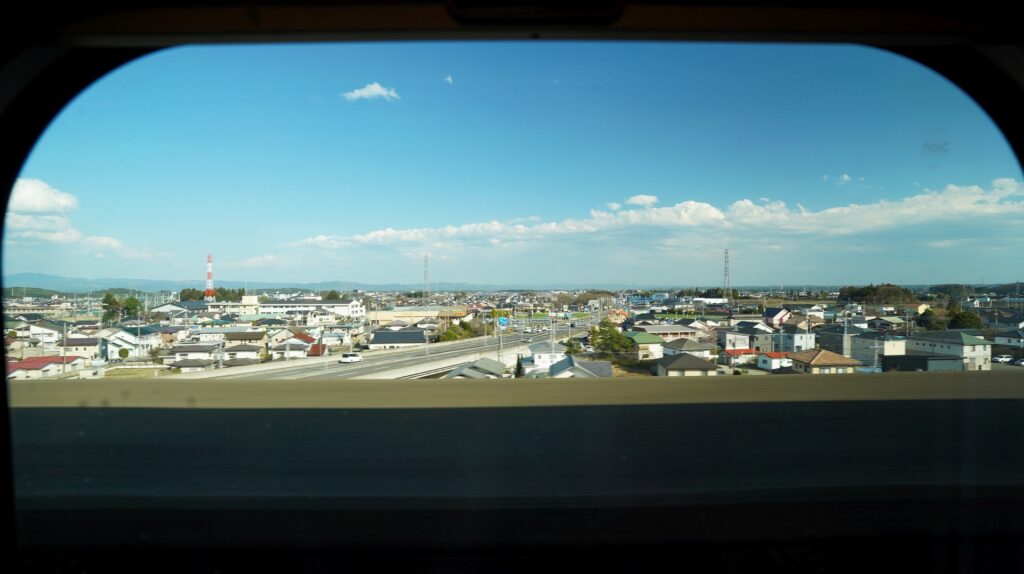
Equally important, the southbound train in the afternoon was far more crowded than it’s northbound counterpart.
WiFi (Southbound)
I connected to the WiFi network on both runs. On the Southbound run, I also connected with my phone.
The easiest option for most will simply be to enter in your email address; a temporary connection is granted for ten minutes, and then you click a link on the email issued to that address to complete the connection.
I thought the WiFi was both very stable, and the speeds were pretty fast – at first. Google Maps pulled up easily, as did sending videos on Telegram.
When we got on the Tohoku line south of Fukushima, WiFi speeds really slowed down. Perhaps it’s due to congestion in the car, but this made uploading anything impossible.
I found the WiFi to be weak overall, on the southbound run.
Service
On the three hour run, the cart for service came down the aisle about three times. For the small size of this cabin, it was also easy to miss the service. Payment can be made by IC card, Credit Card, and Cash.
One thing that is NOT available on this train is hot coffee, unfortunately. That’s definitely disappointing, but at least they still offer bottled ice coffee.
On the southbound run, I elected to try the ice cream available on the train. This has recently been removed from the JR Central Tokaido Shinkansen (between Tokyo and Osaka), but it’s great they’re still available on the JR East lines.
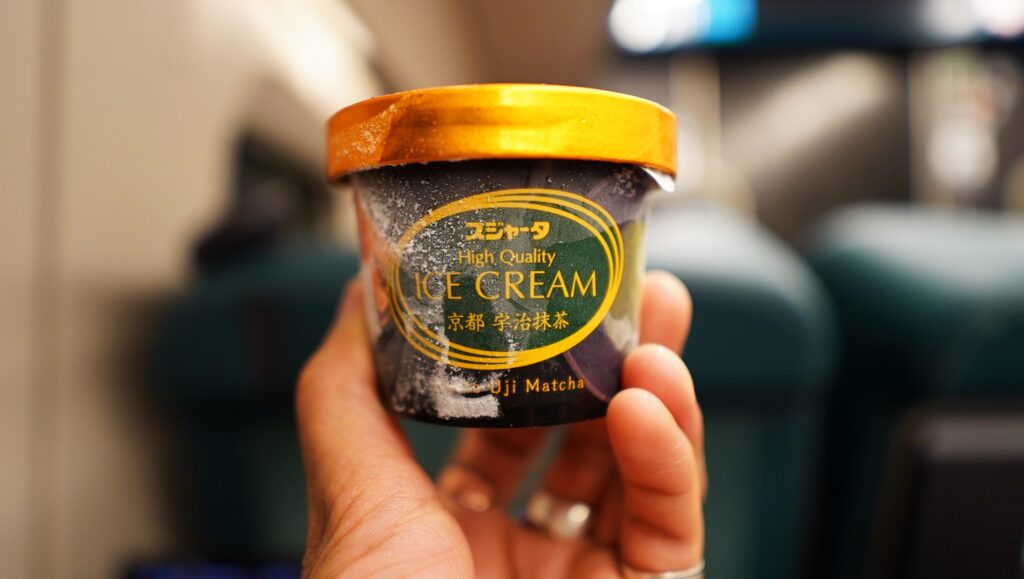
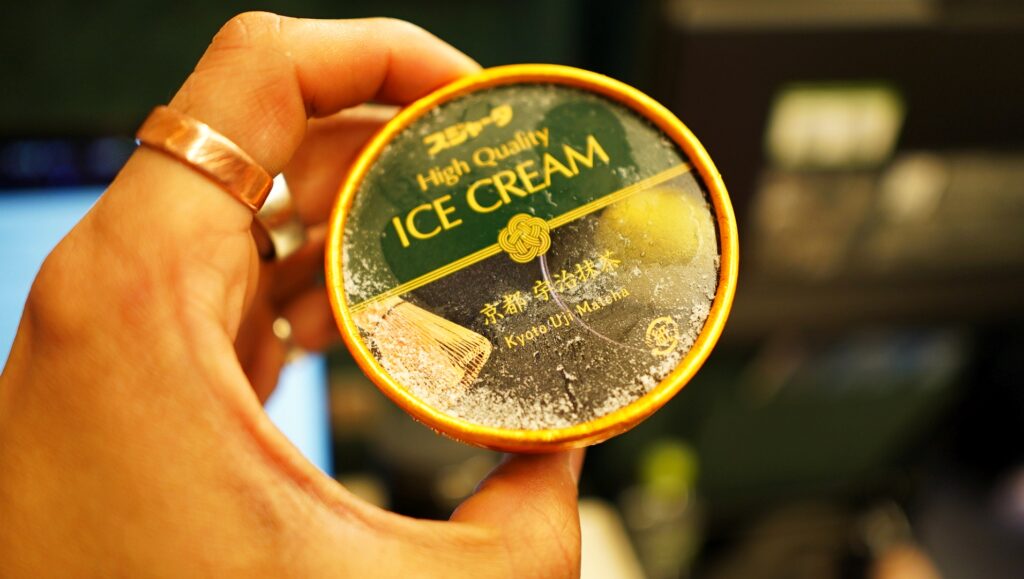
I requested the matcha ice cream, which came frozen cold and extremely hard.
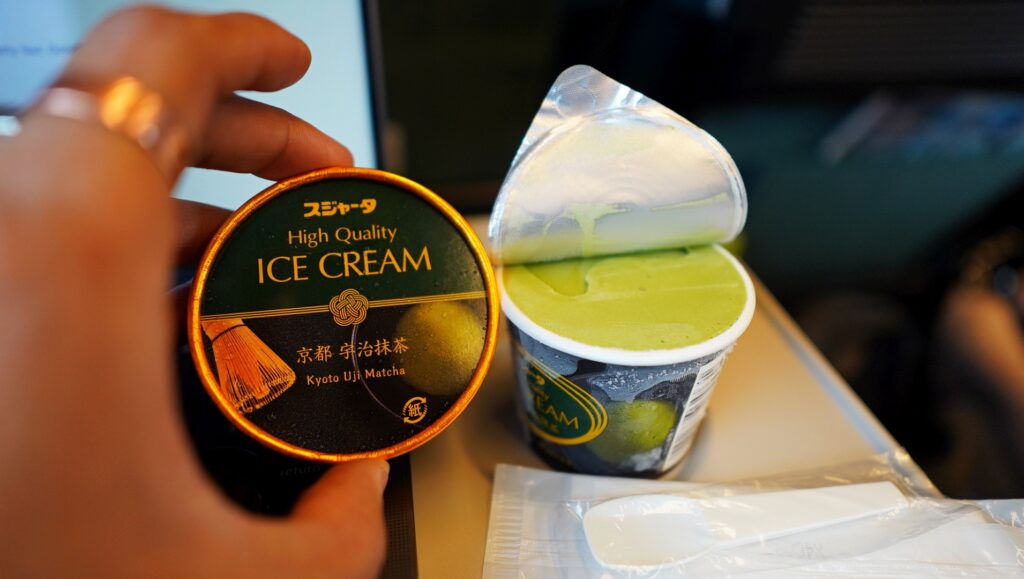
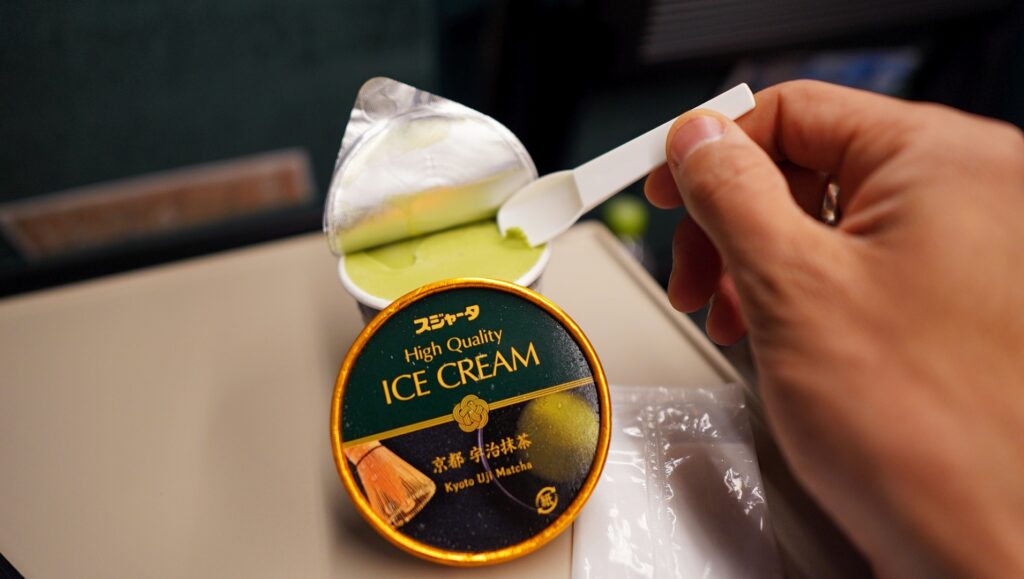
And, it was absolutely delicious! I could have easily used my E8 series spoon with these.
Series E8 Launch Goodies
Though I didn’t request any on this run, the same souvenirs are available on this run.
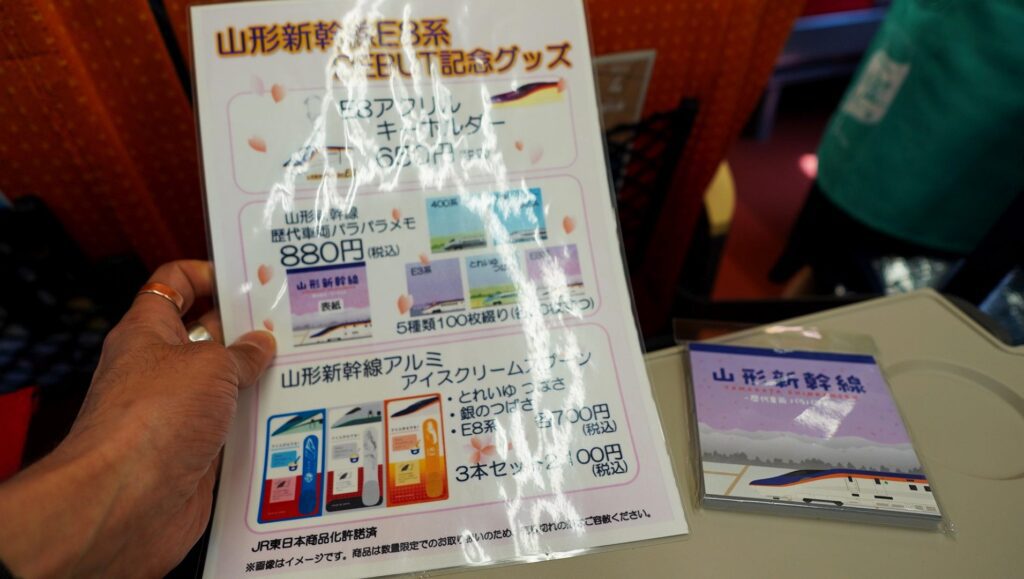
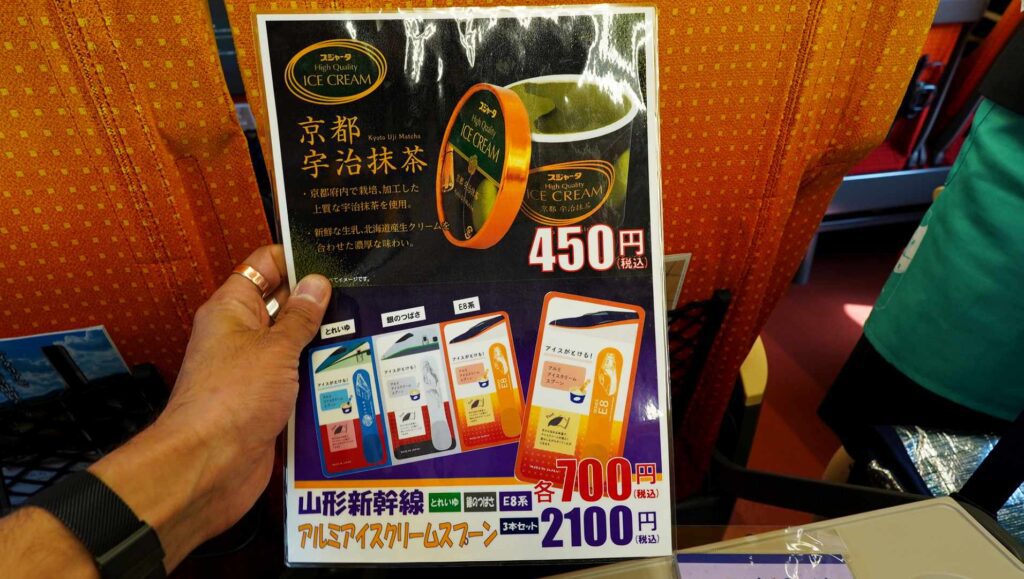
The selection is a bit more limited than on the Hakutaka Shinkansen train.

There is a Series E8 keychain available, a Yamagata Shinkansen notepad that shows all the different train sets used on this line, and also a set of ice cream spoons for the E8 series.
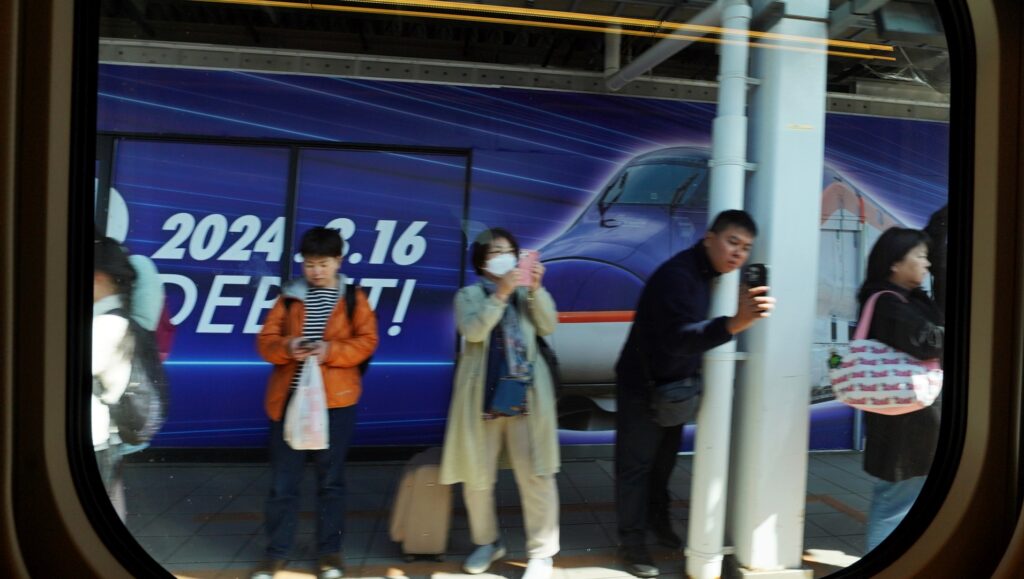
It’s so cool that train nuts are celebrated in Japan – it’s worth noting that literally at every single station, there were photographers, children, and plenty of adults recording the launch of this new train.
Getting Off The Train in Tokyo
After a long while from Utsunomiya…
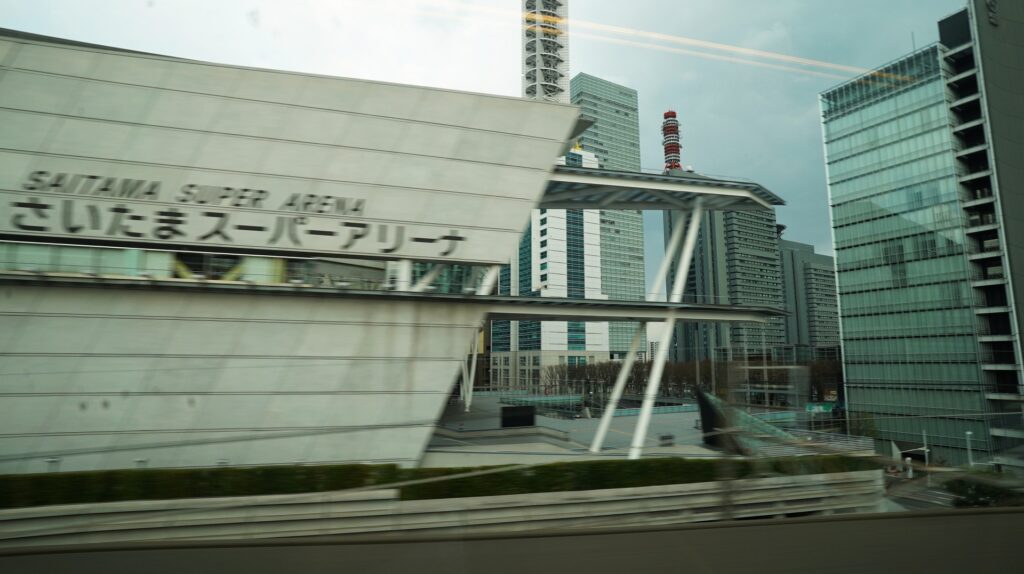
…we finally made it to Saitama and Omiya station.
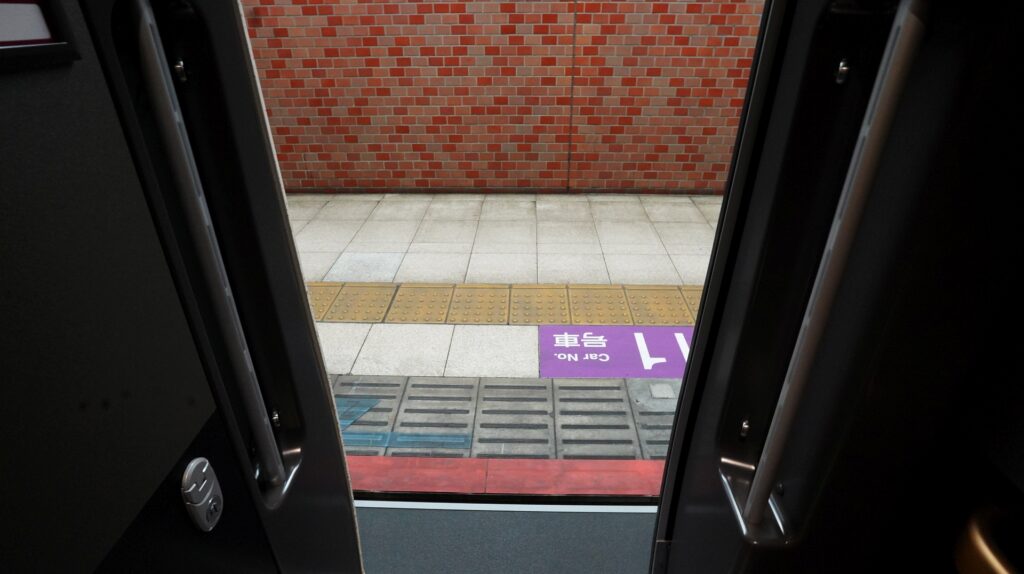
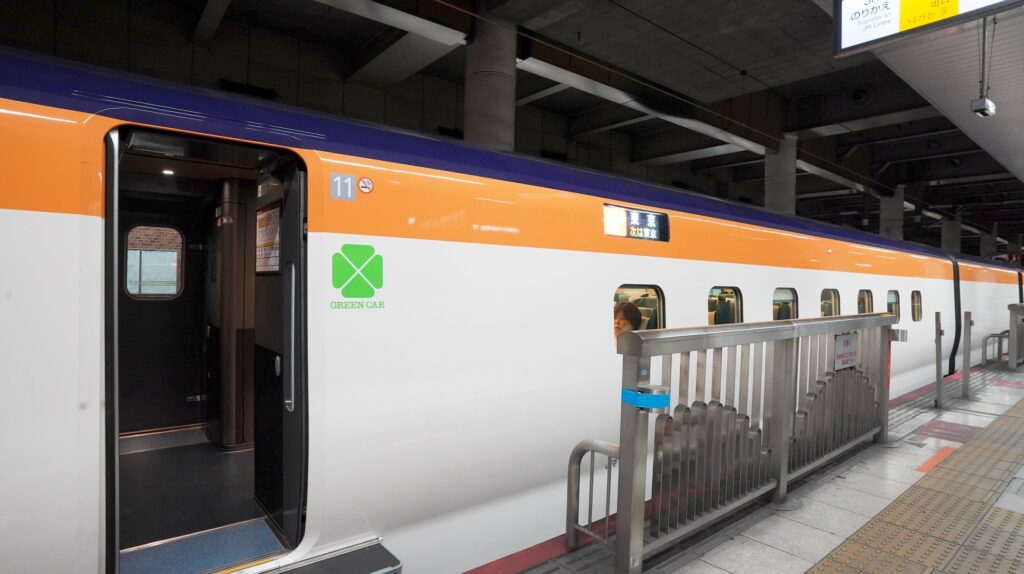
This is only a twenty minute ride away from Tokyo’s Ueno station, where I was to get off.
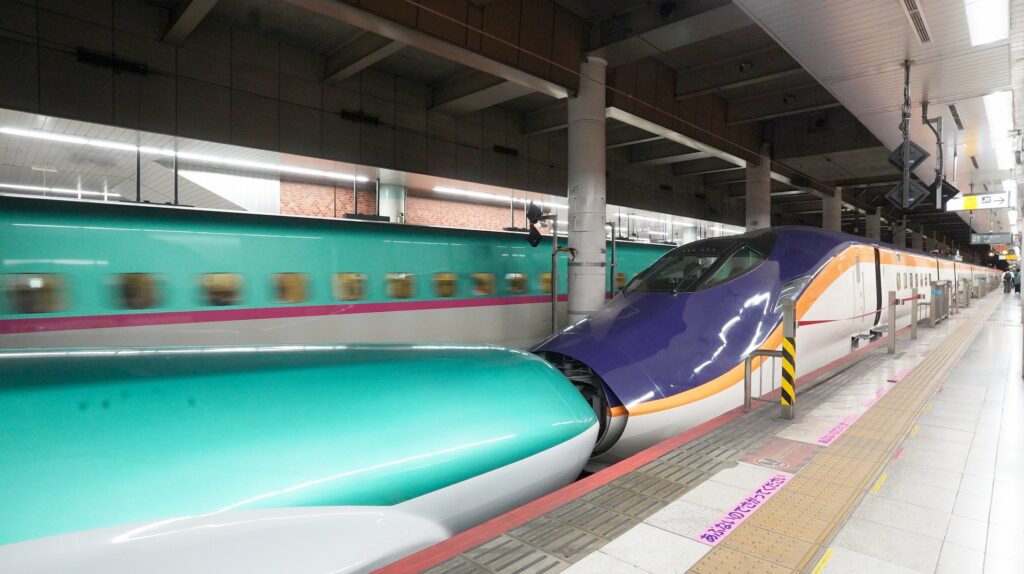
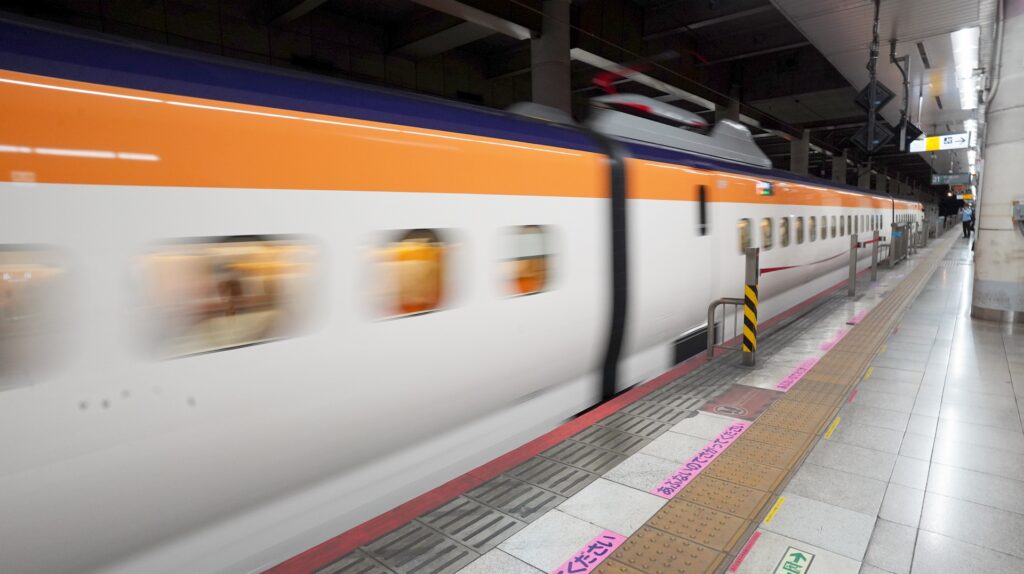
The train makes a very brief stop at Ueno station, before continuing on to Tokyo Central station where the line terminates.


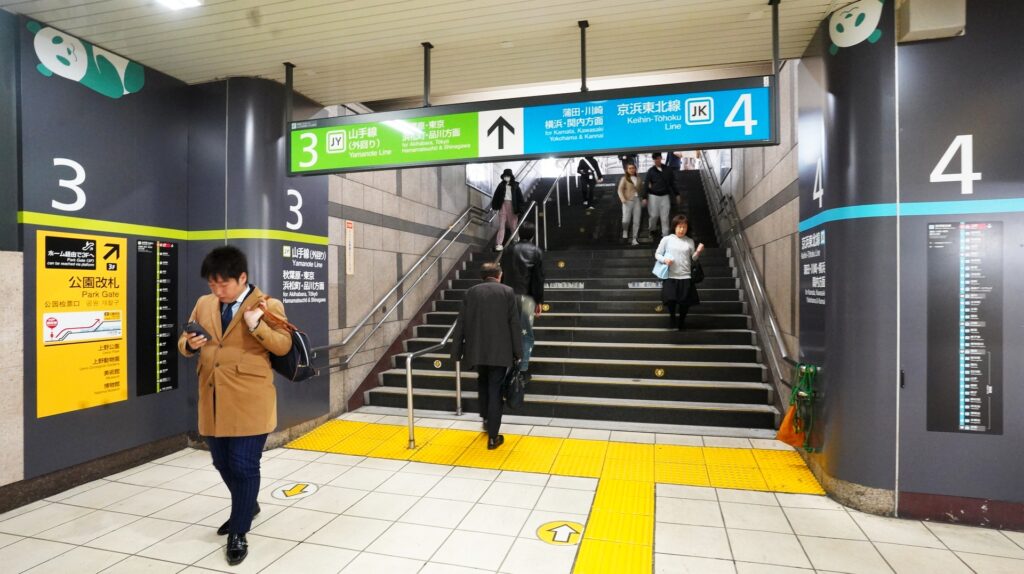
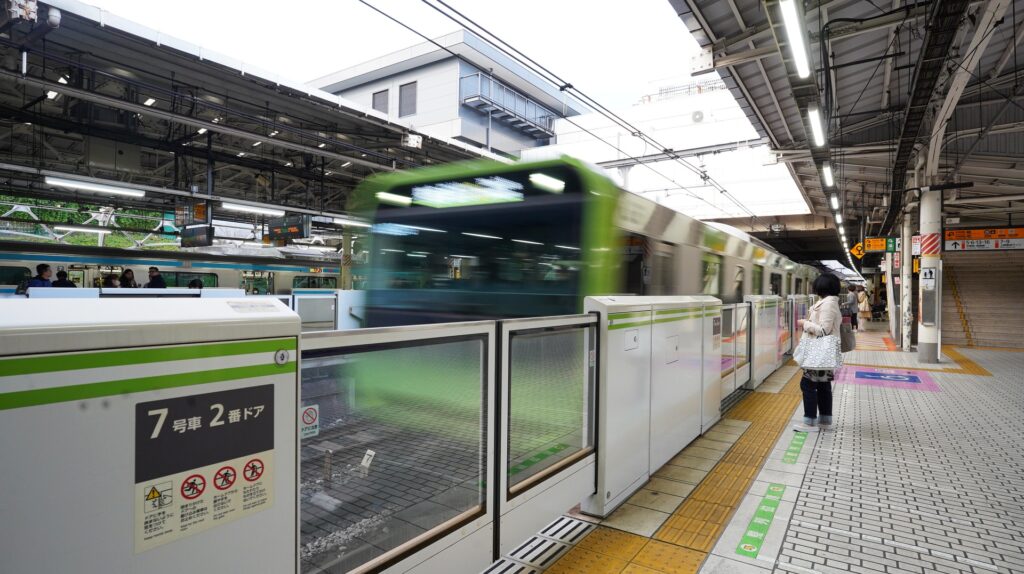
I made my way thru the maze of the Ueno station to the Yamanote Line (Circle Line).
Final Thoughts
I think the Shinkansen is hands down the best high speed train system in the world, and JR East is in my opinion the best system out of the five in Japan.
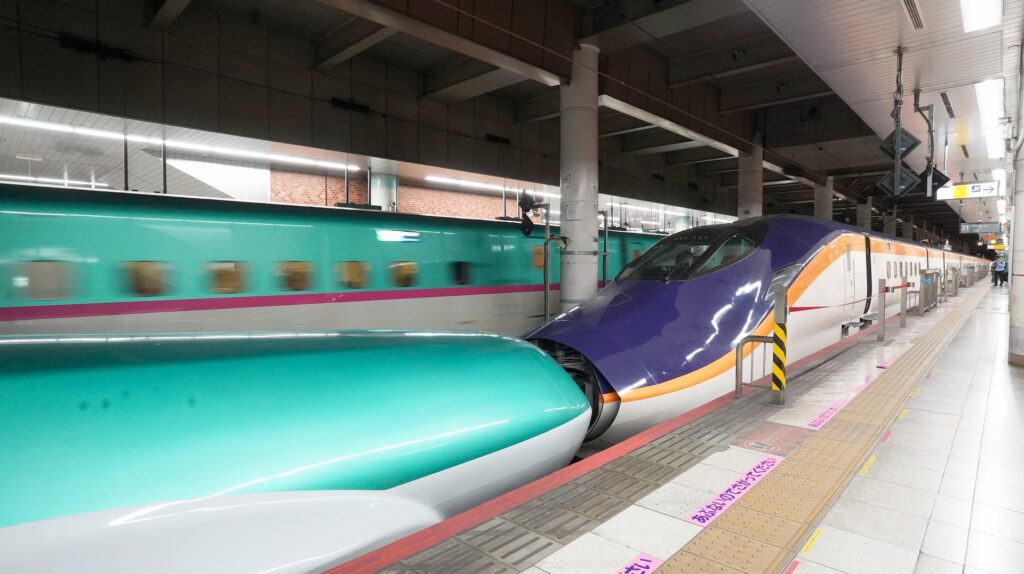
The E8 Series is an awesome upgrade over the E3 series.
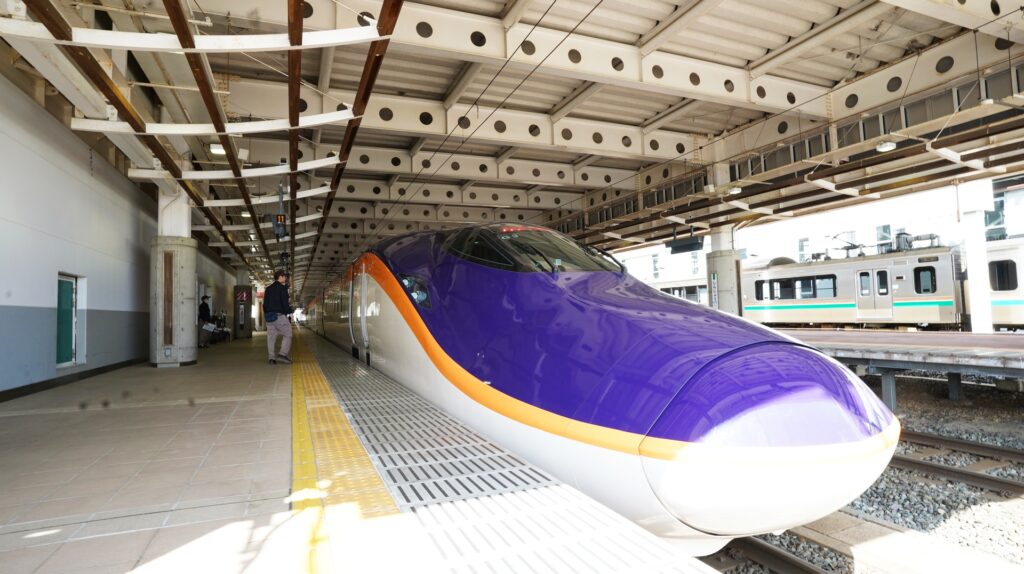
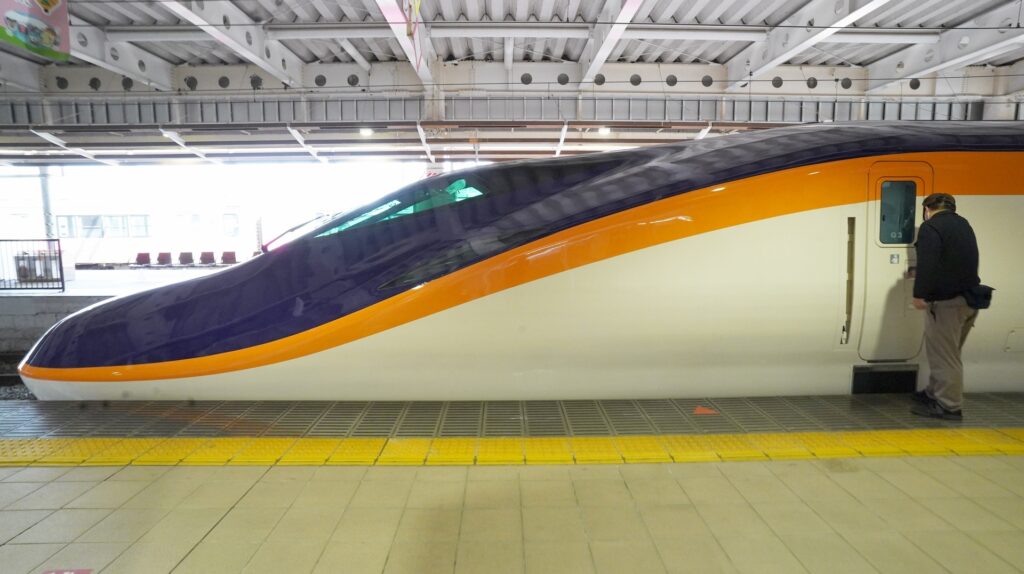
The Green Car cabin is quiet and extremely comfortable. The biggest difference between classes is in the seats.
Verdict: 10/10
Honestly, in some ways I preferred the Standard Class over the Green Class on this train.


The Green Class was extremely congested on my run south – it was full – and that’s simply because there are many, many more seats in Standard Class.

That said, the Green Class seats are positively more comfortable and have better features, especially for sleeping on the ride. Standard Class offers under seat storage, and is better for partner travel. I’ve reviewed Standard Class here on the northbound run.
Choose Green Class if:
- You want privacy.
- You plan to sleep – the seats are much more comfortable.
- You need to read, and need an overhead reading light.
- You need additional working space for larger laptops and other papers.
- It’s also nice to have a second working and storage surface.
- If you’re heading southbound, you’ll be at the very front of the train.
Choose Economy Class if:
- You’re traveling with a partner or a group.
- You want to combine two seats into one with your partners, and sit/share the seat together.
- You want to save 5000 JPY and don’t care as much about seat comfort – they’re only mildly different.
- You want under seat storage for your belongings.


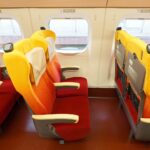
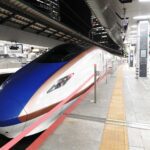
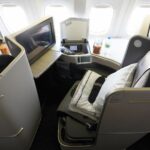

 Table Of Contents
Table Of Contents